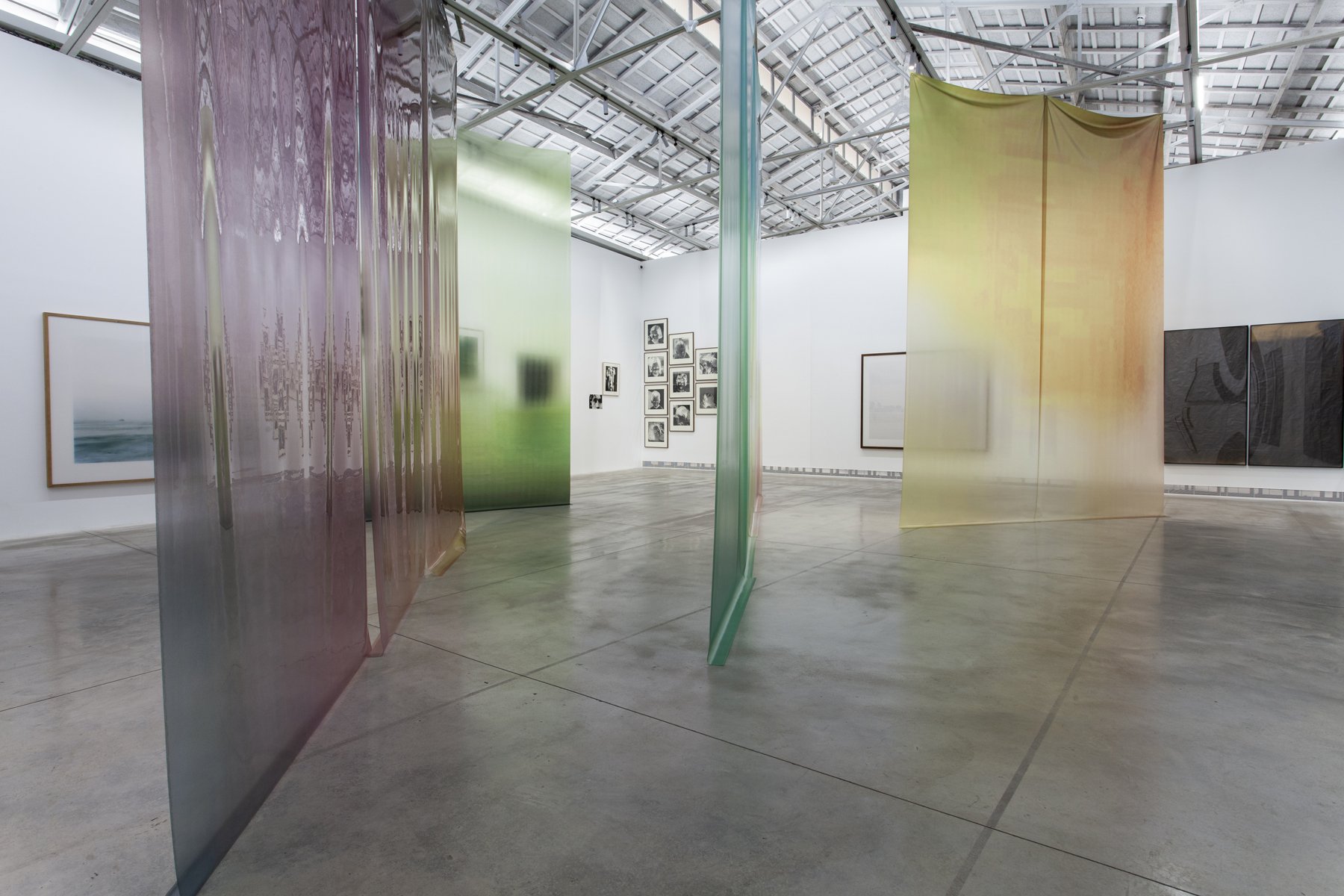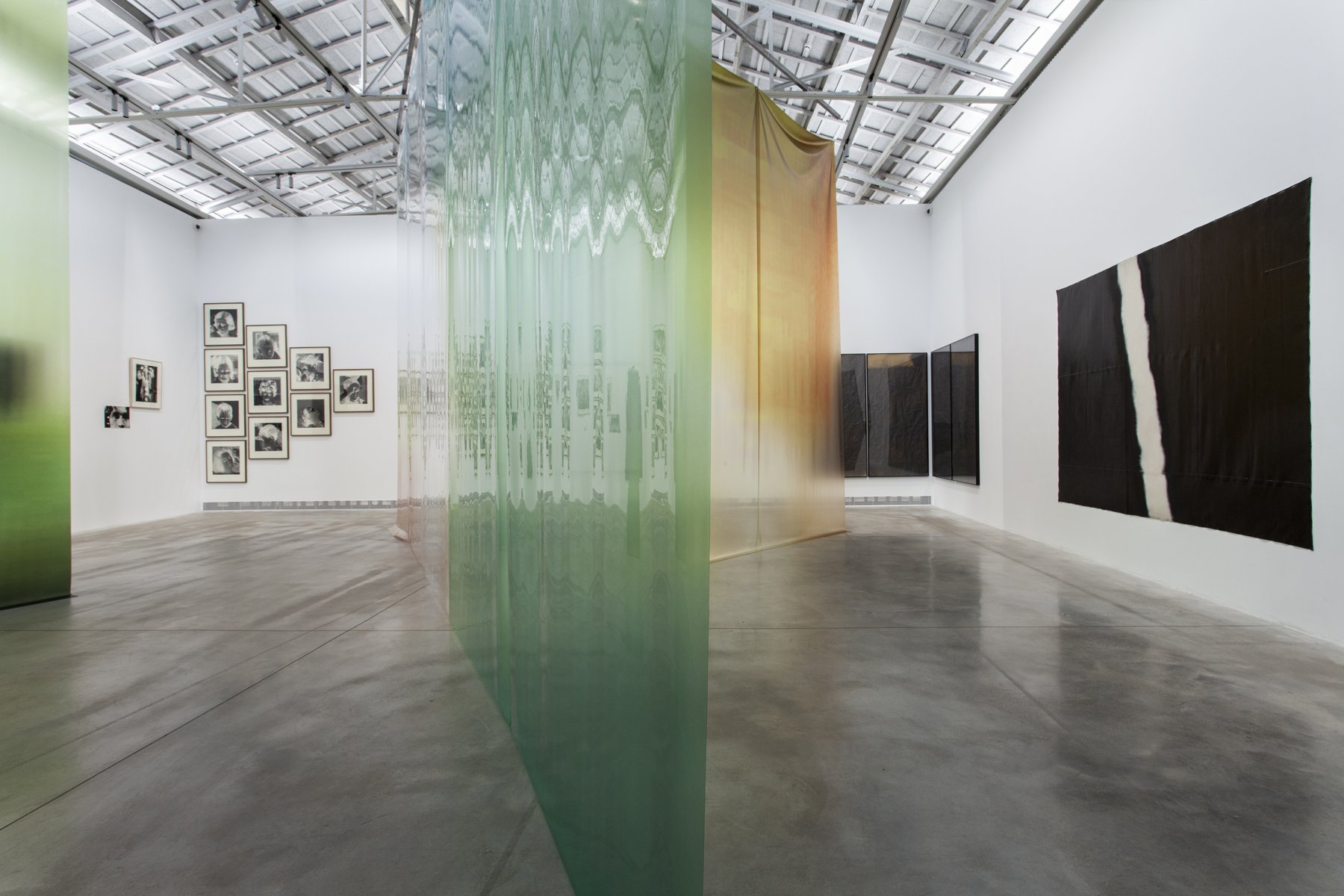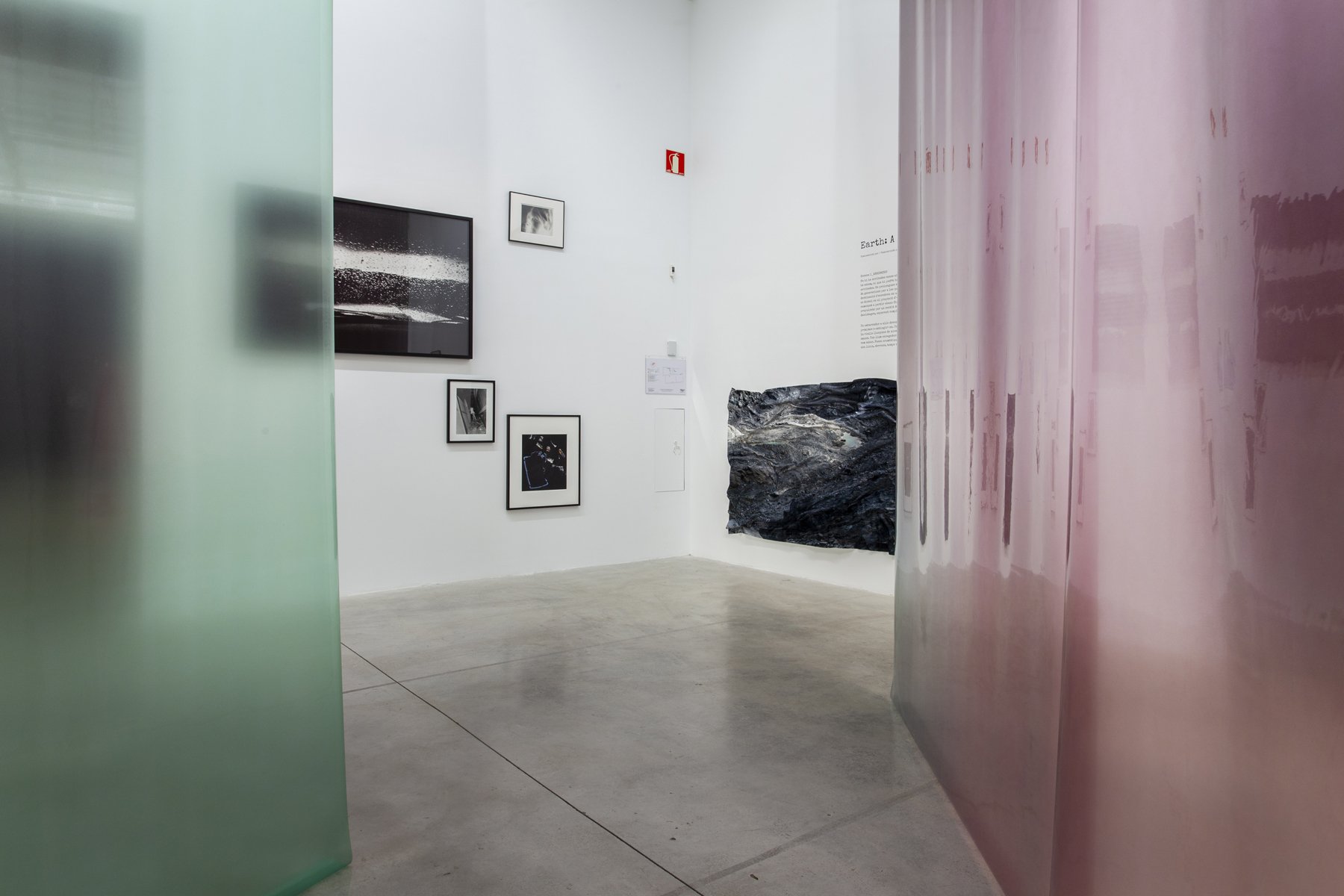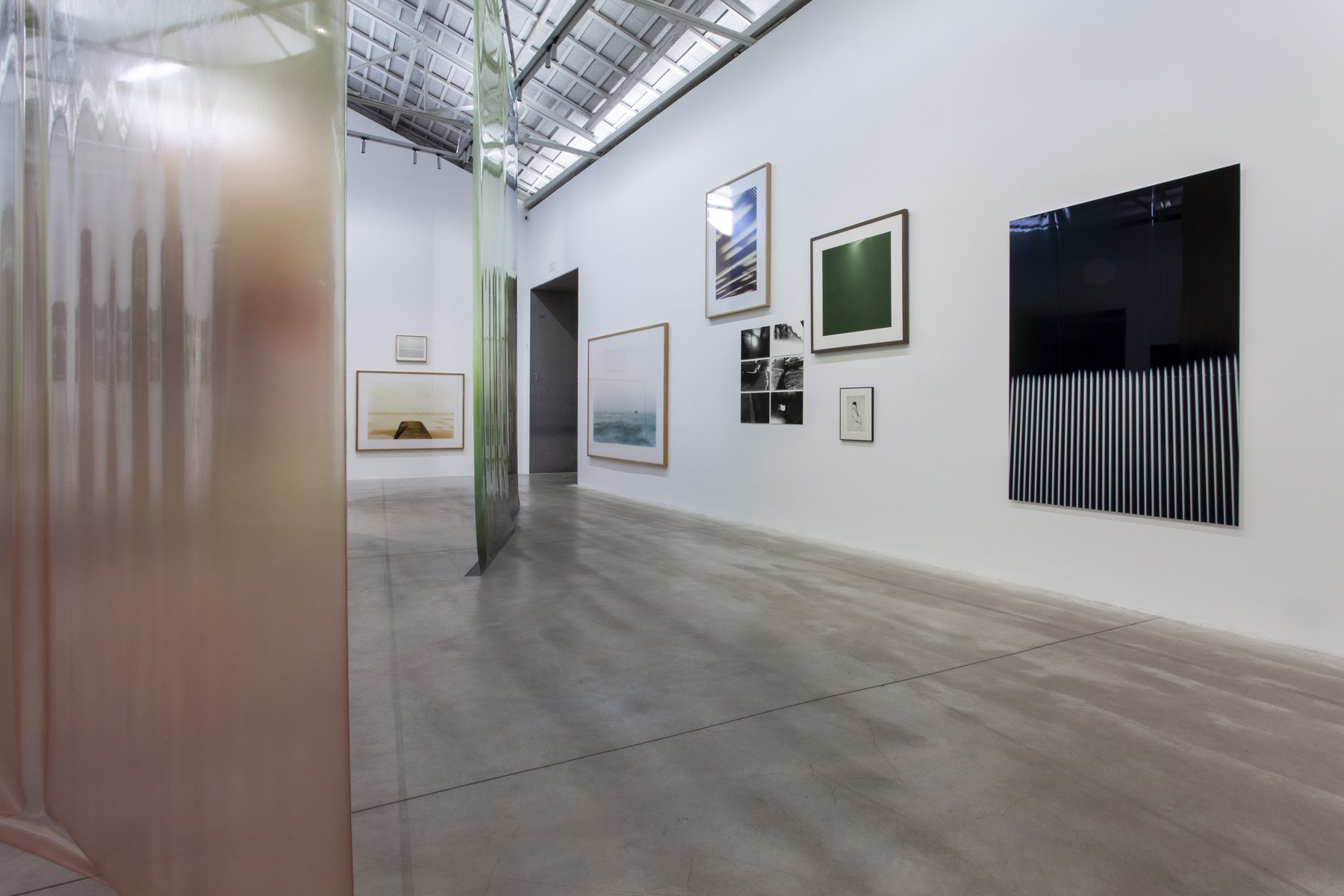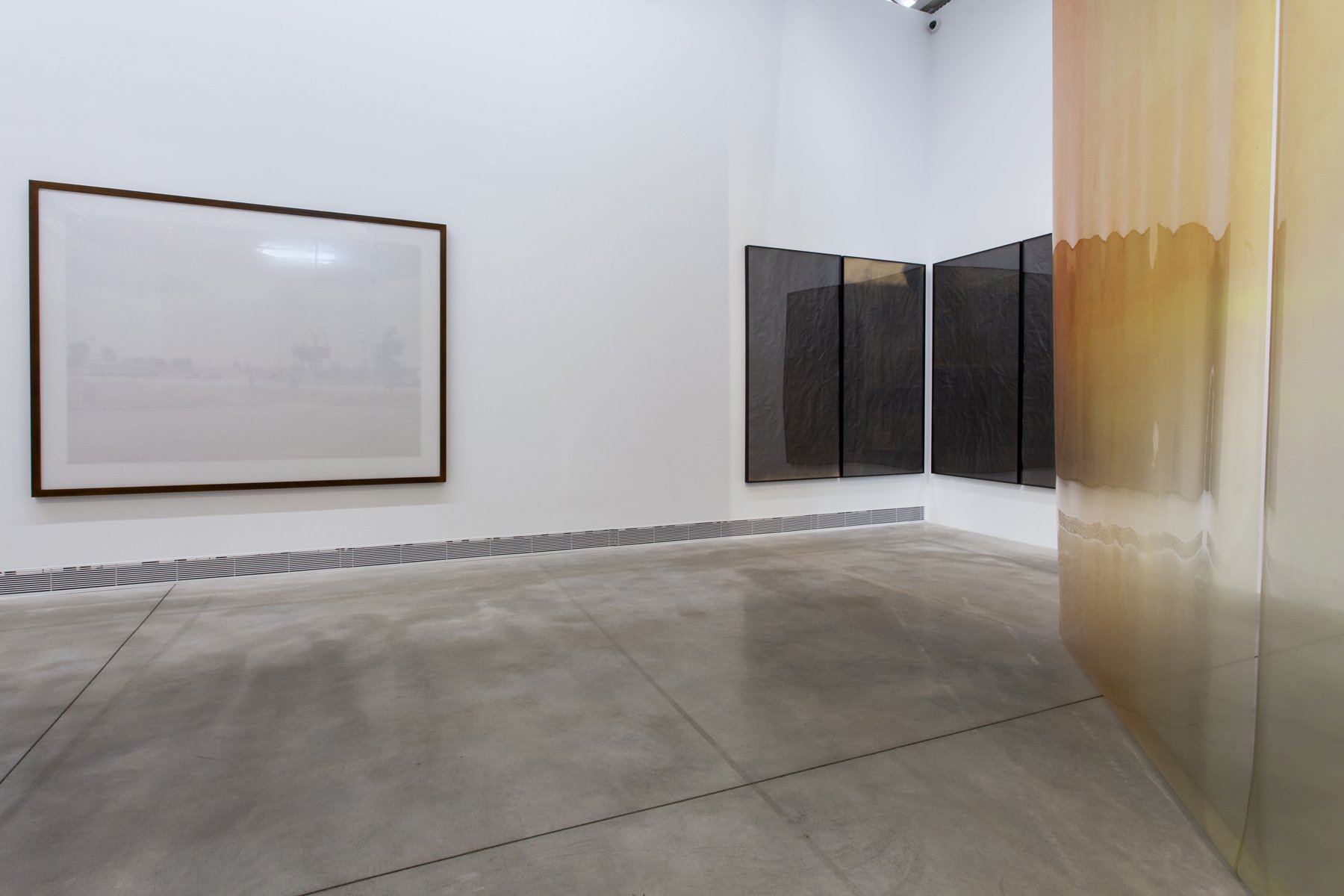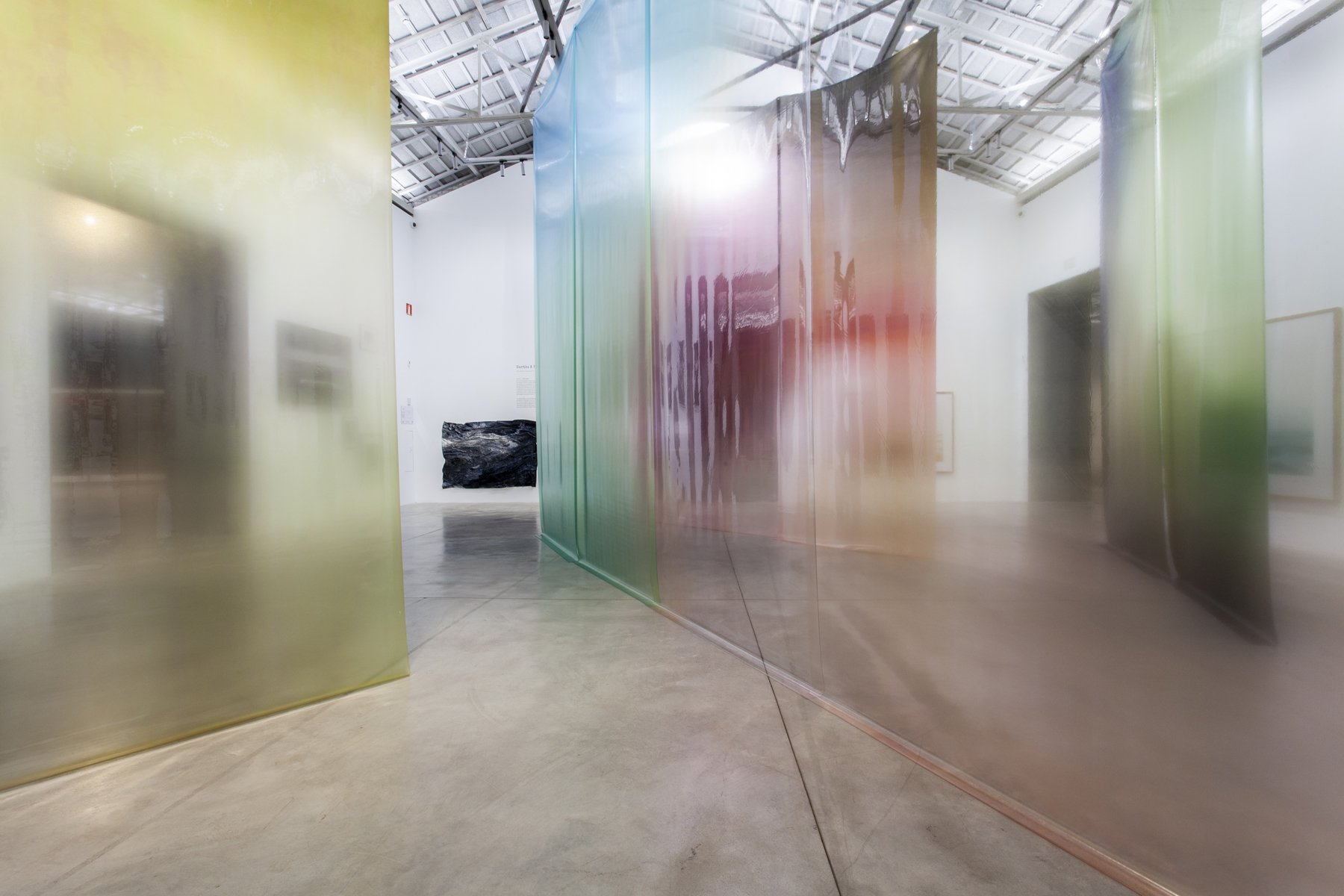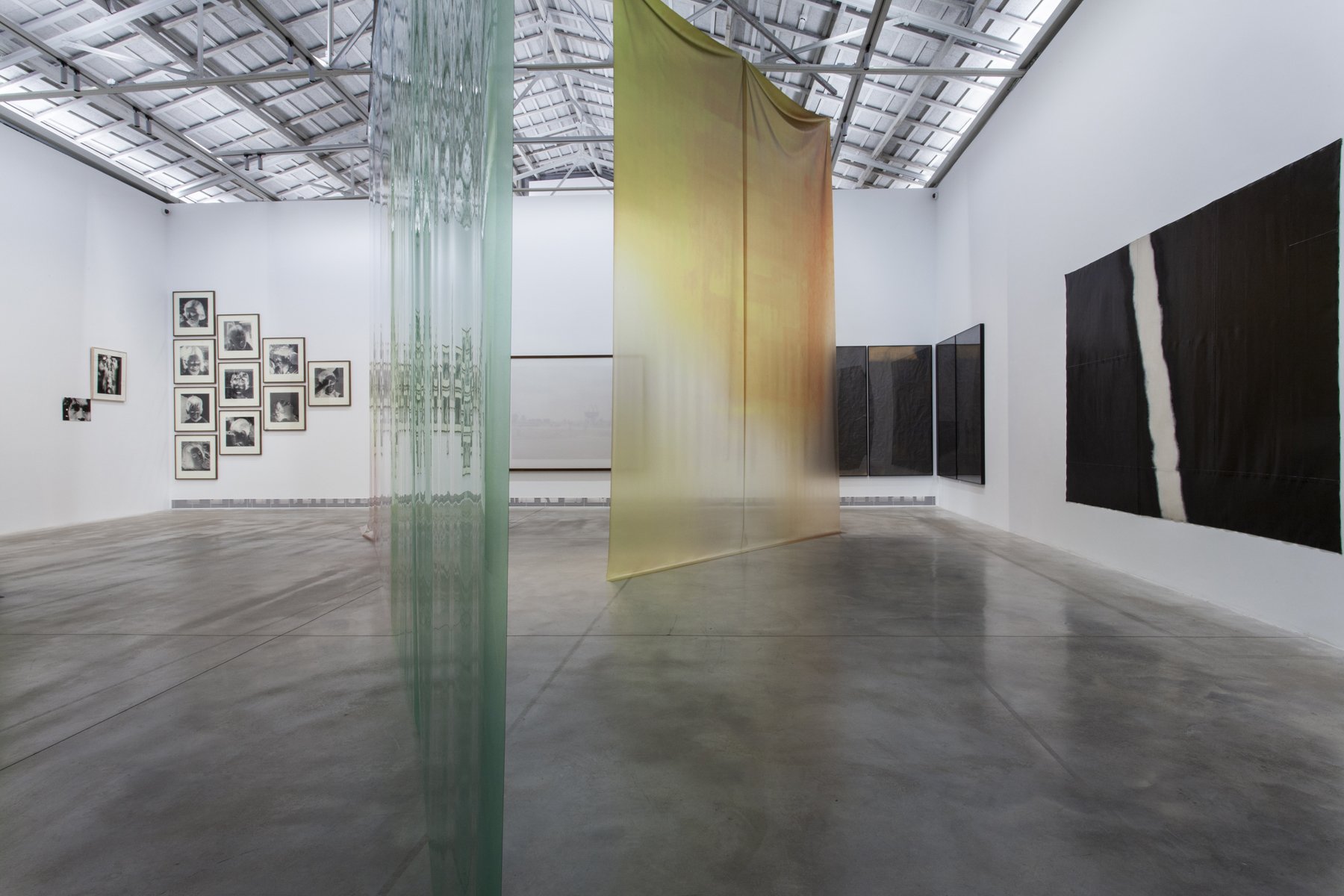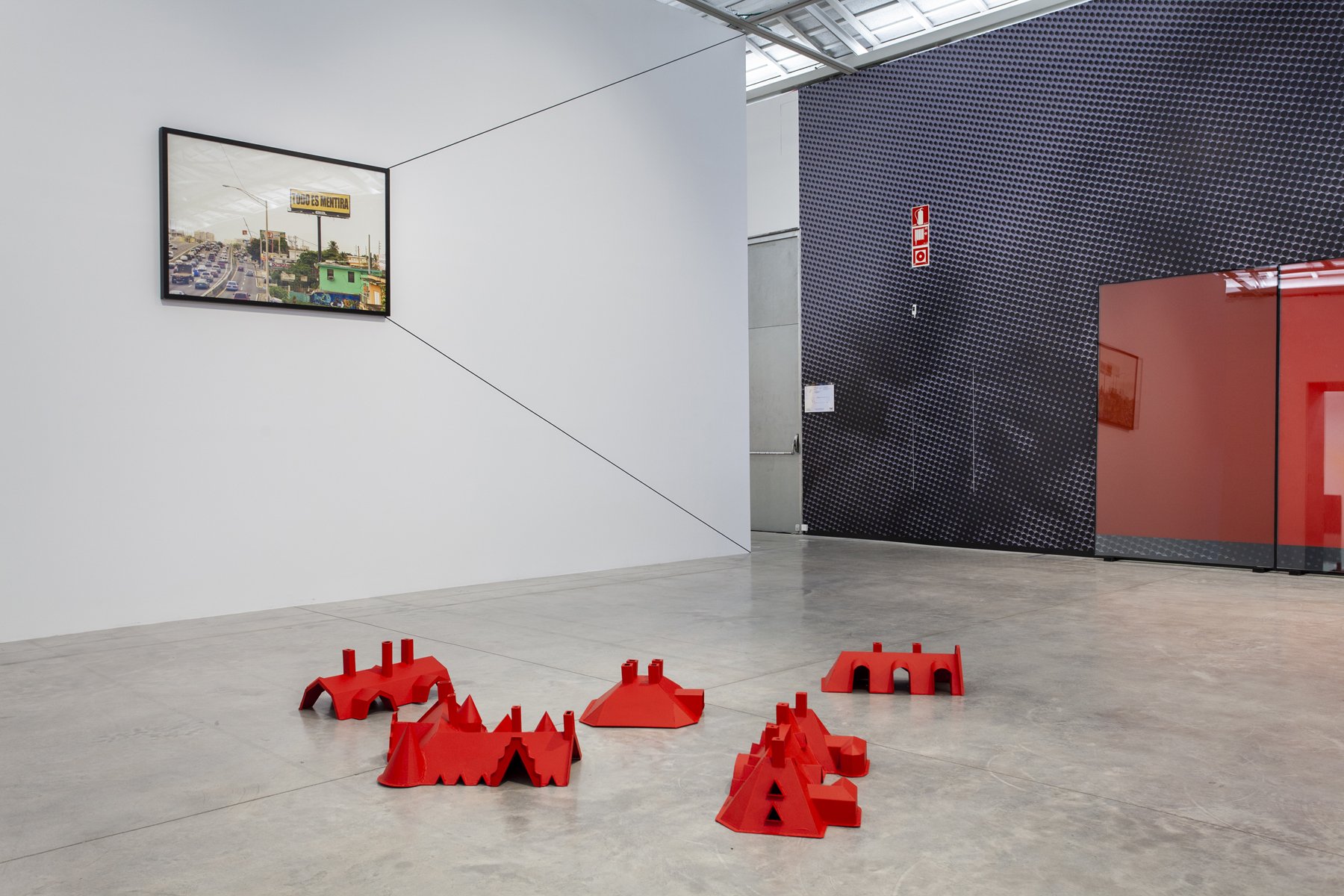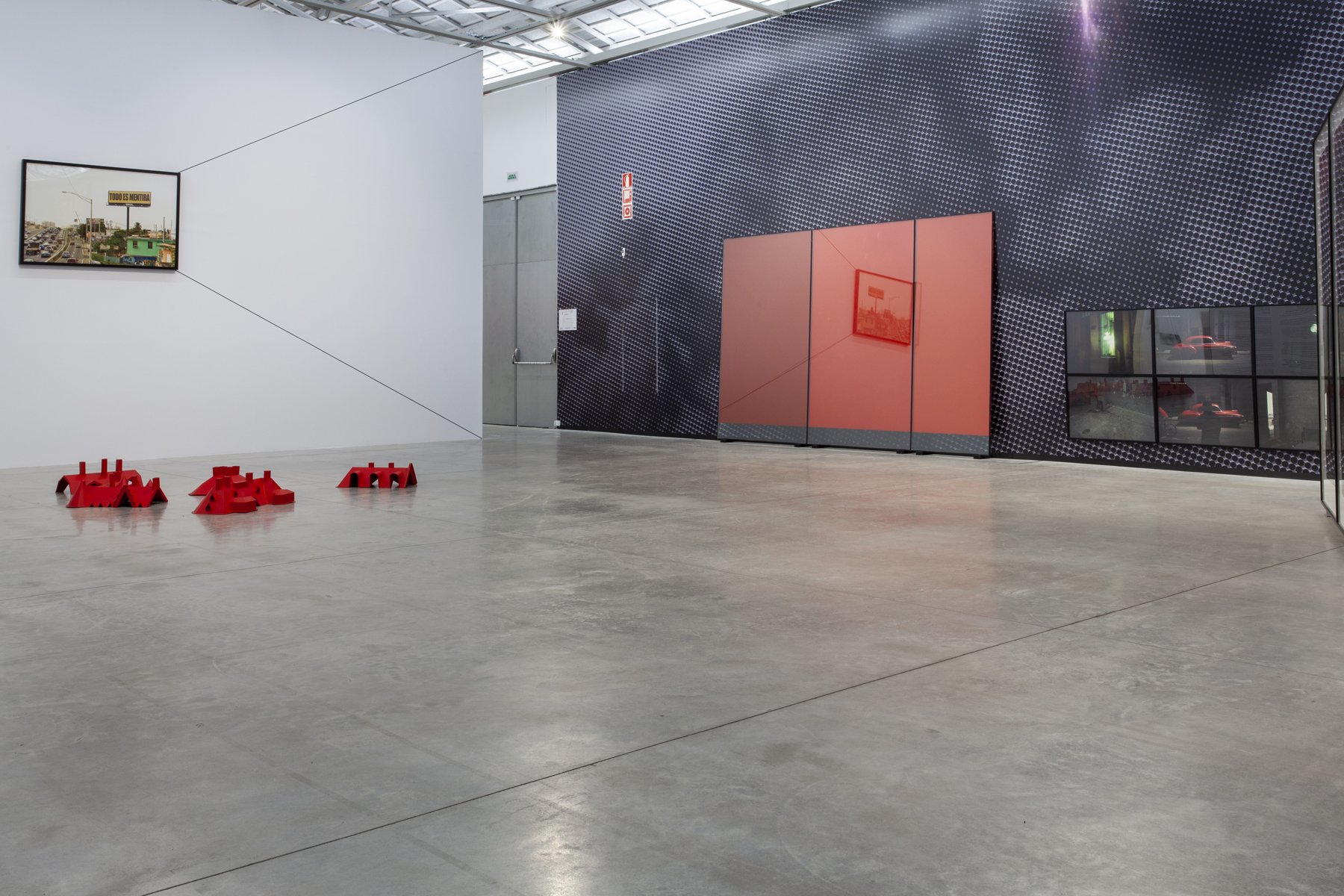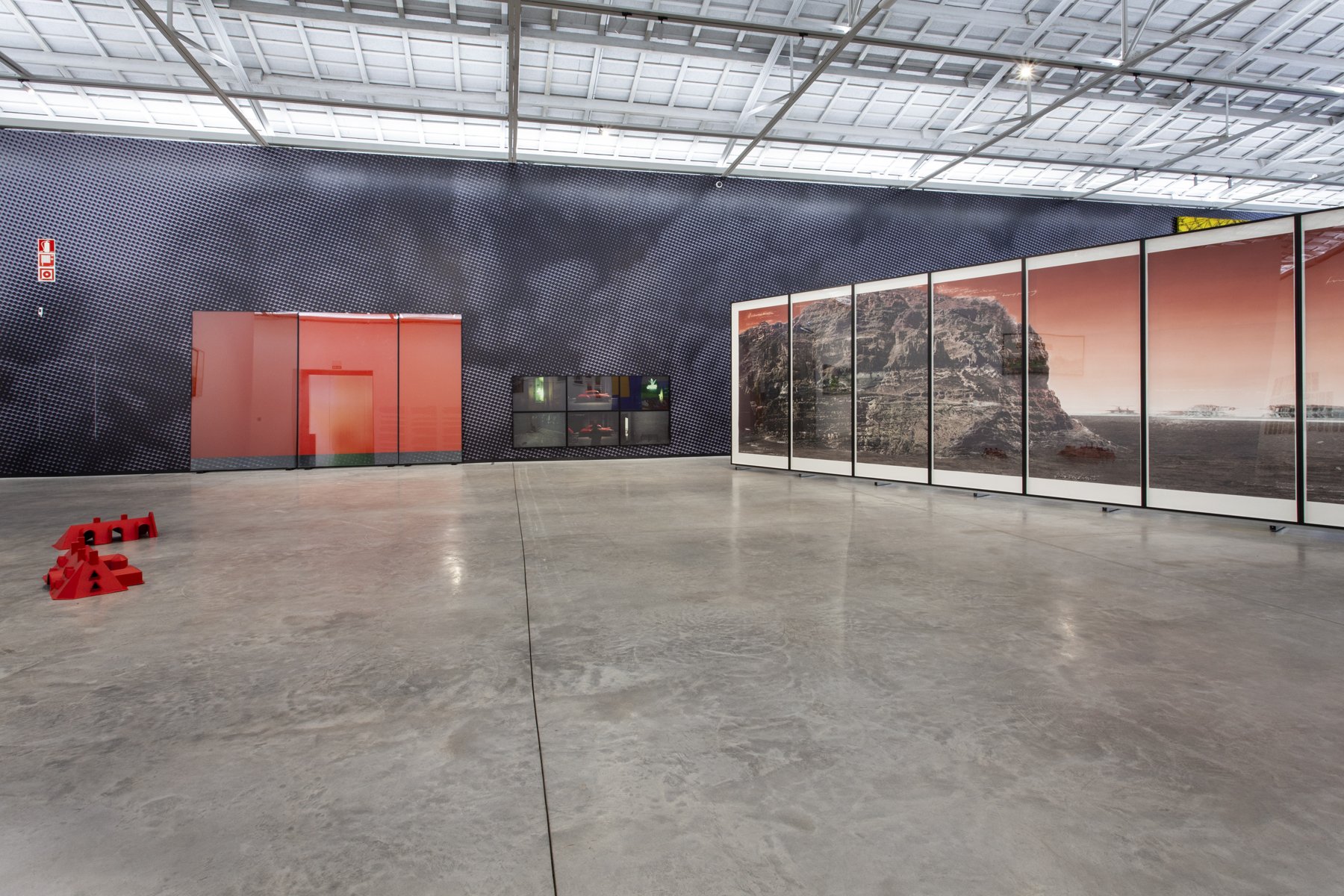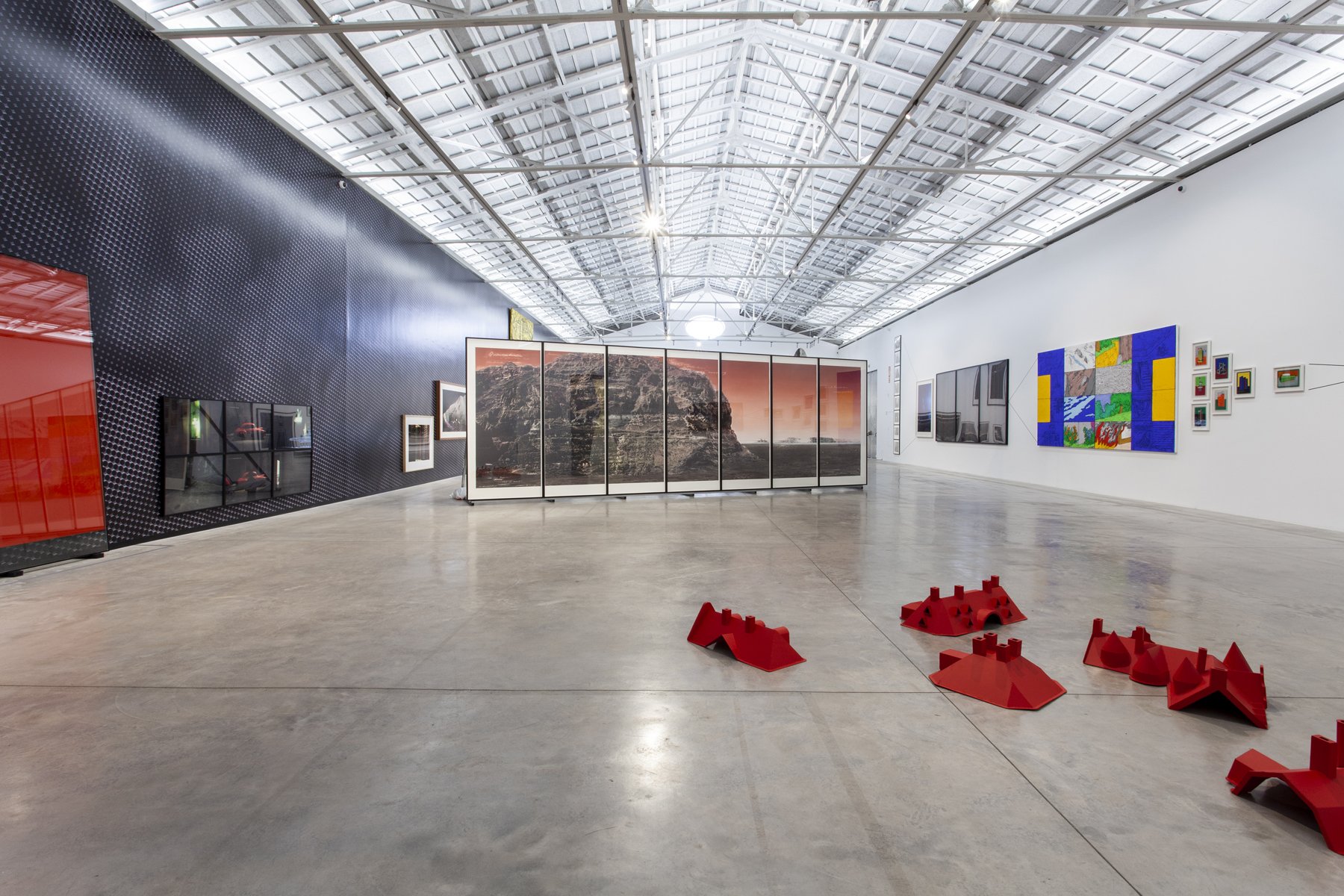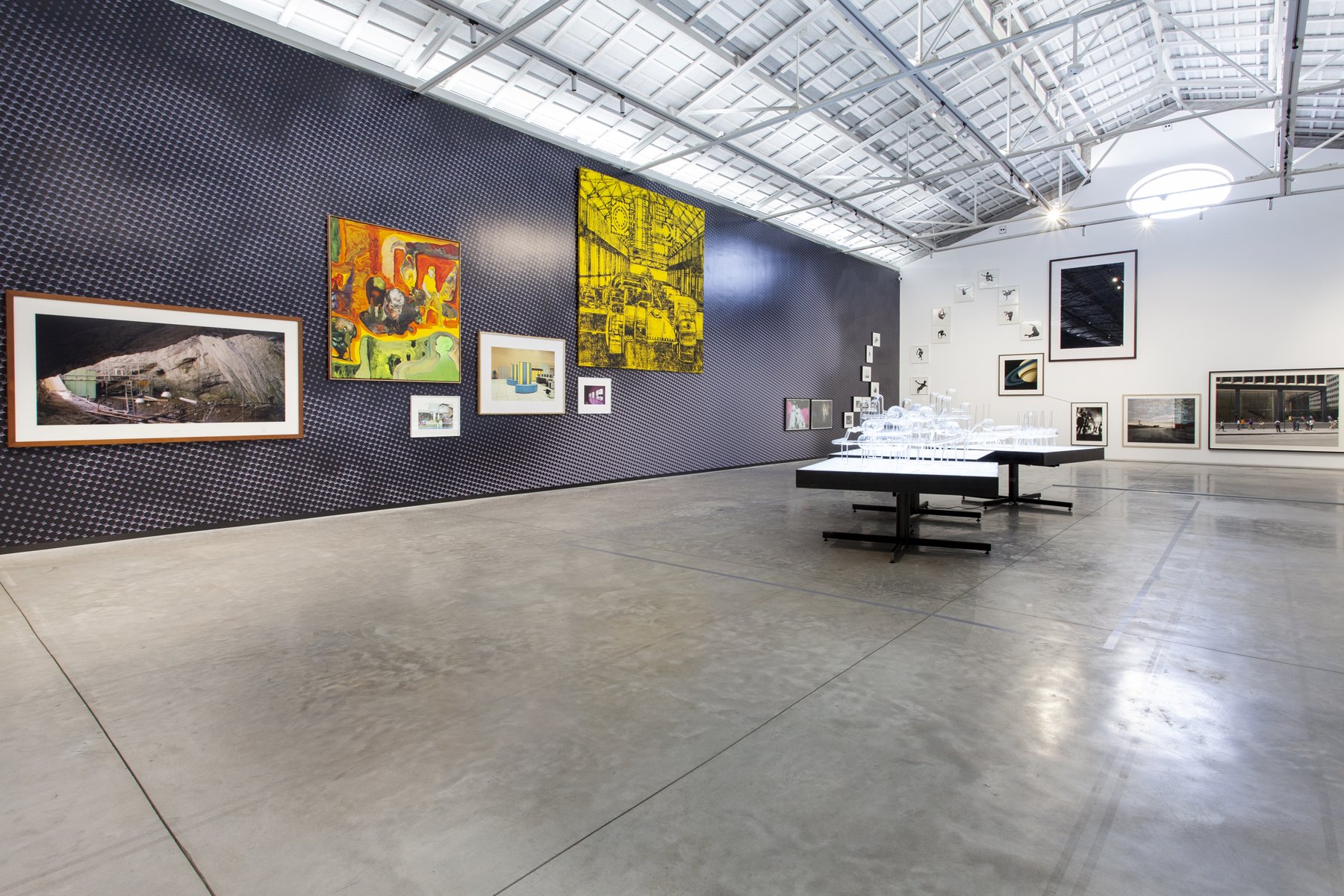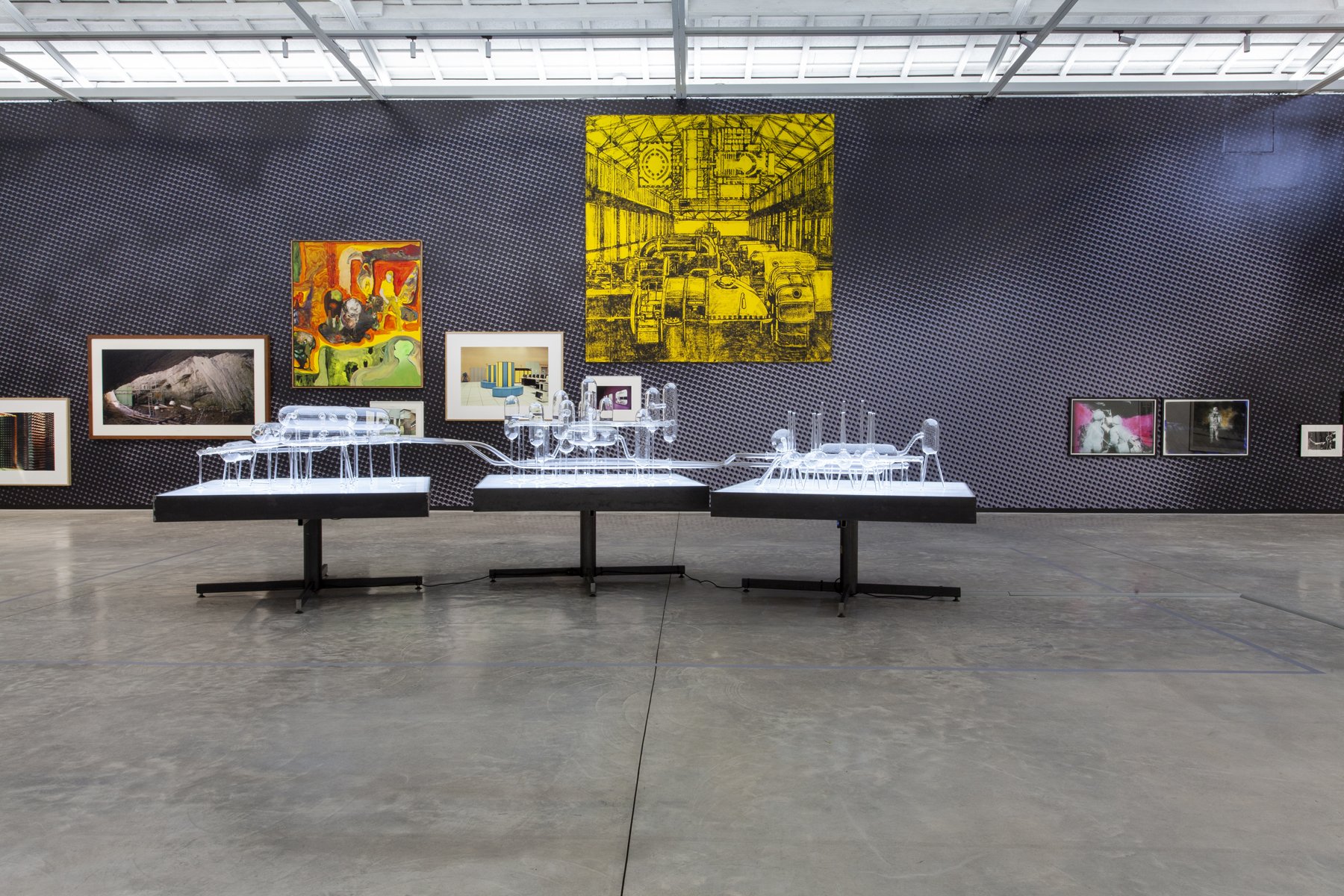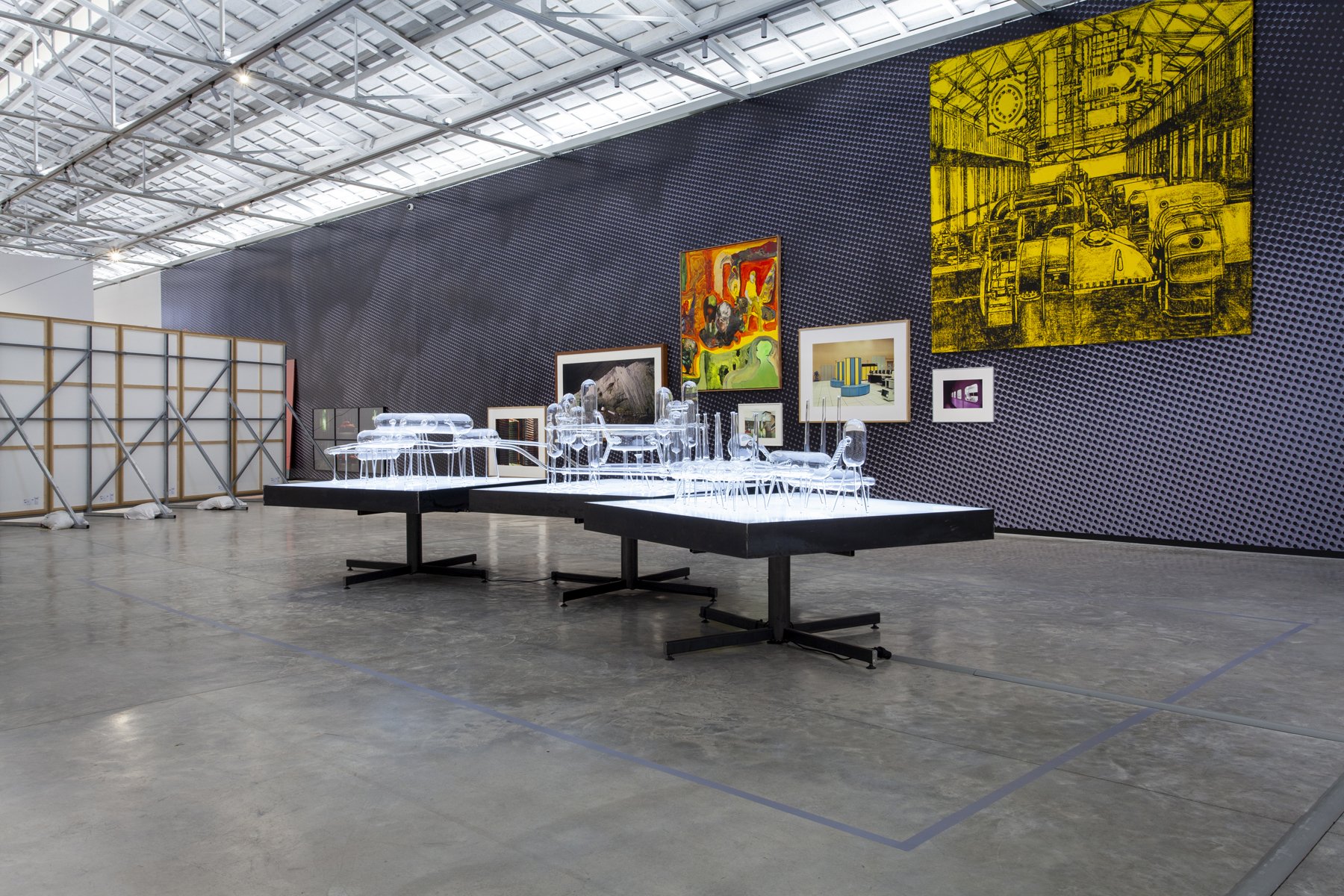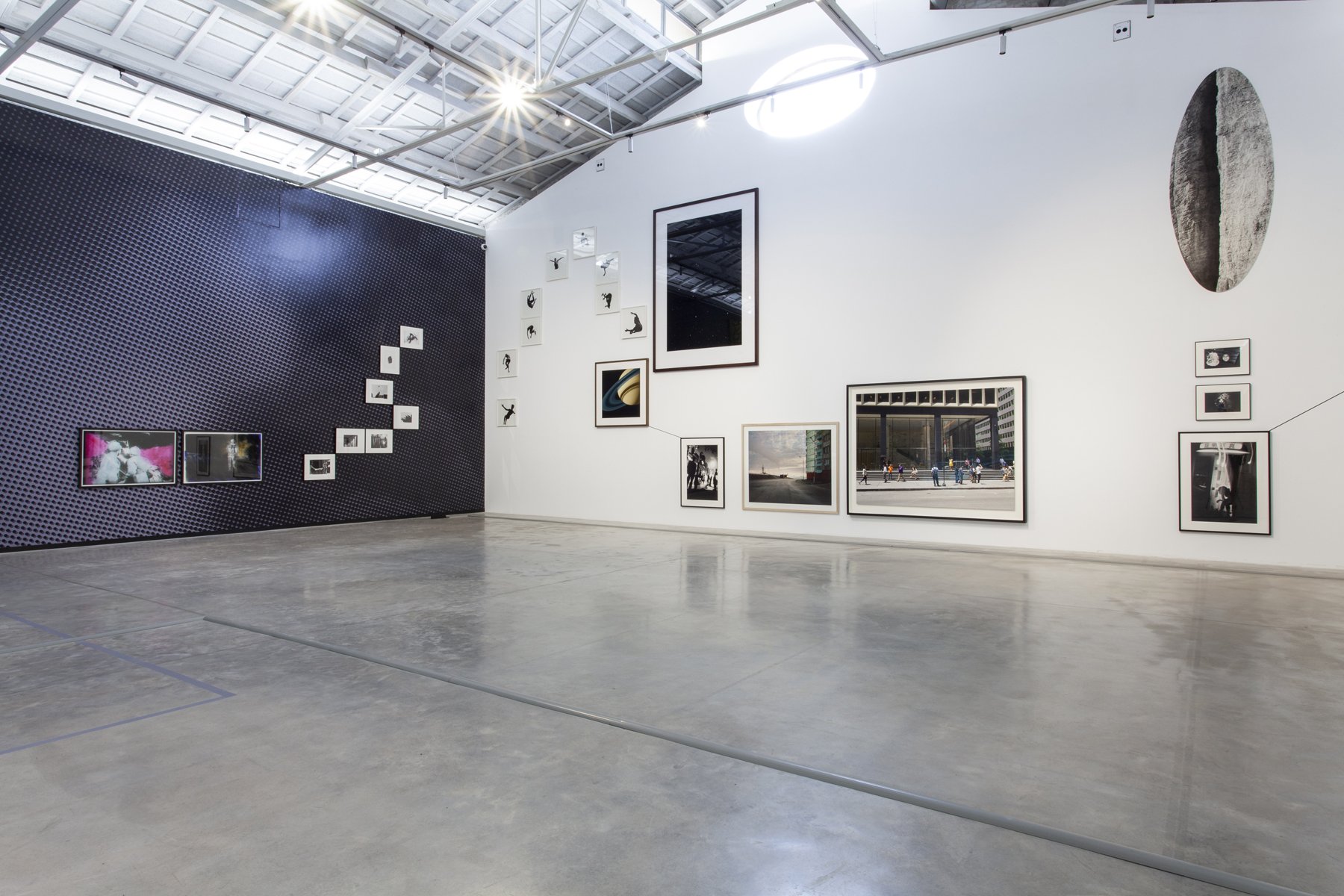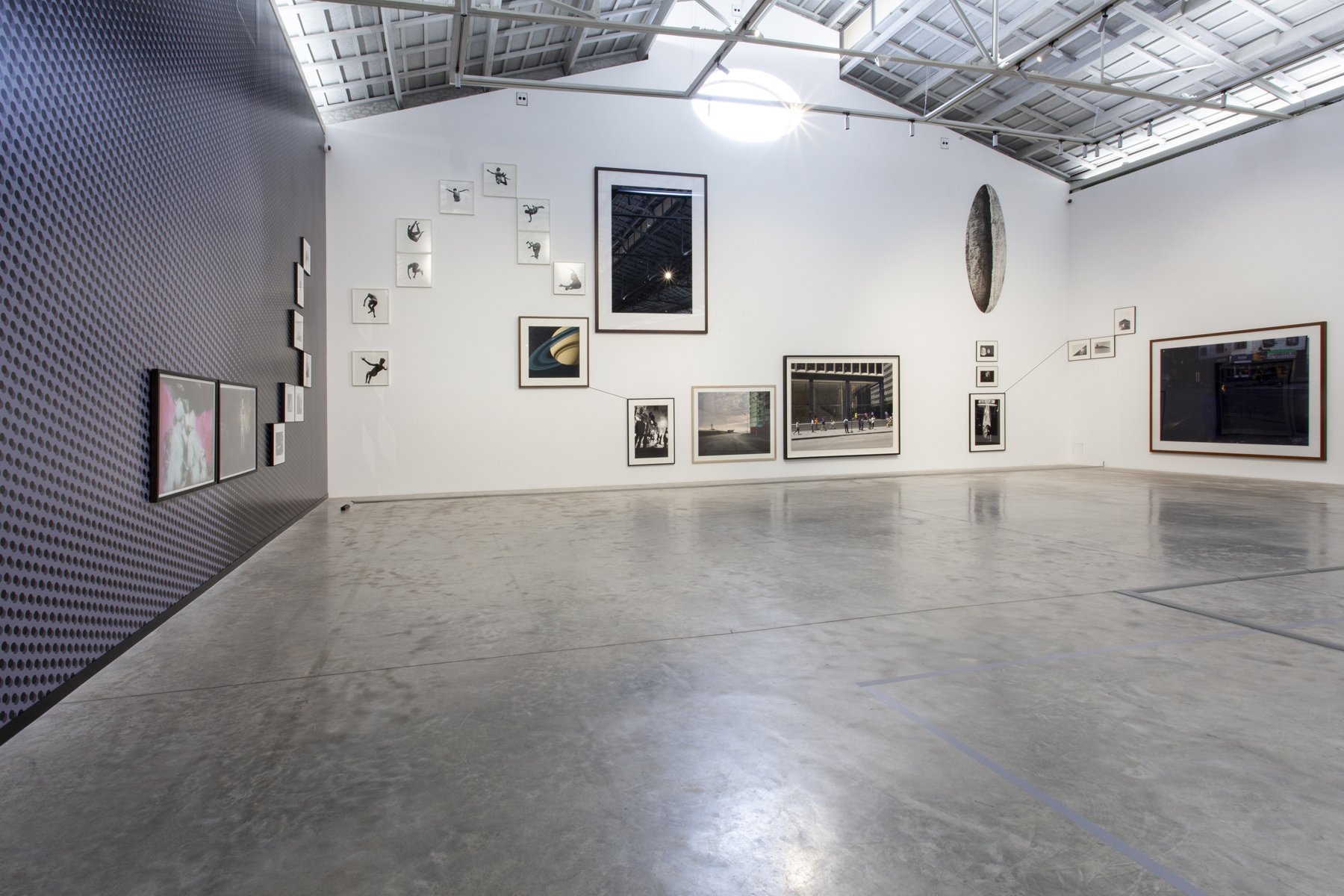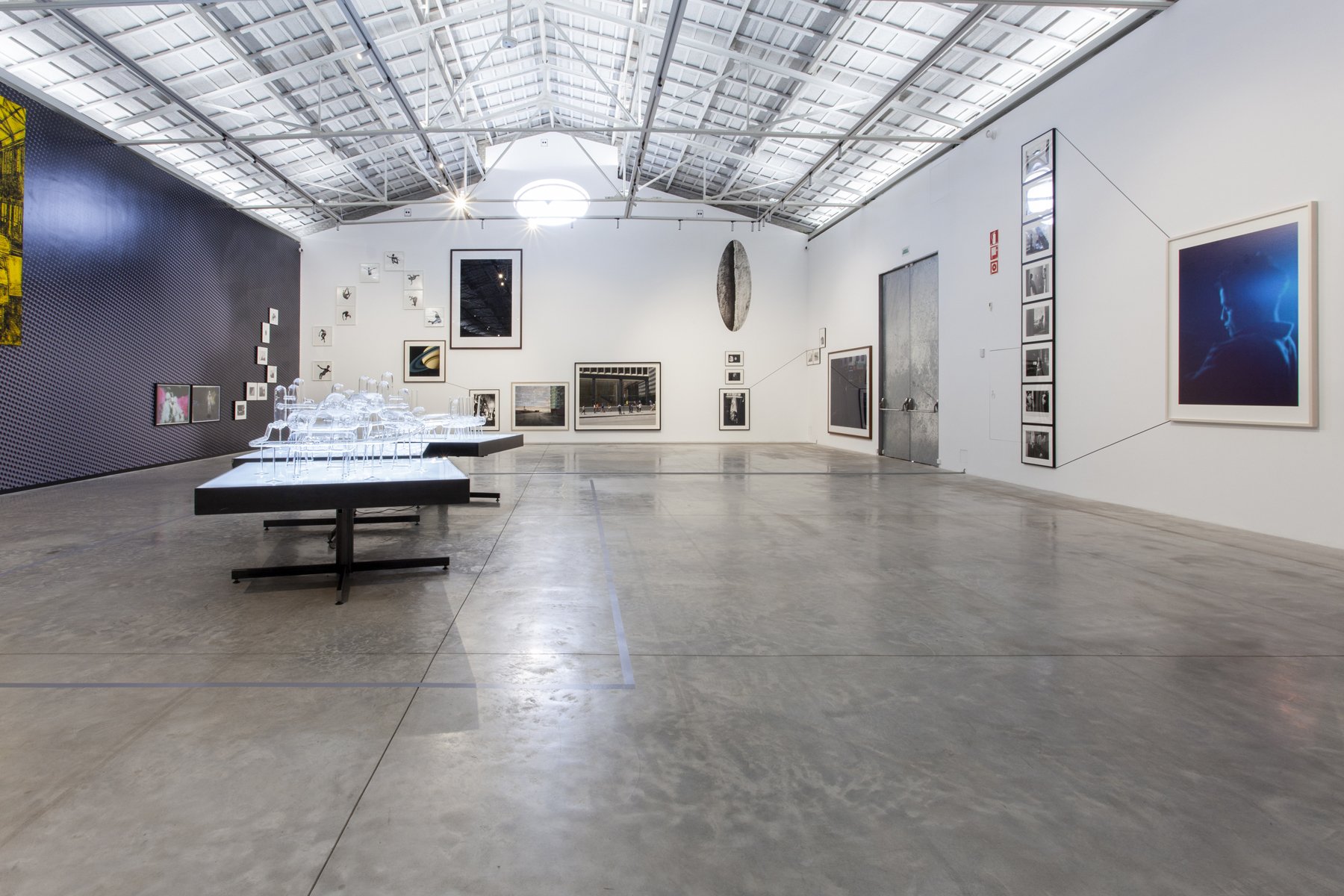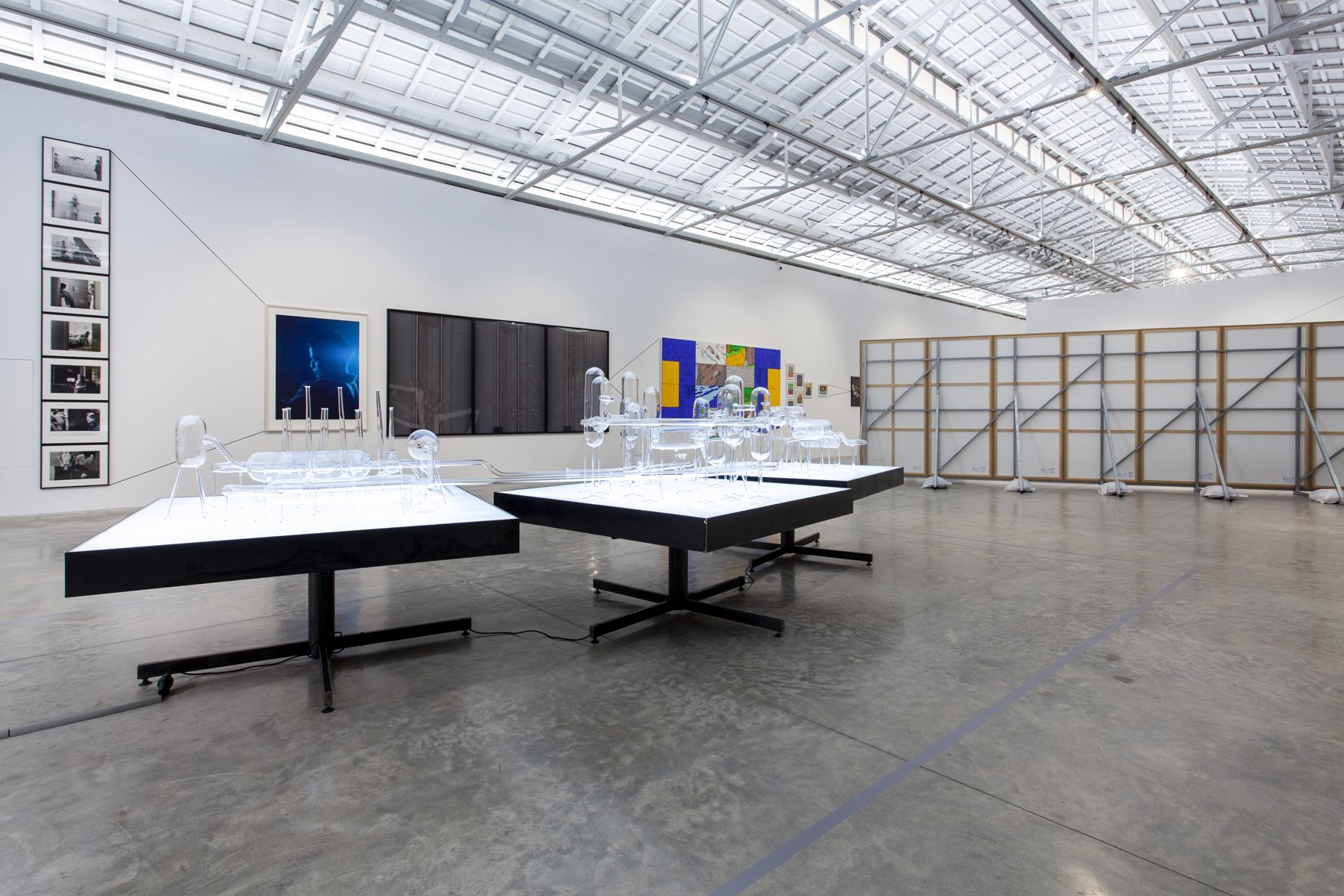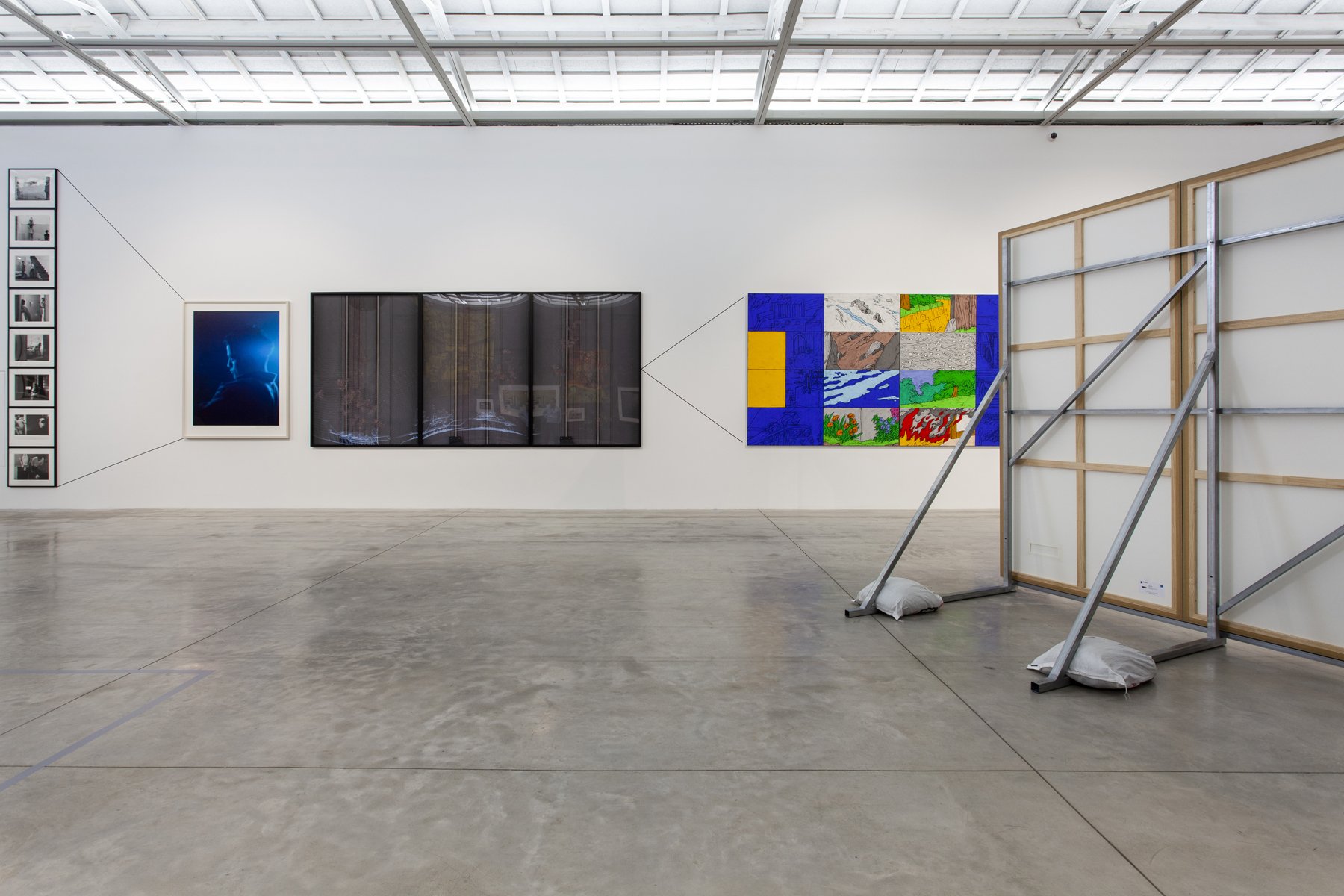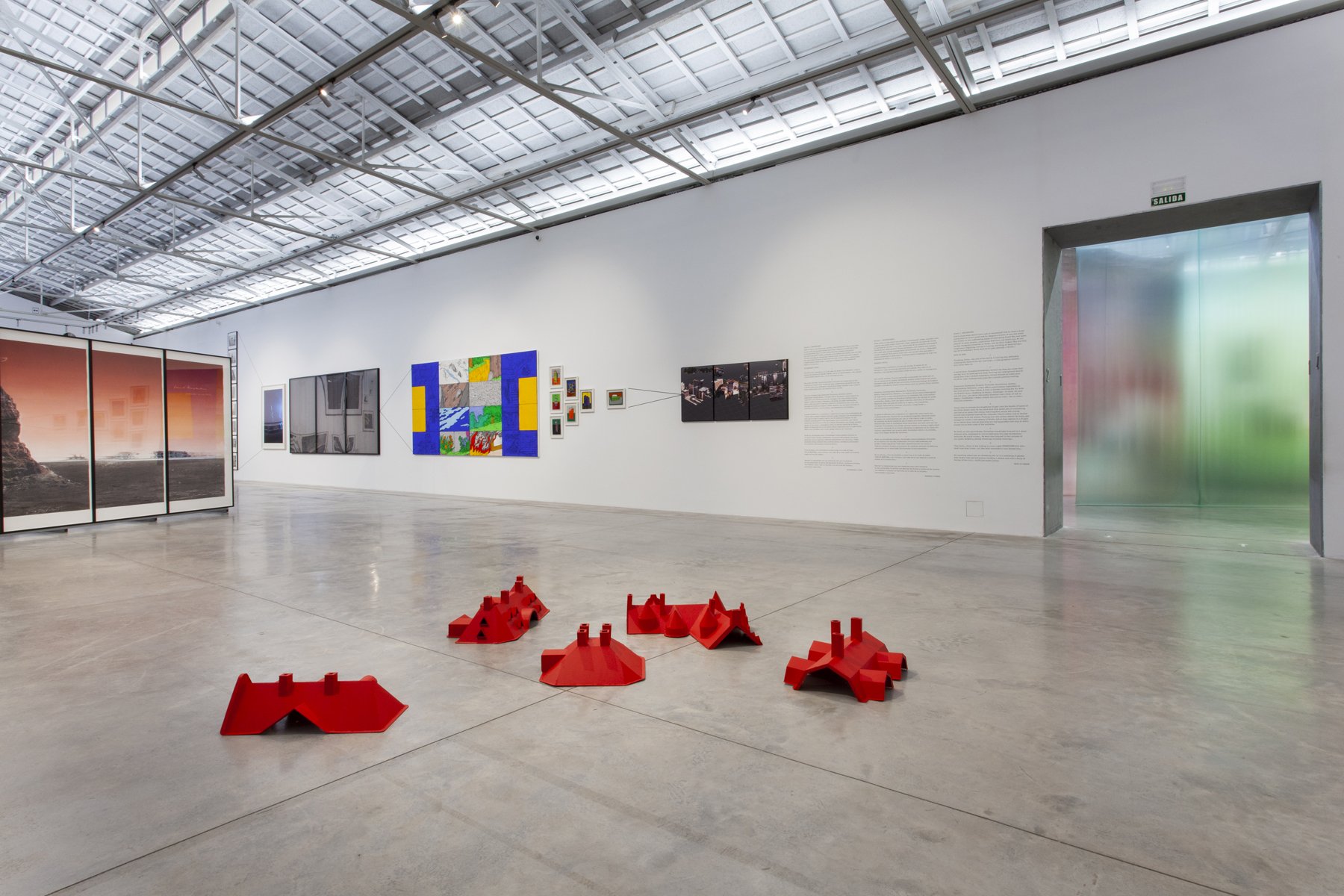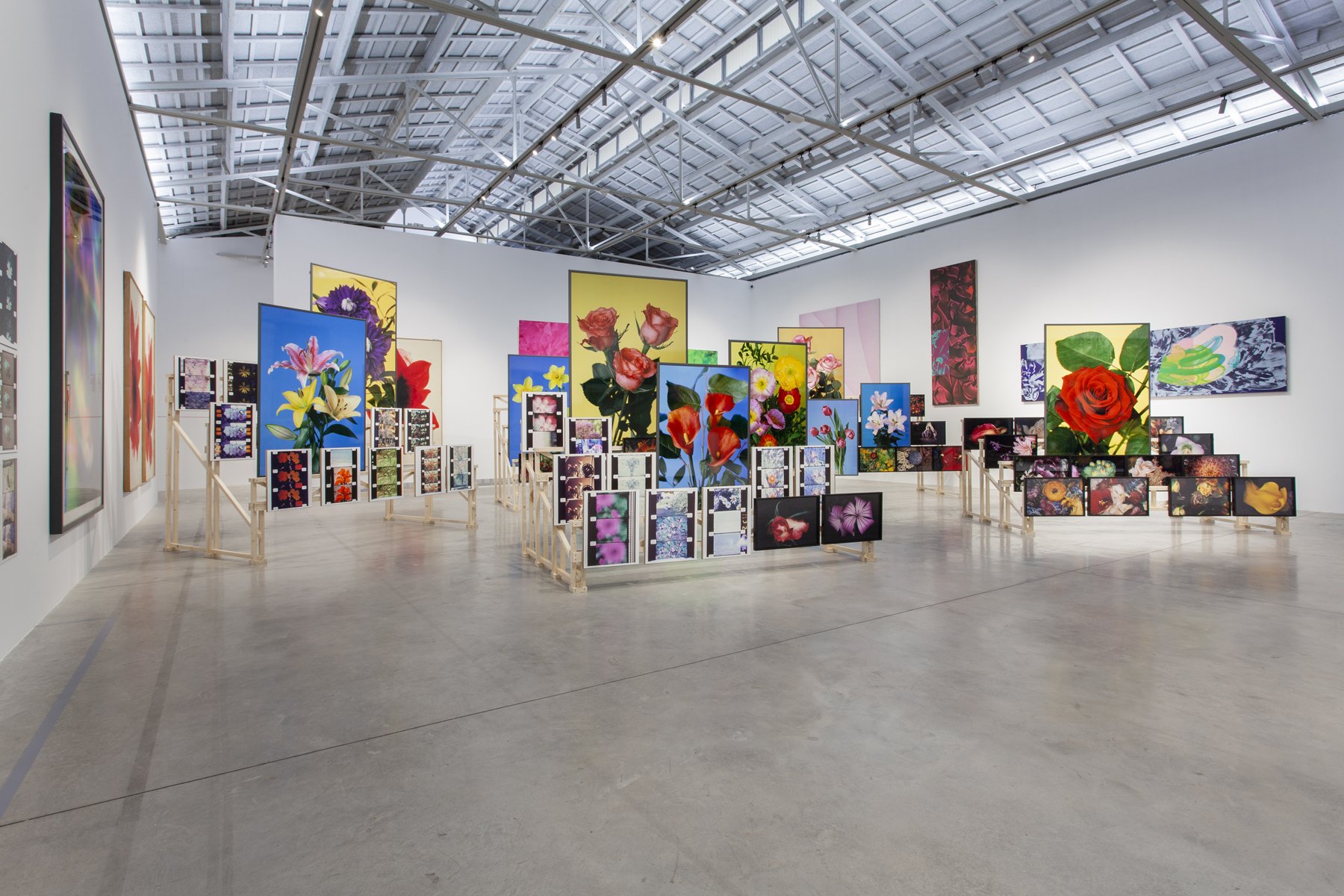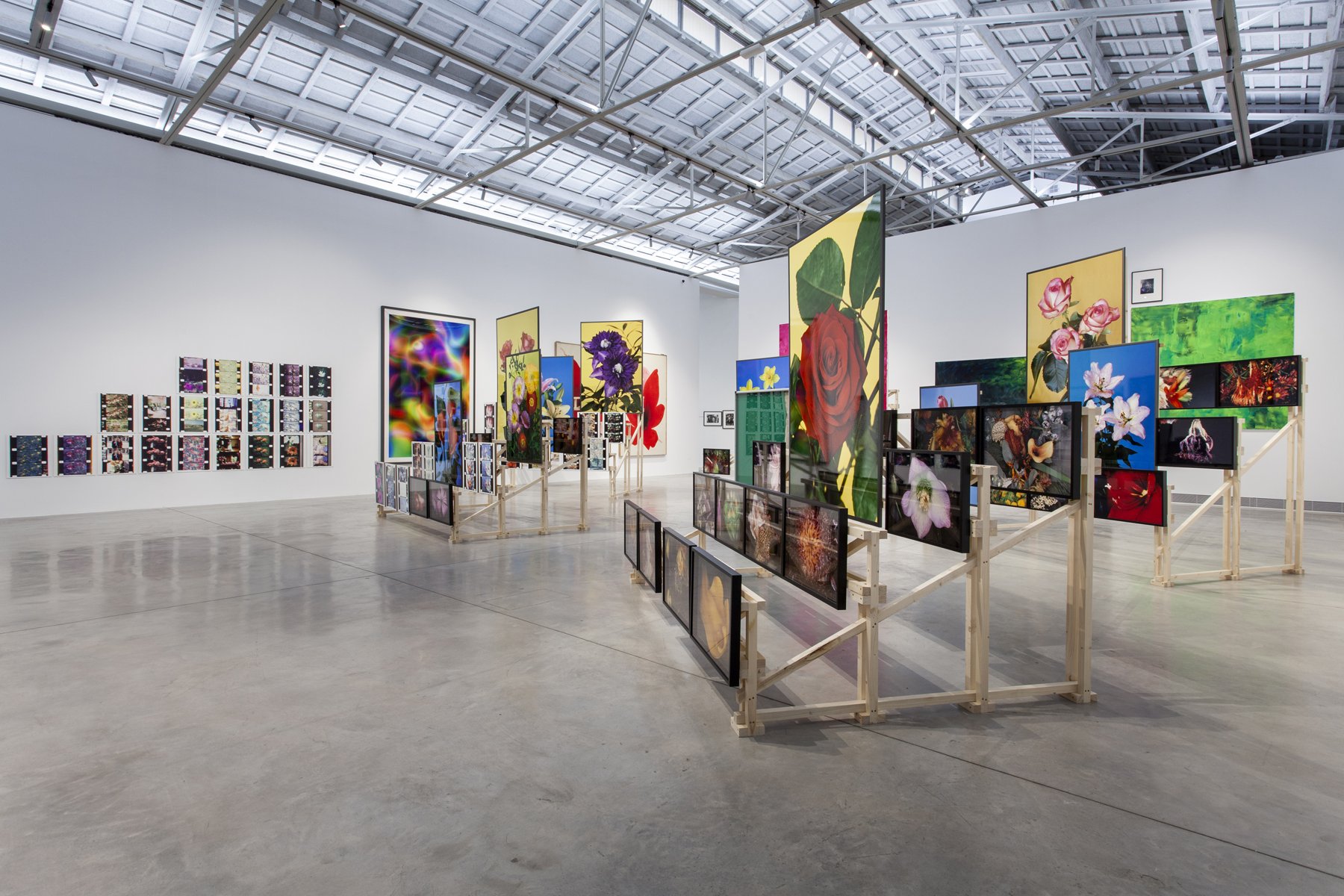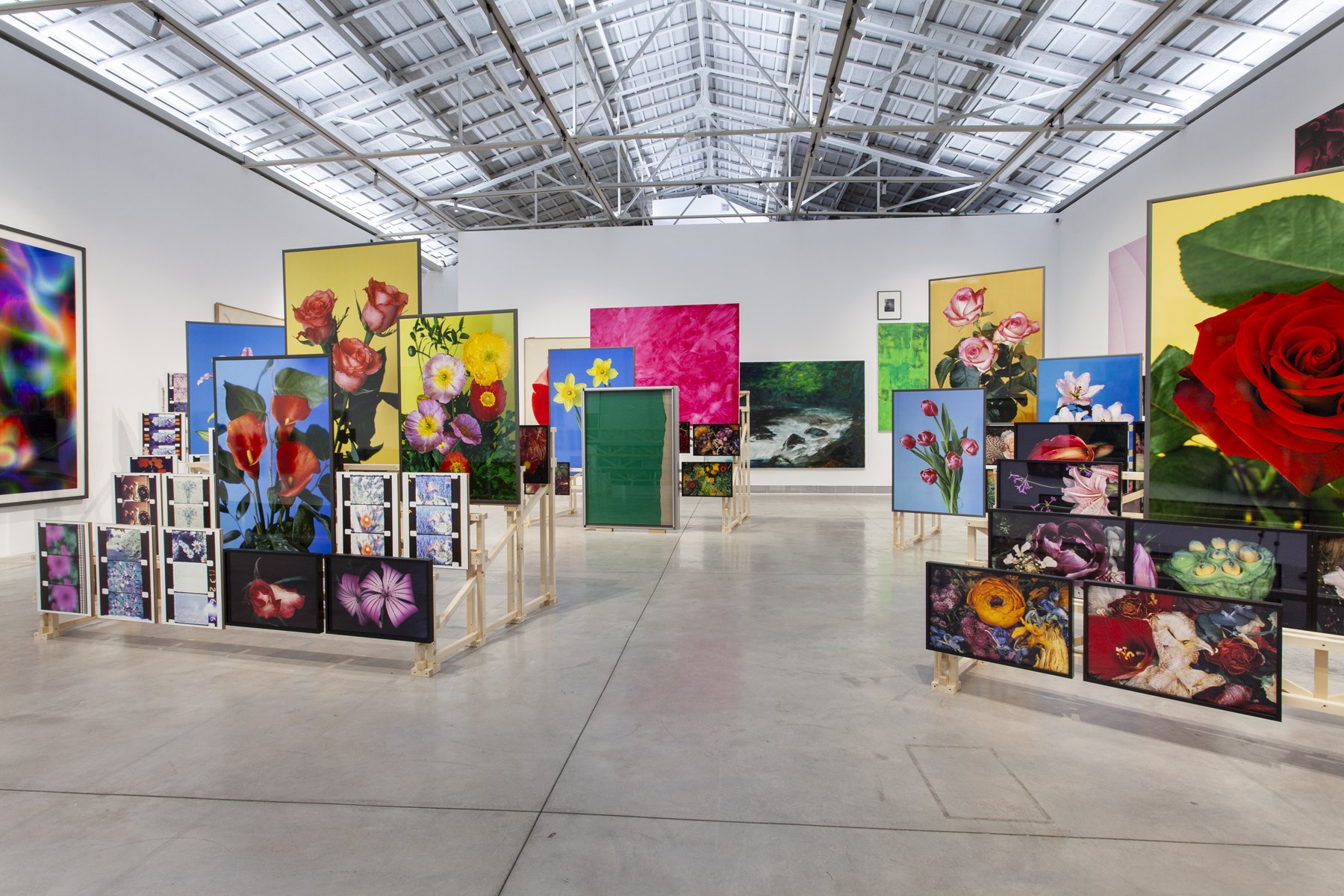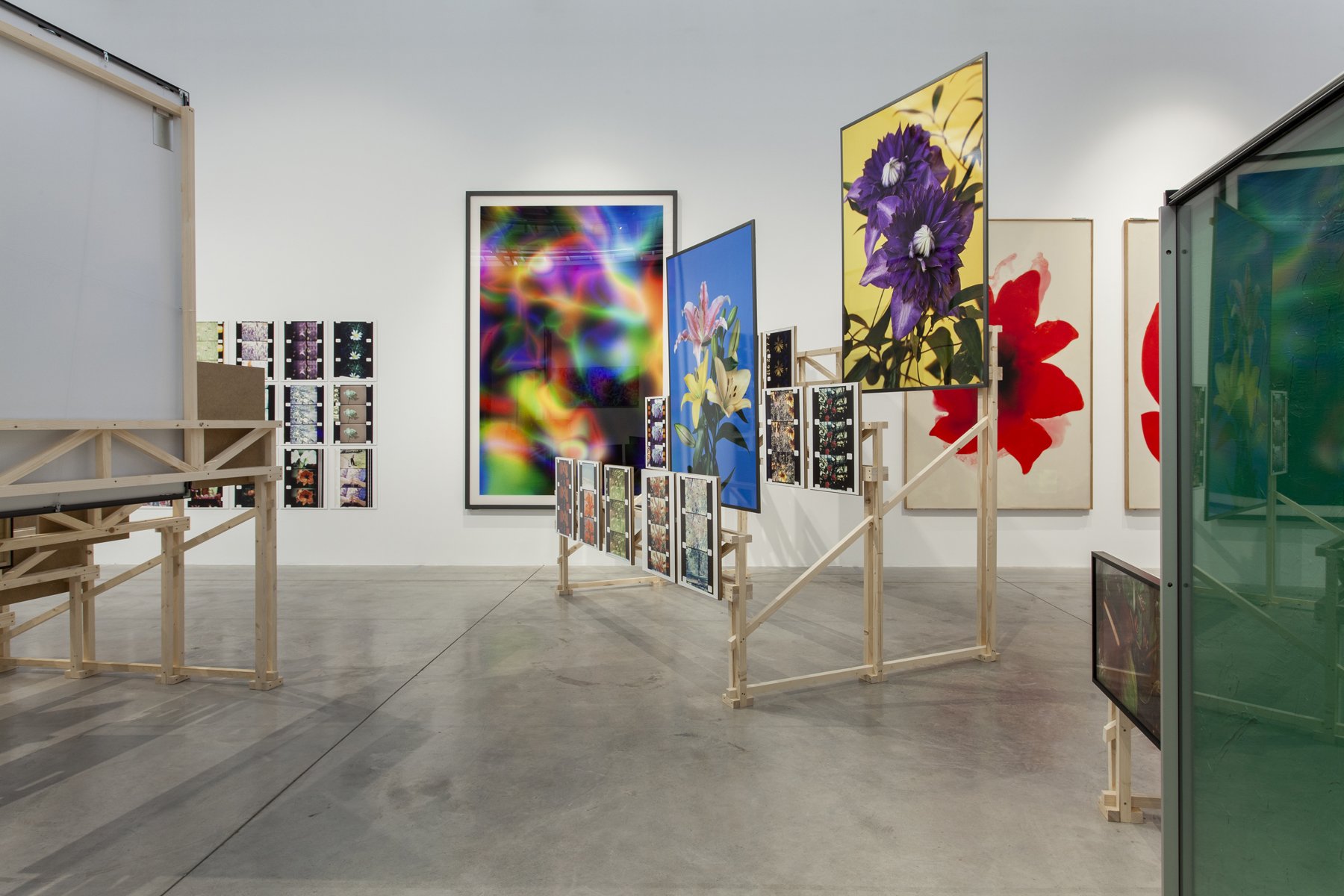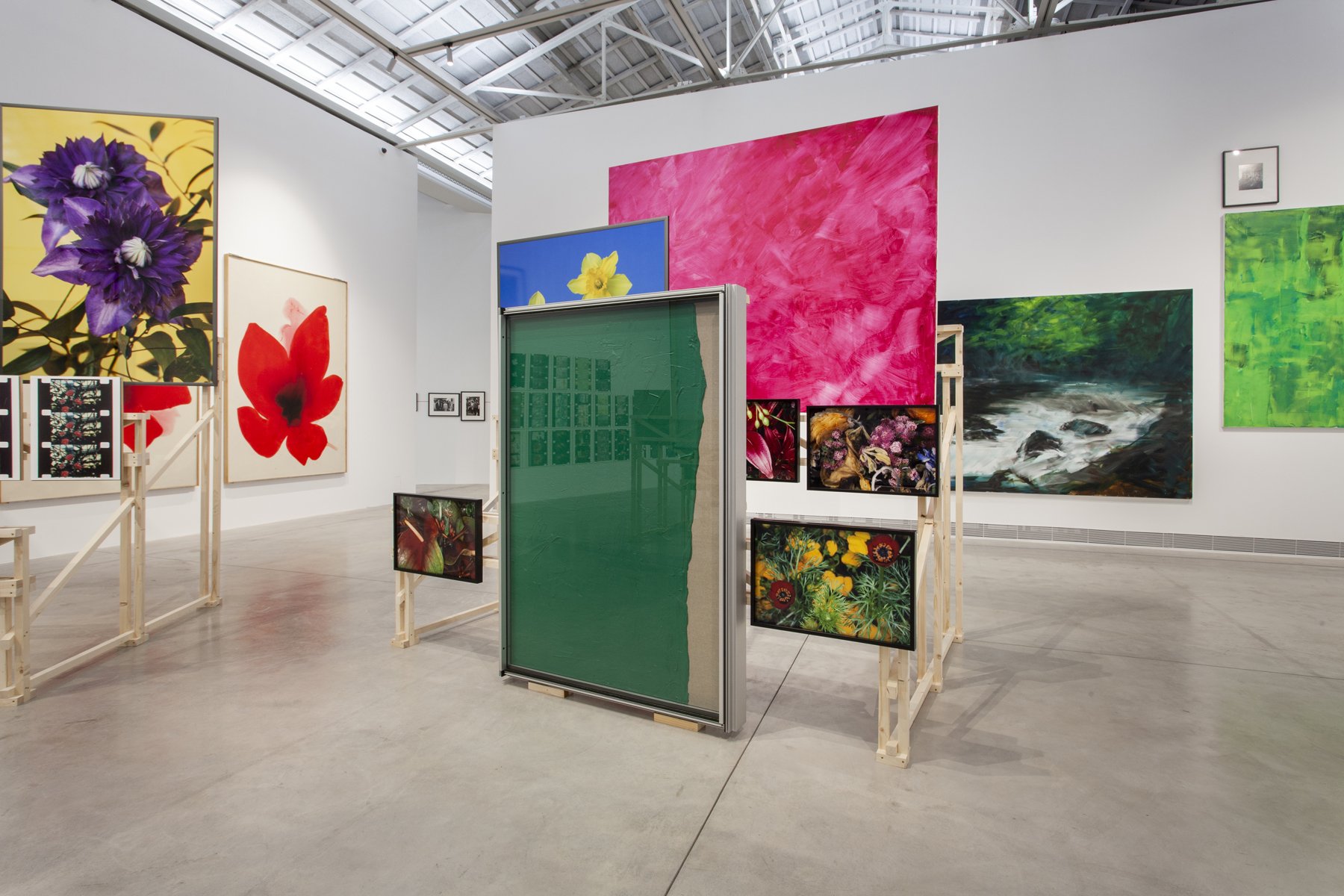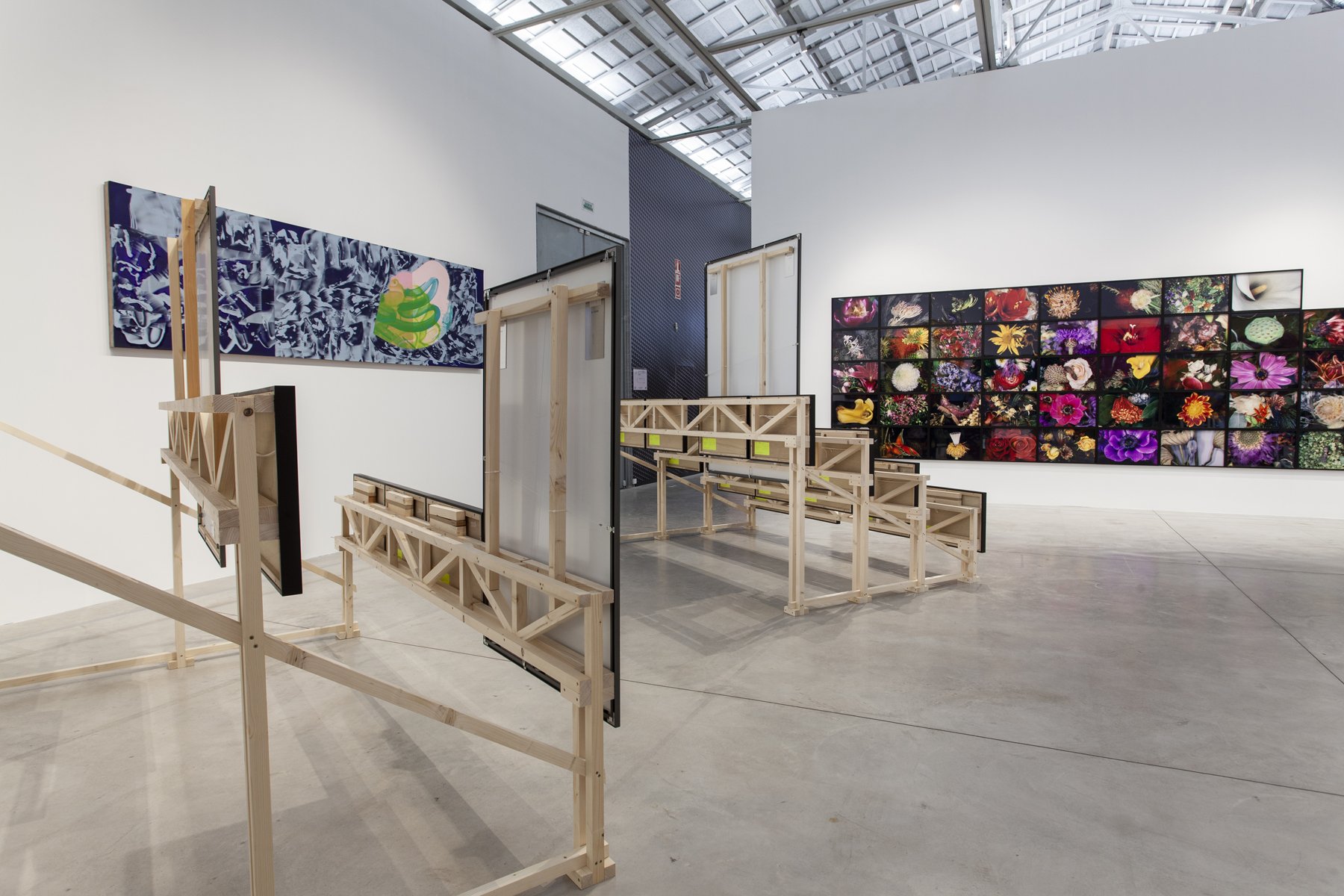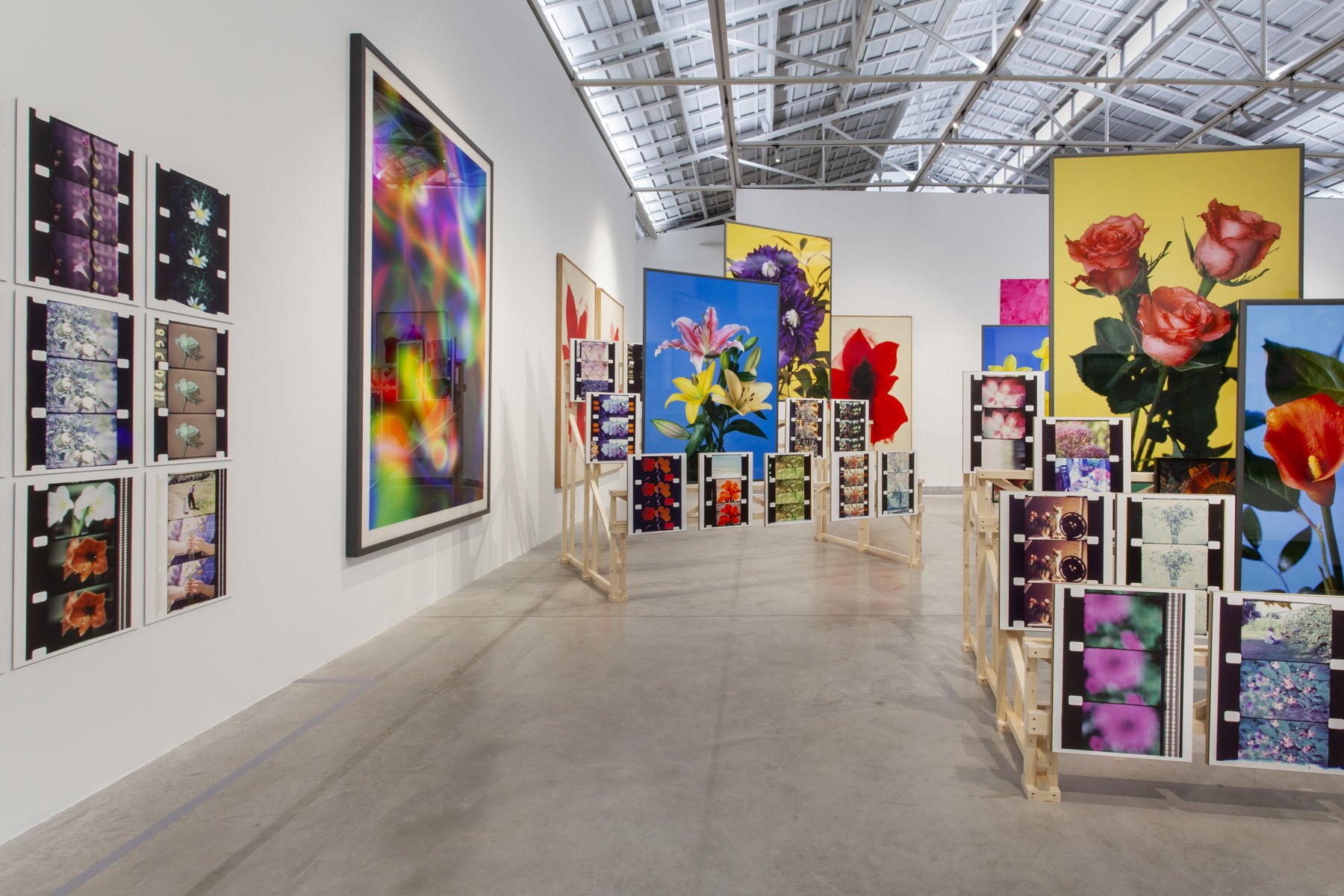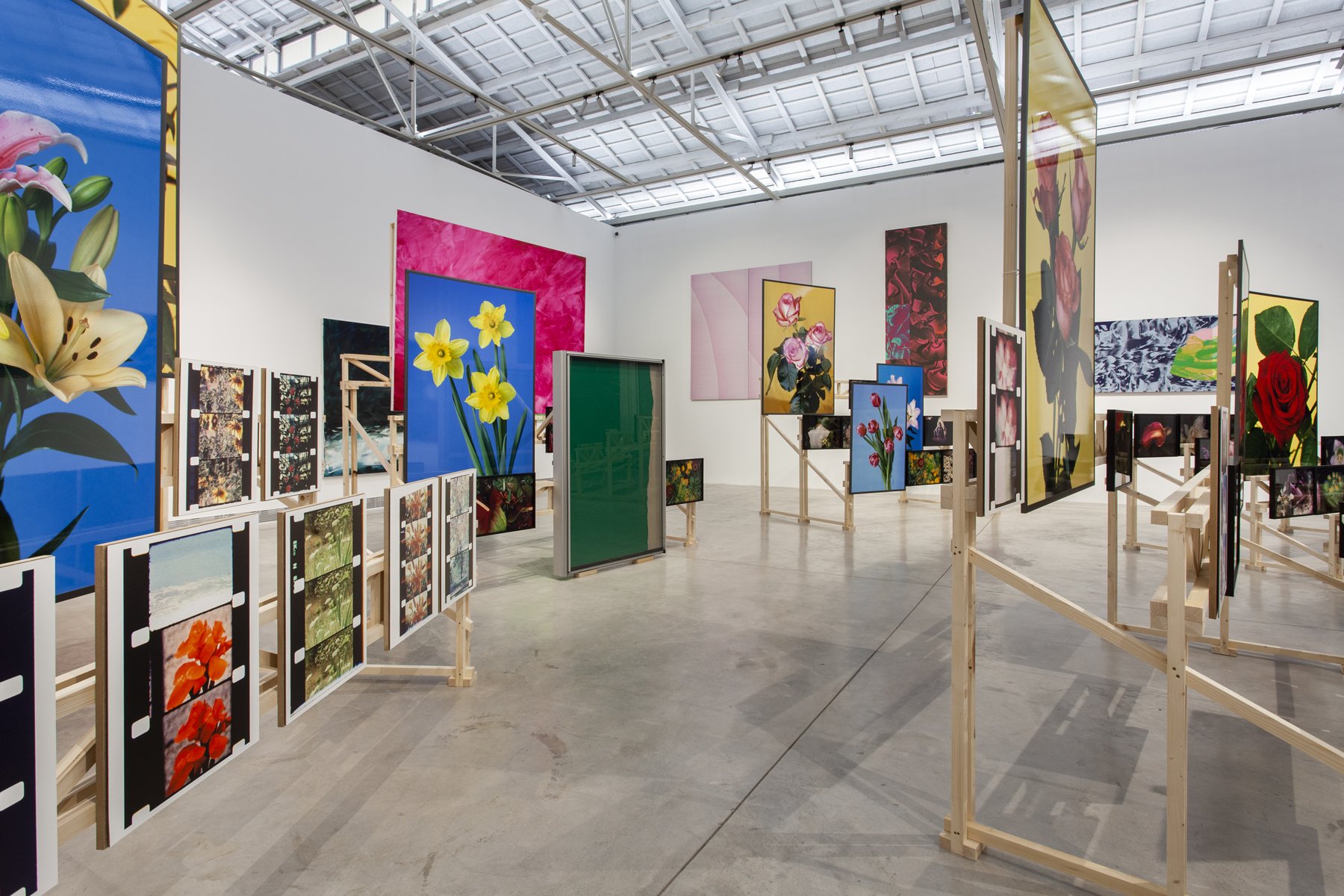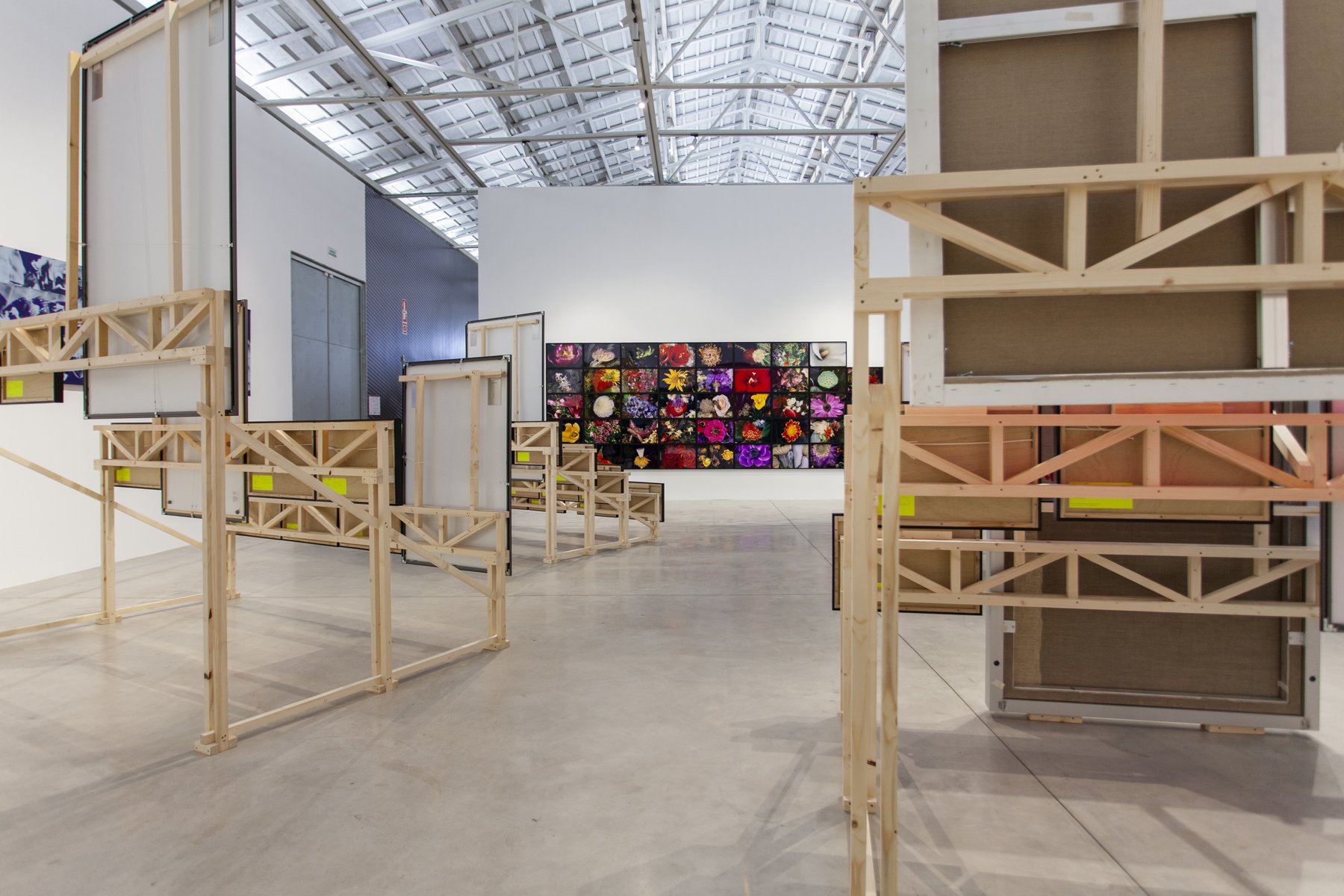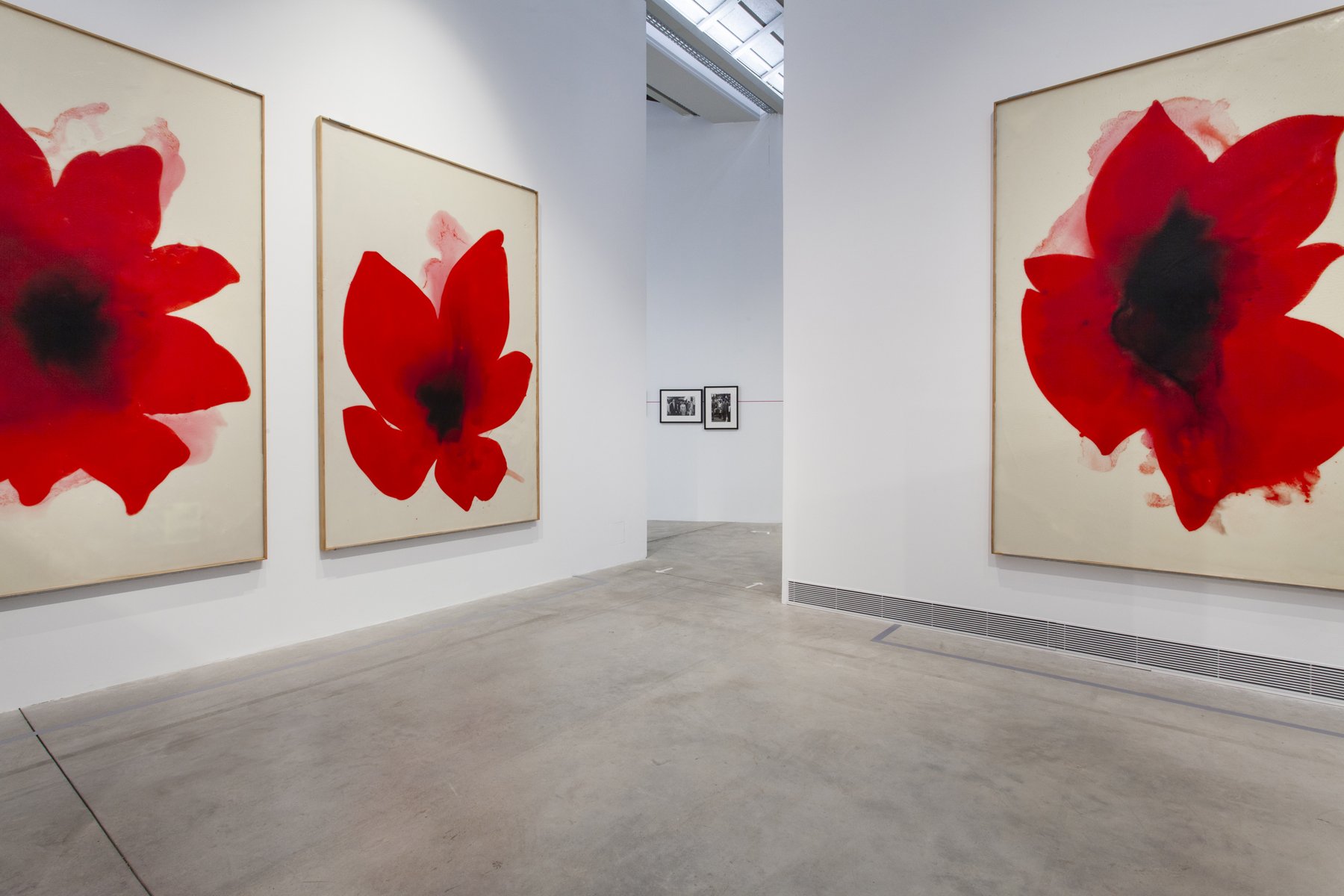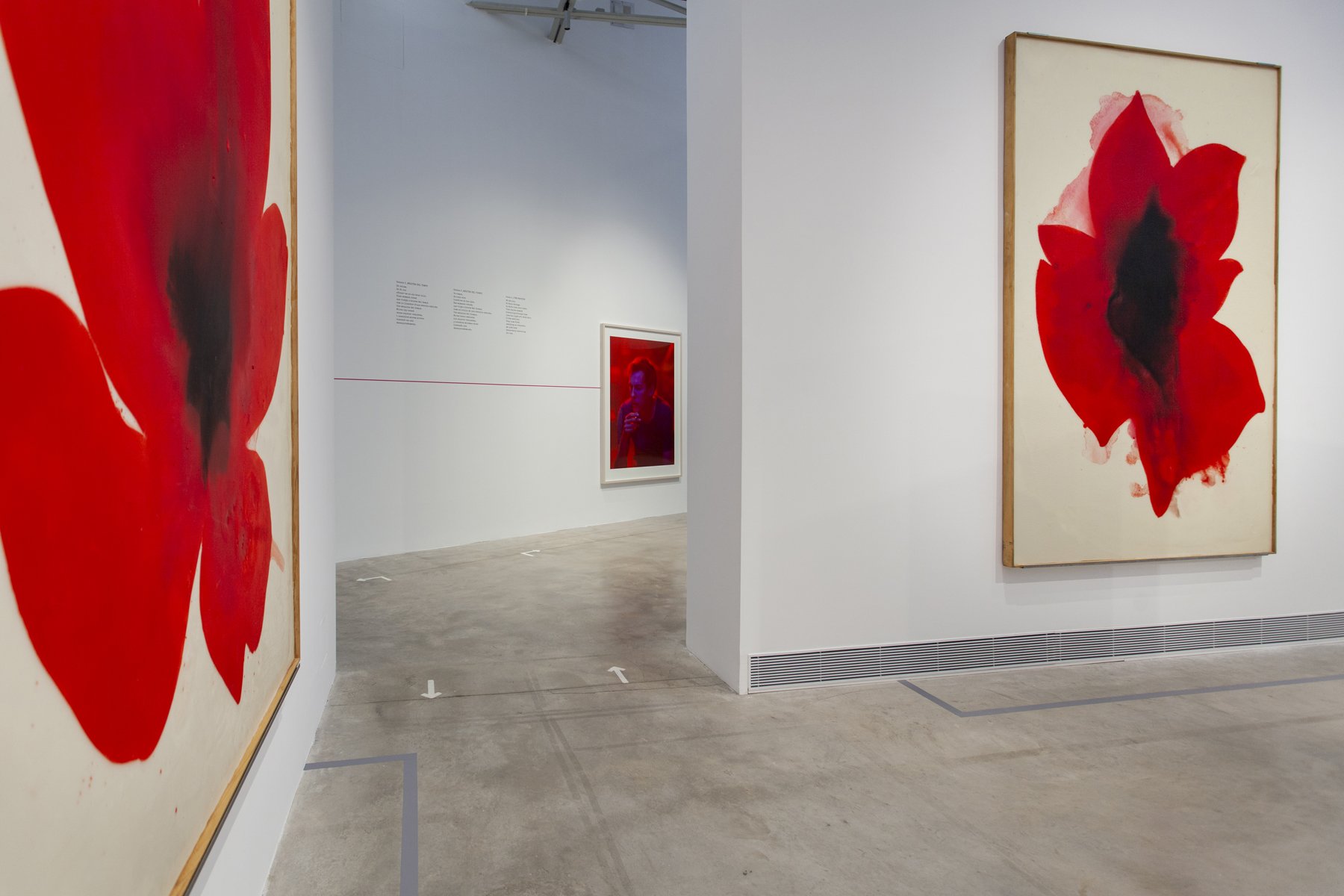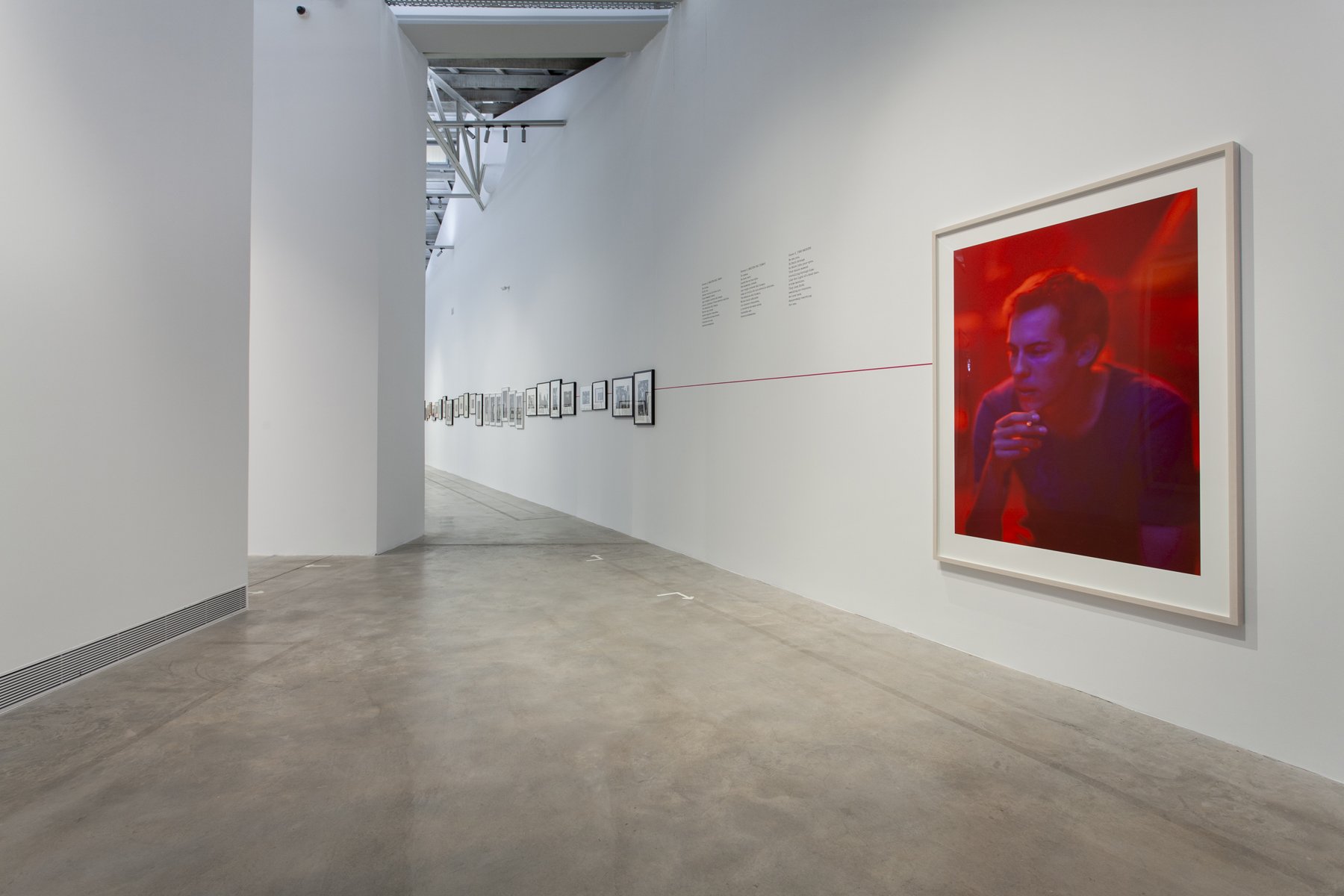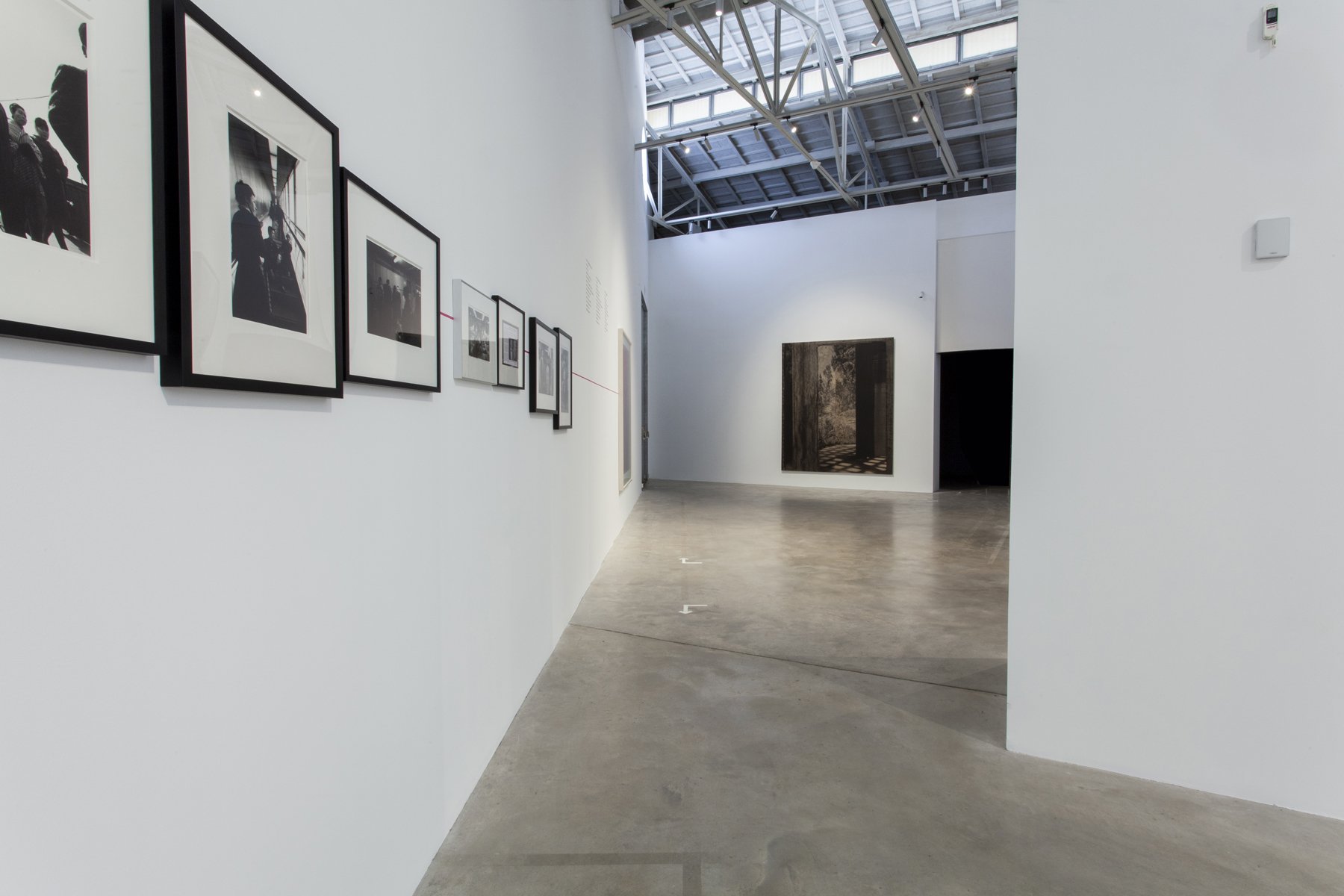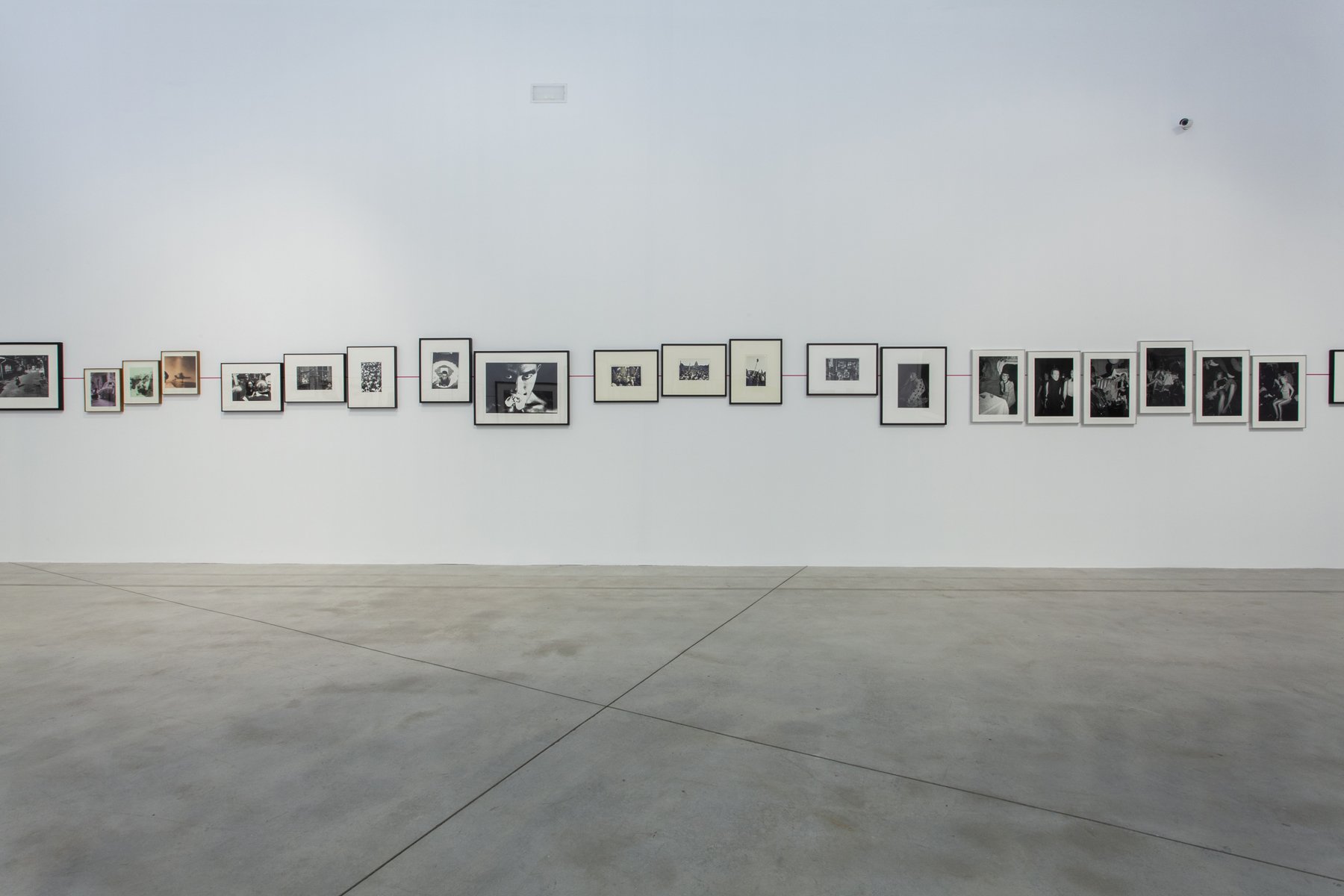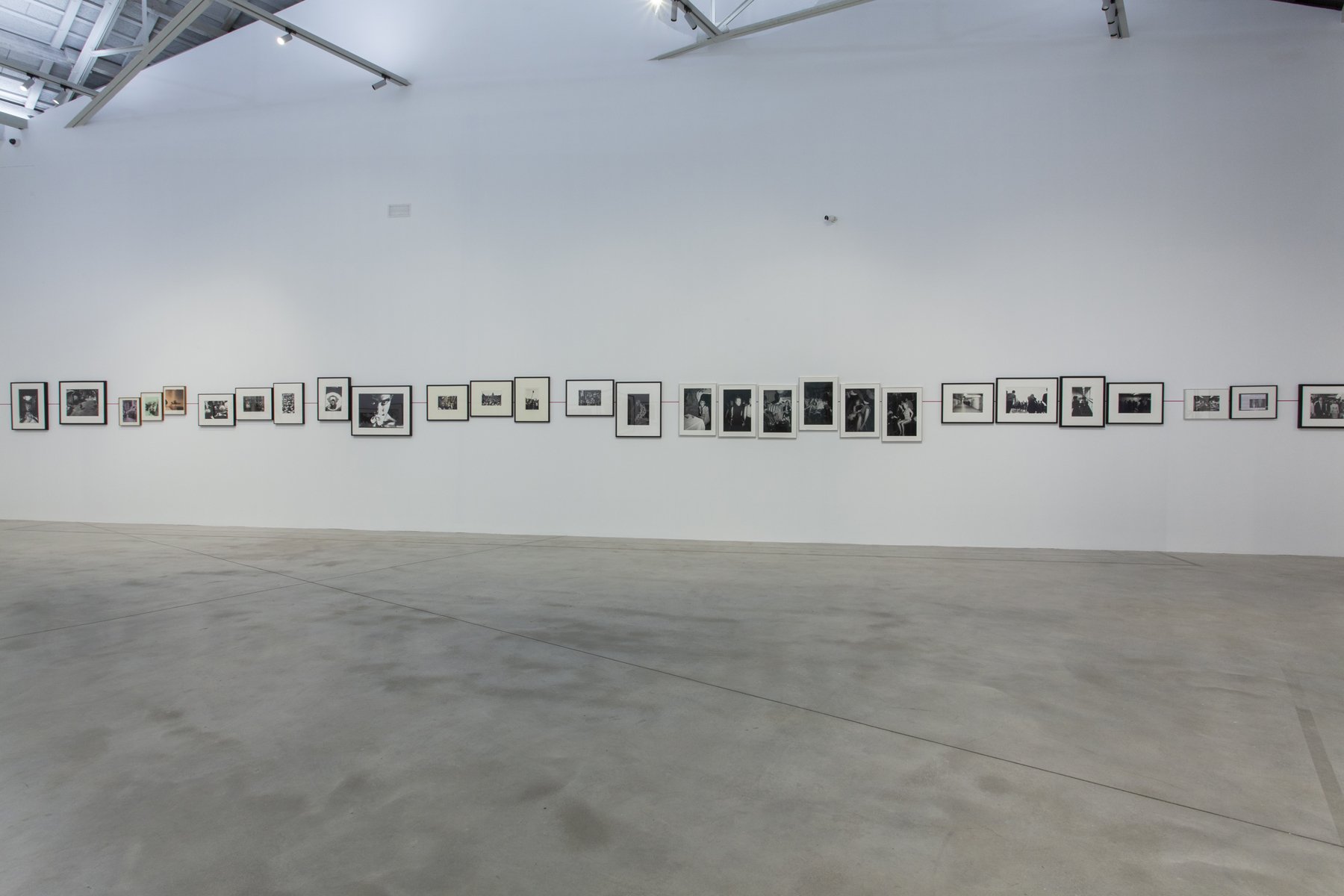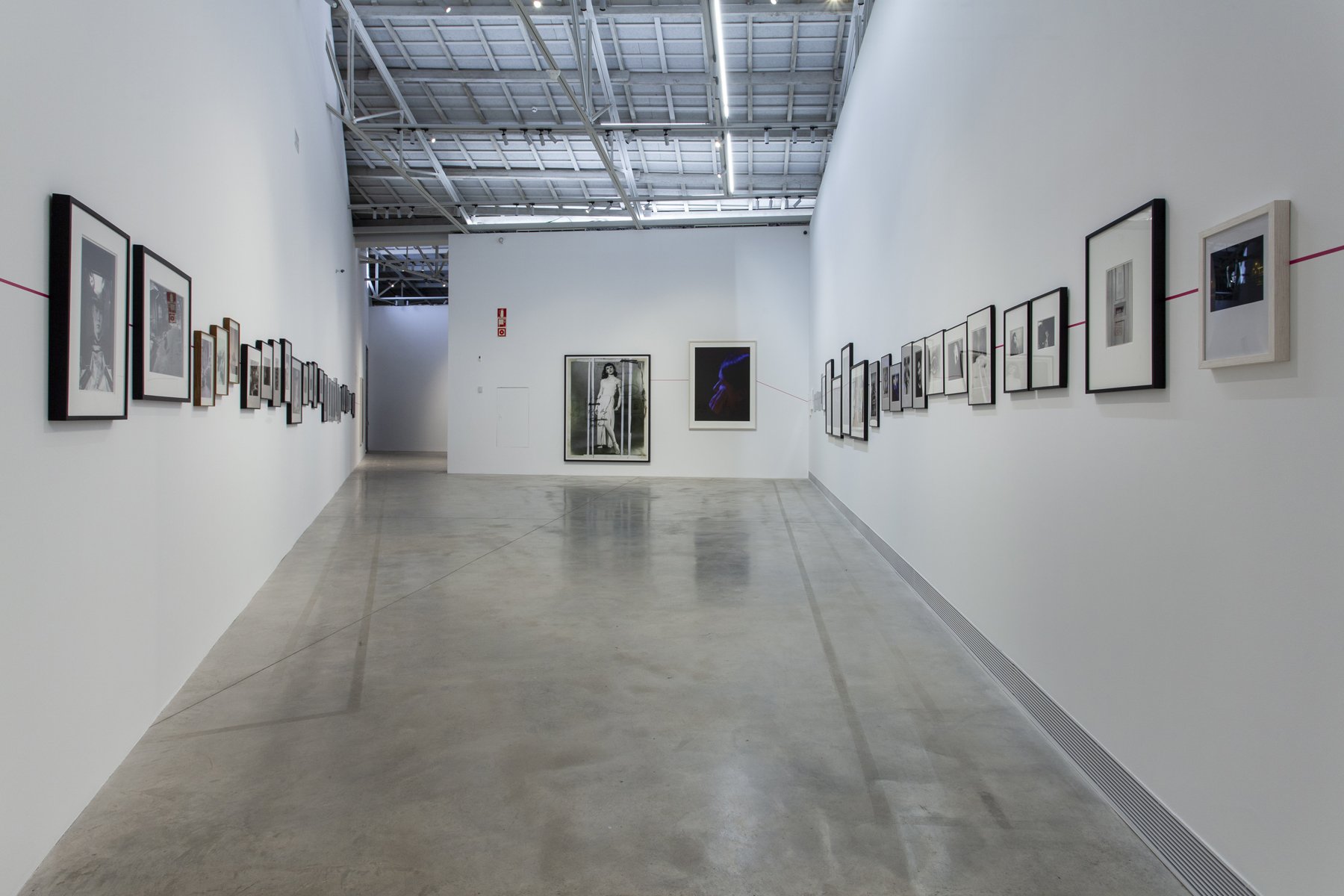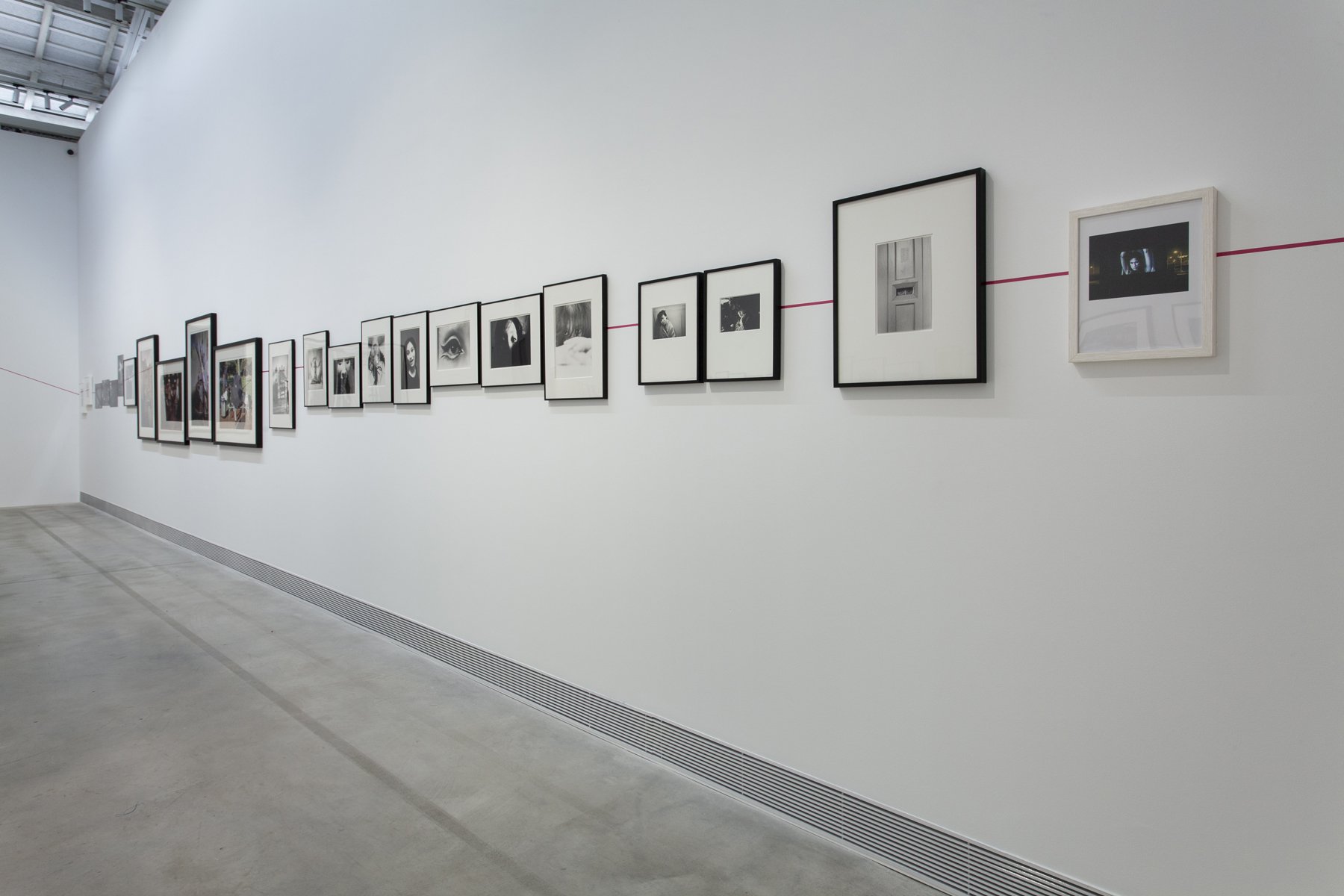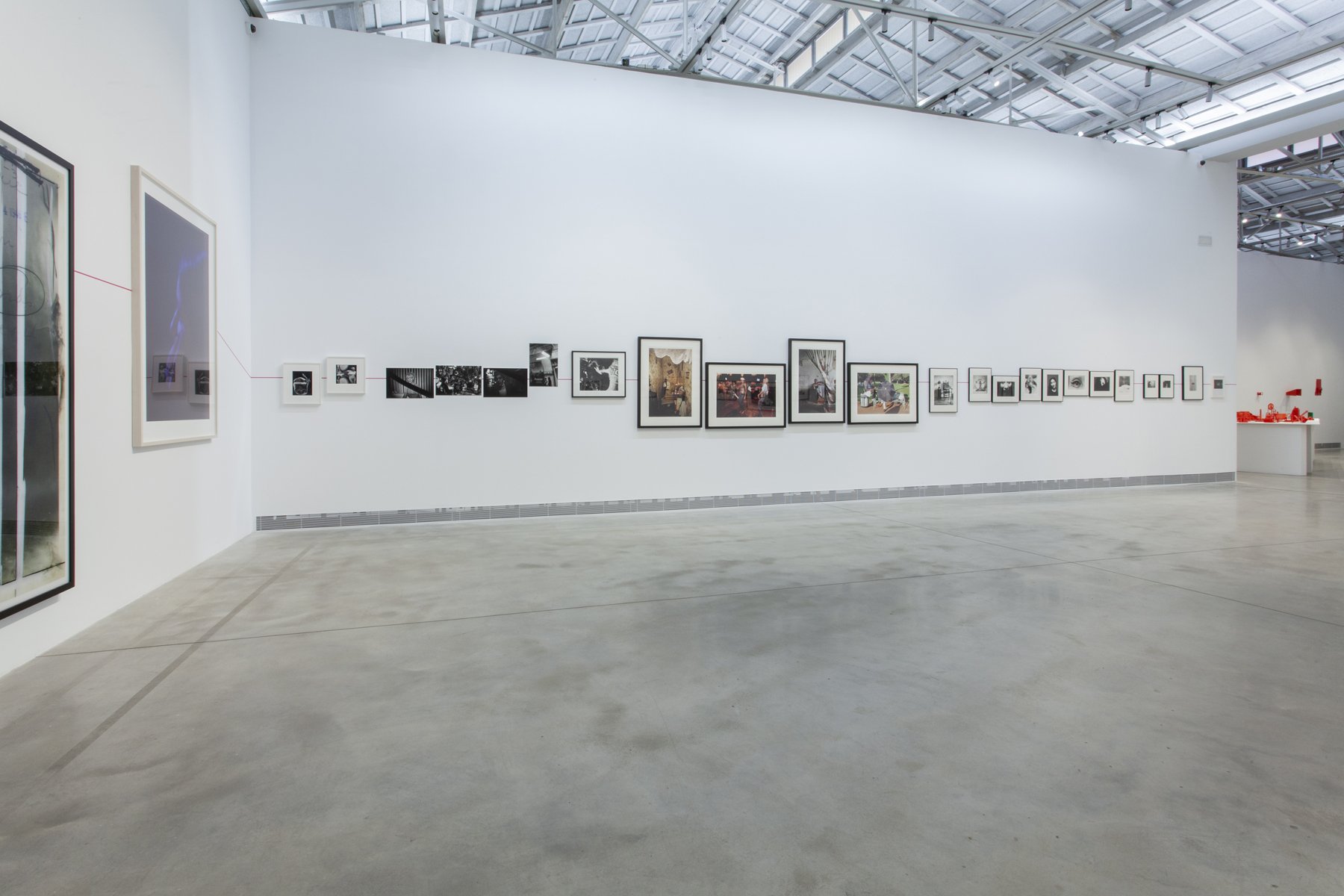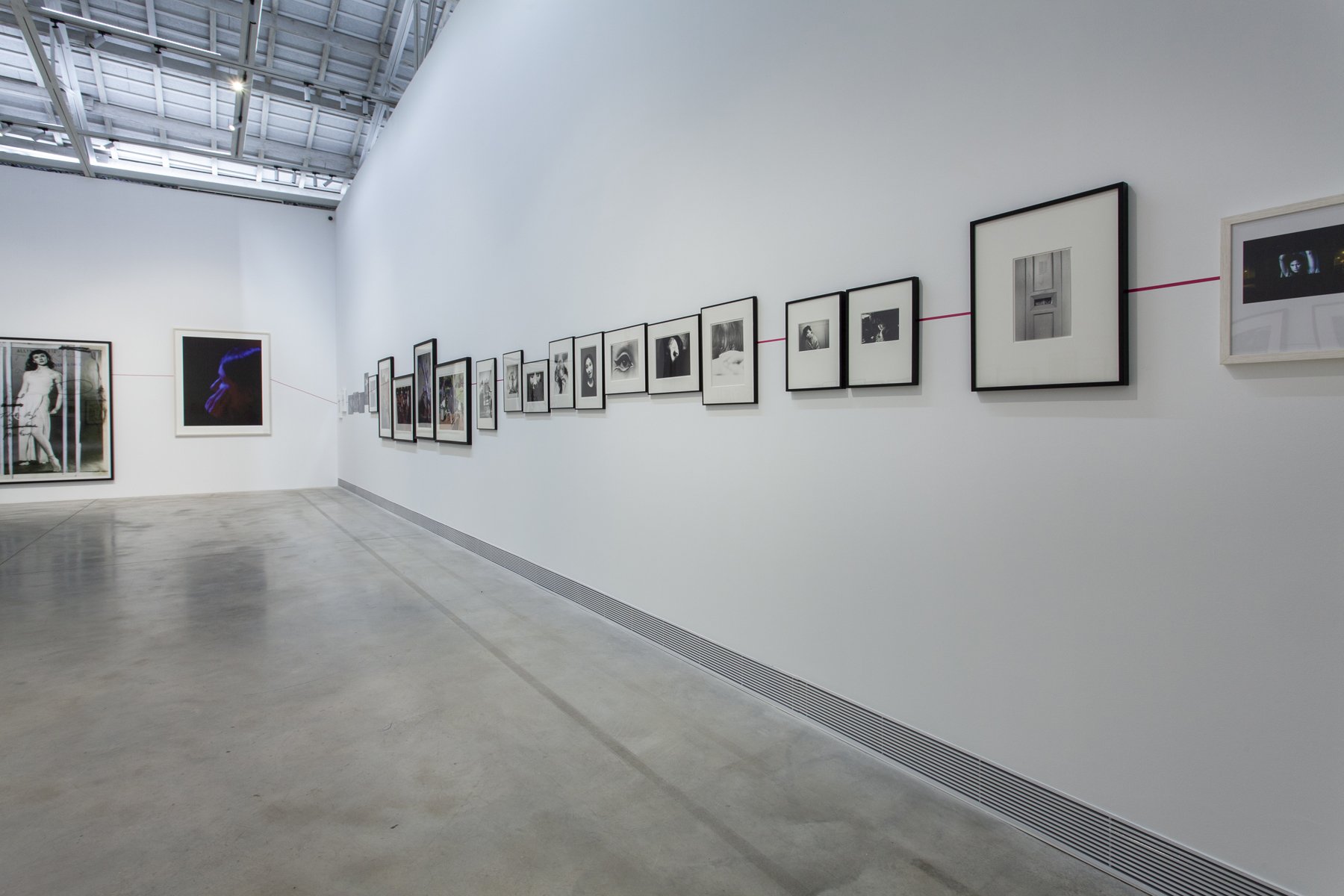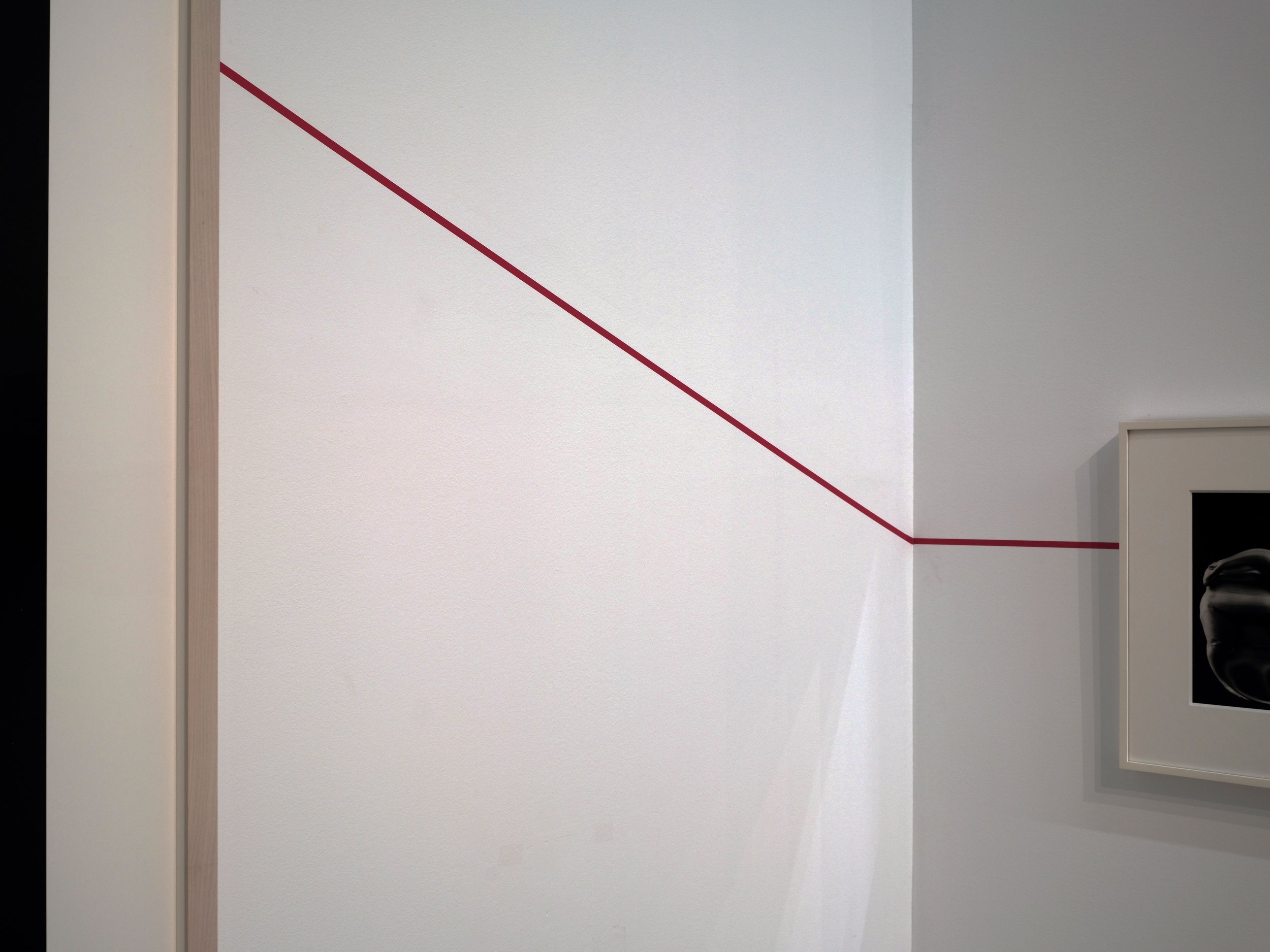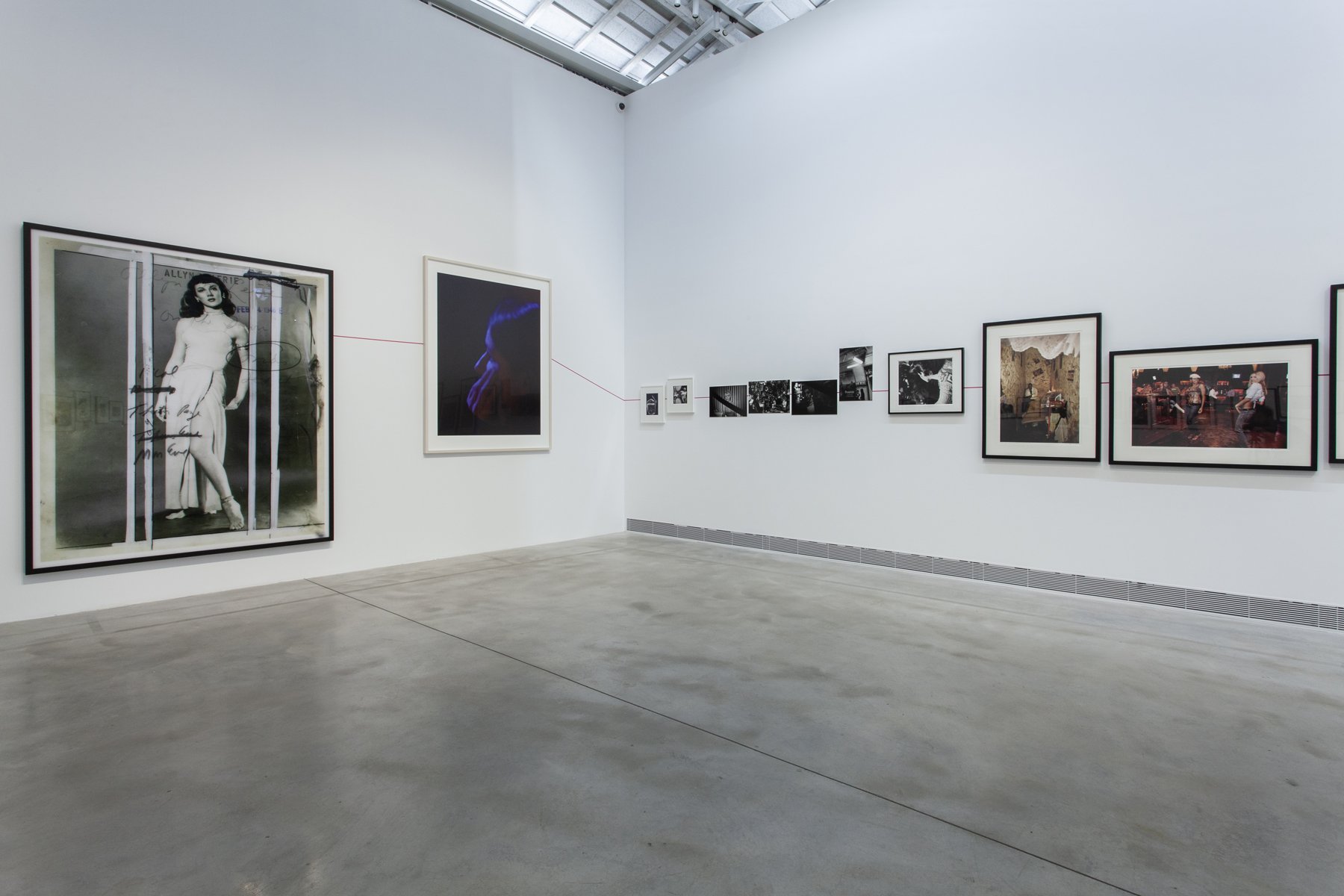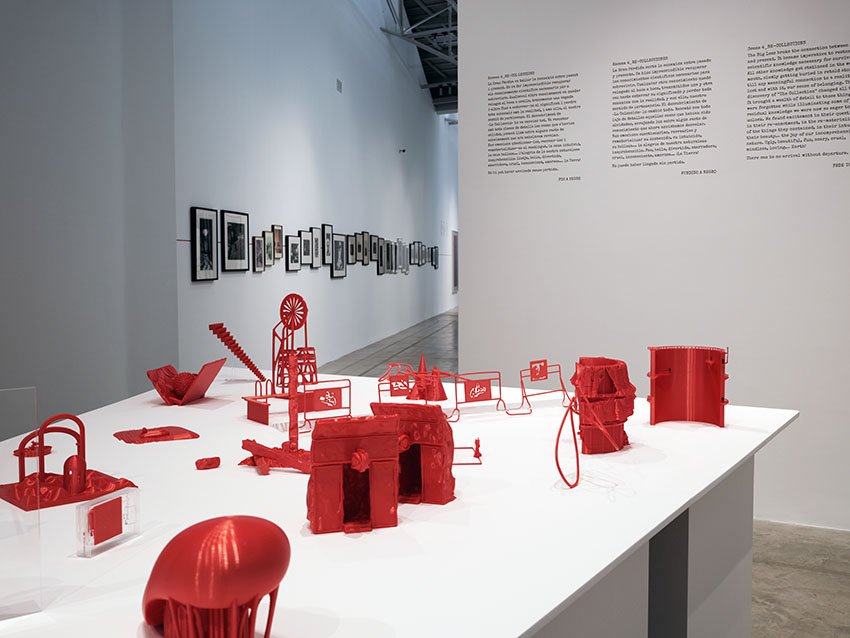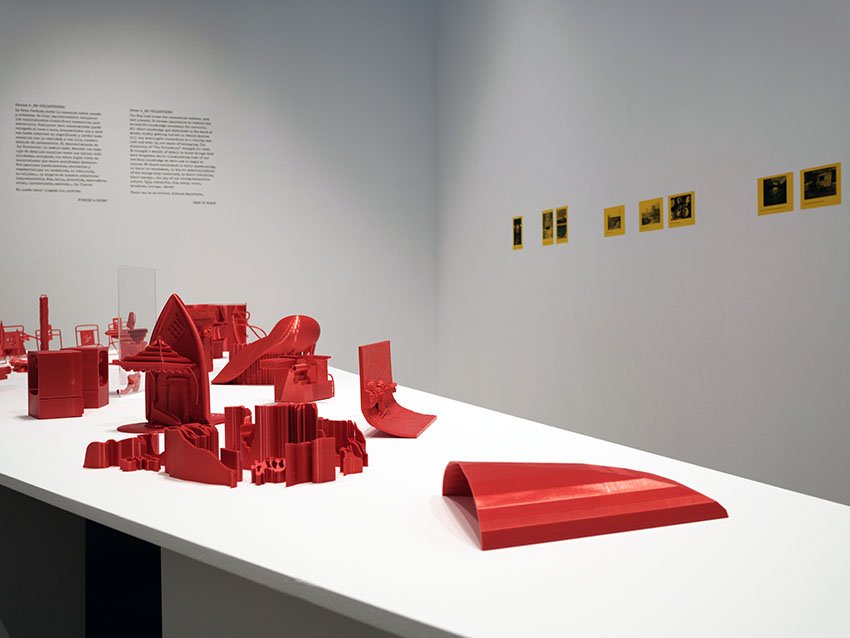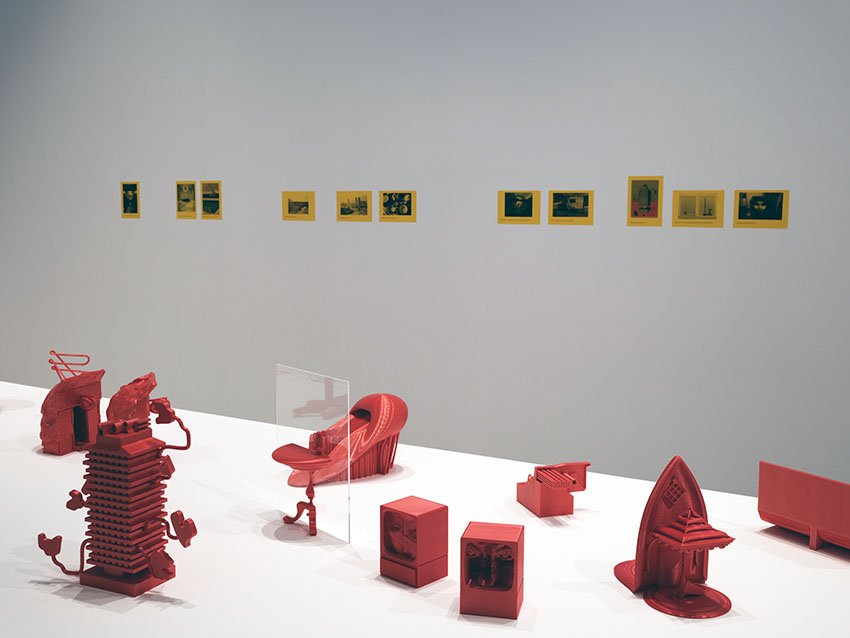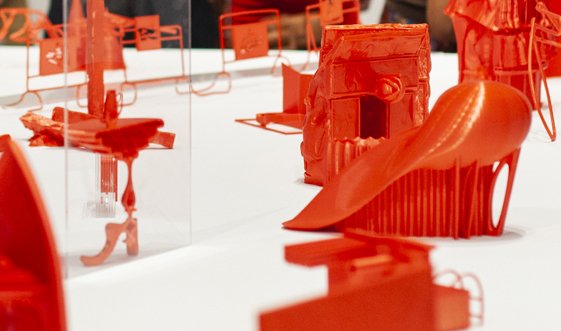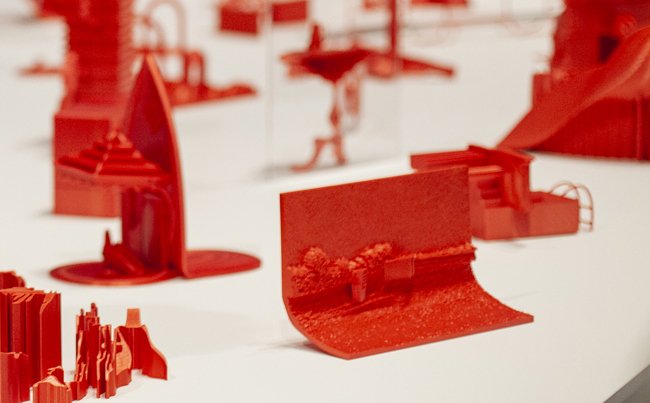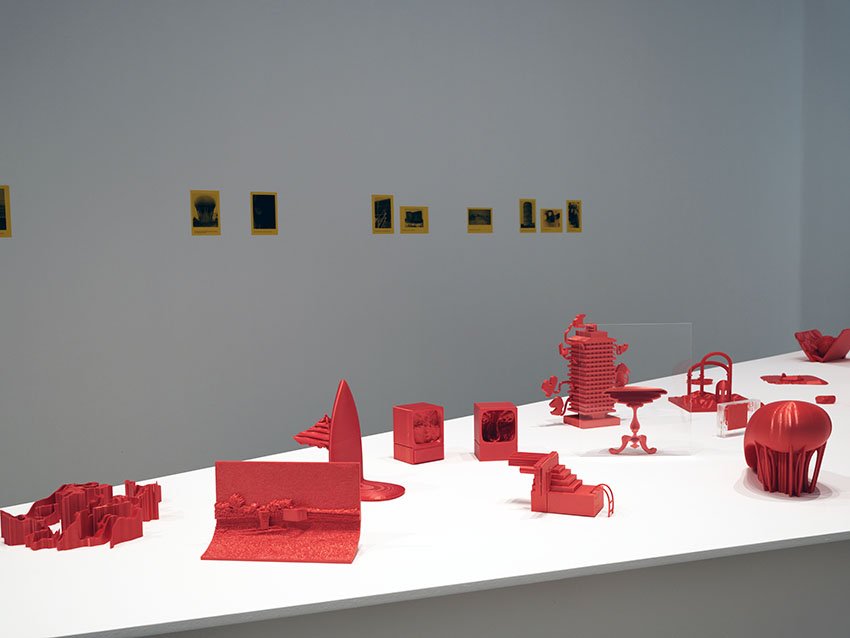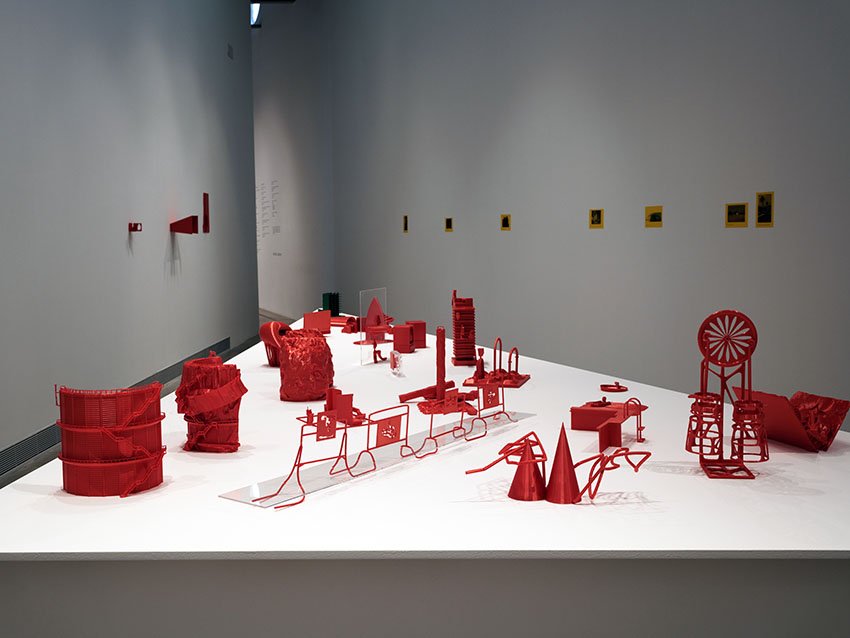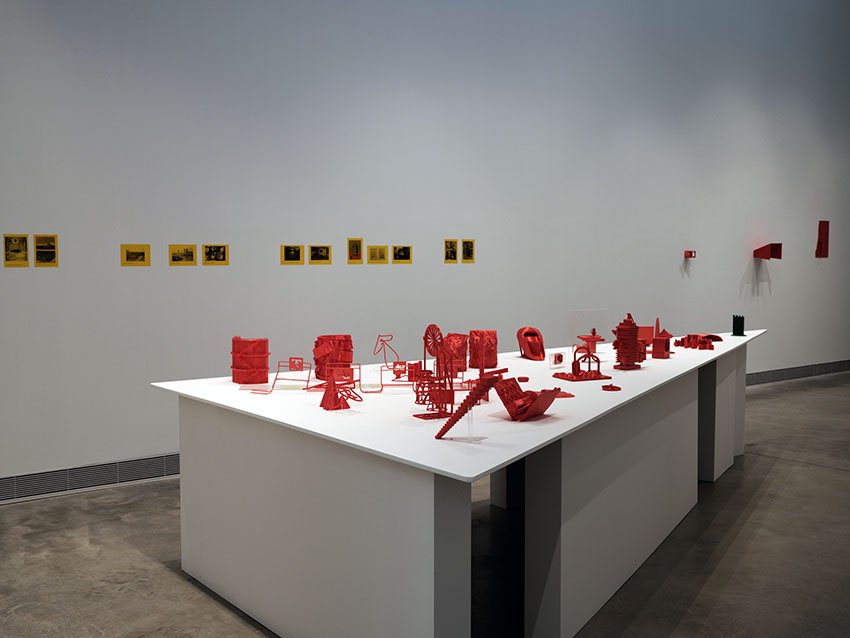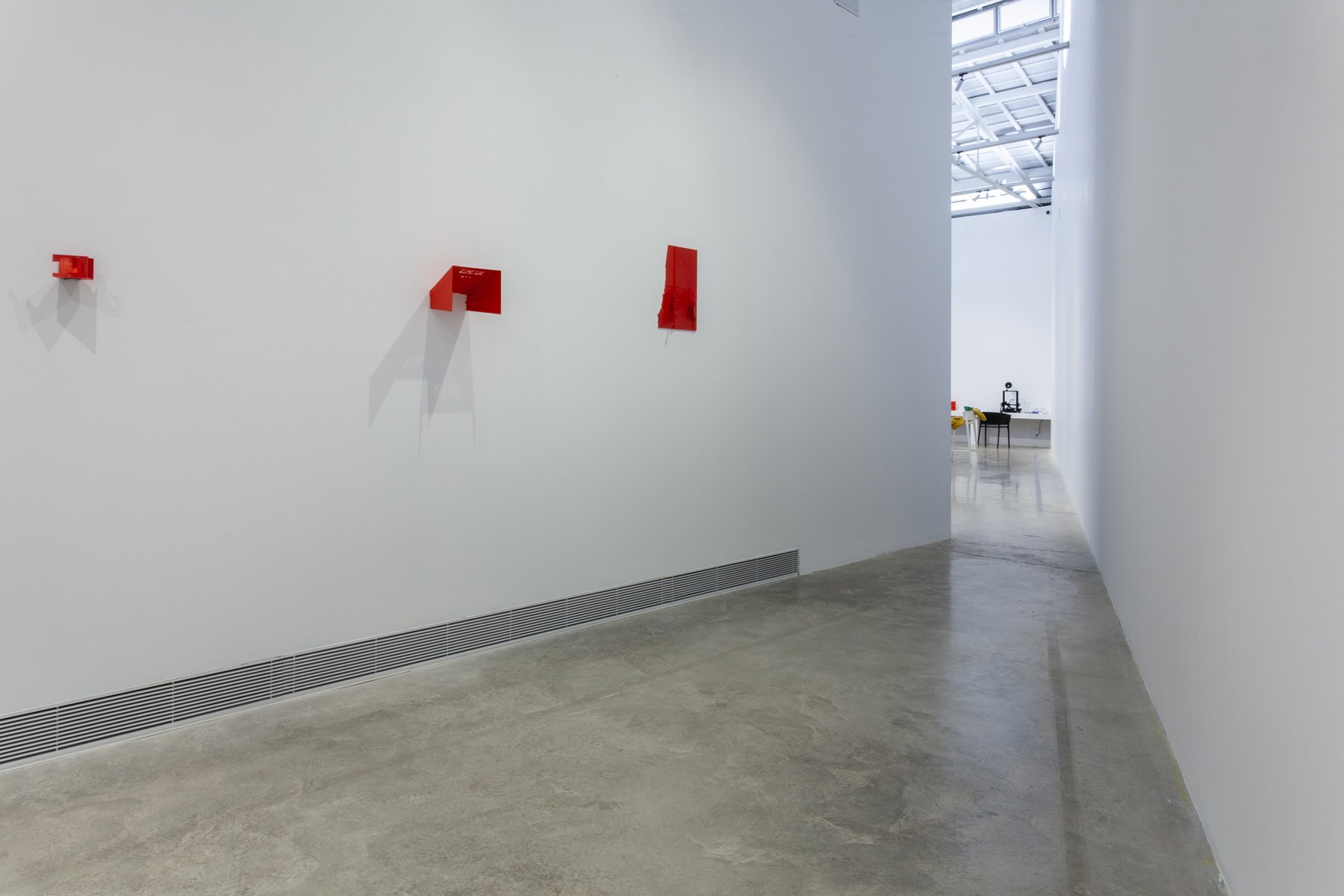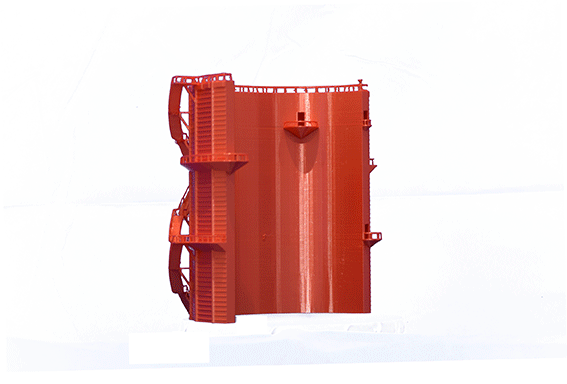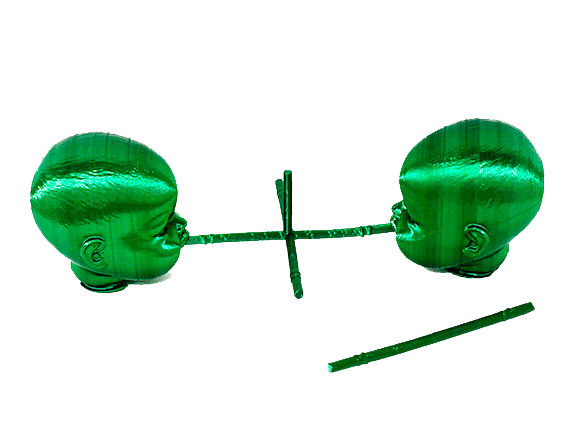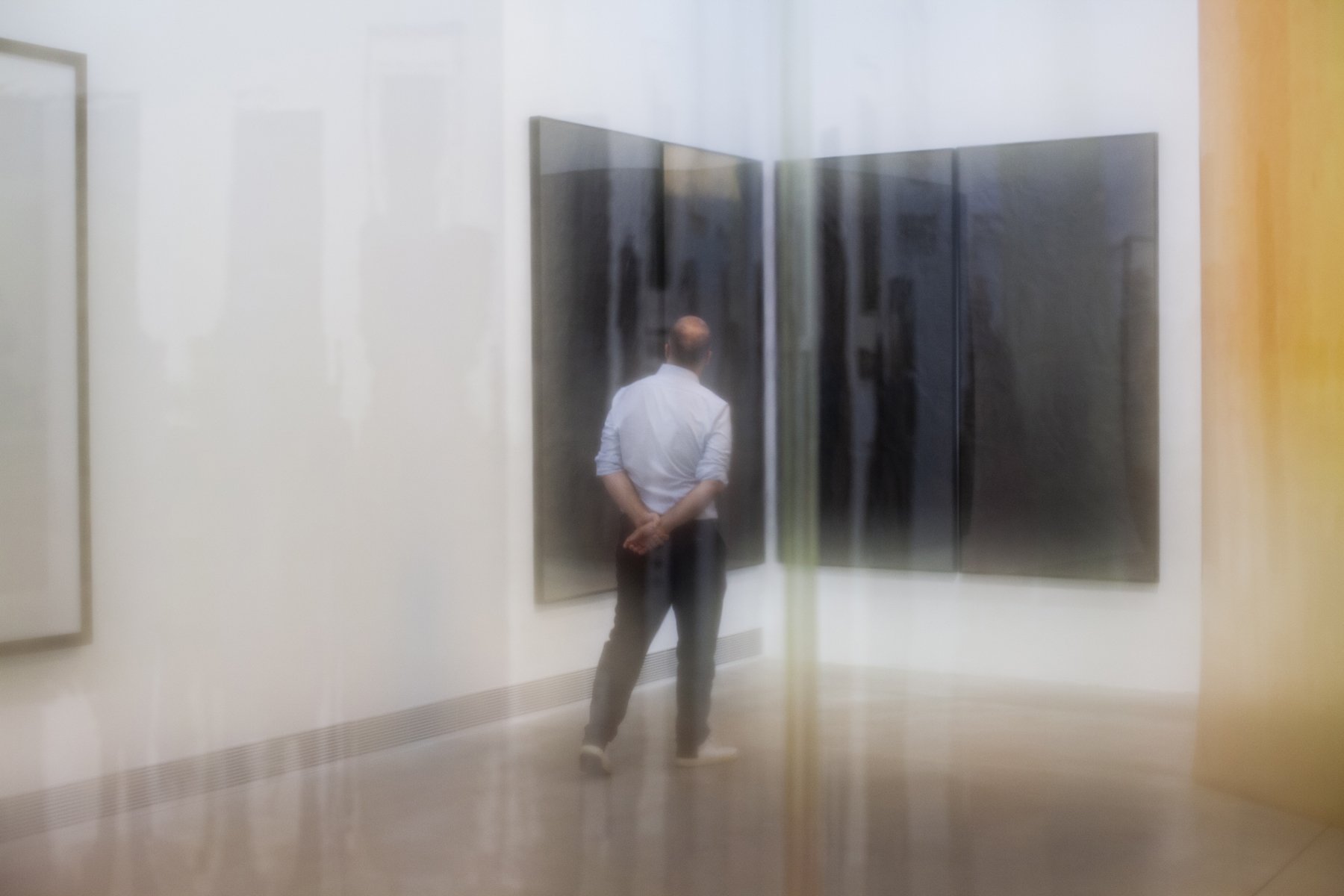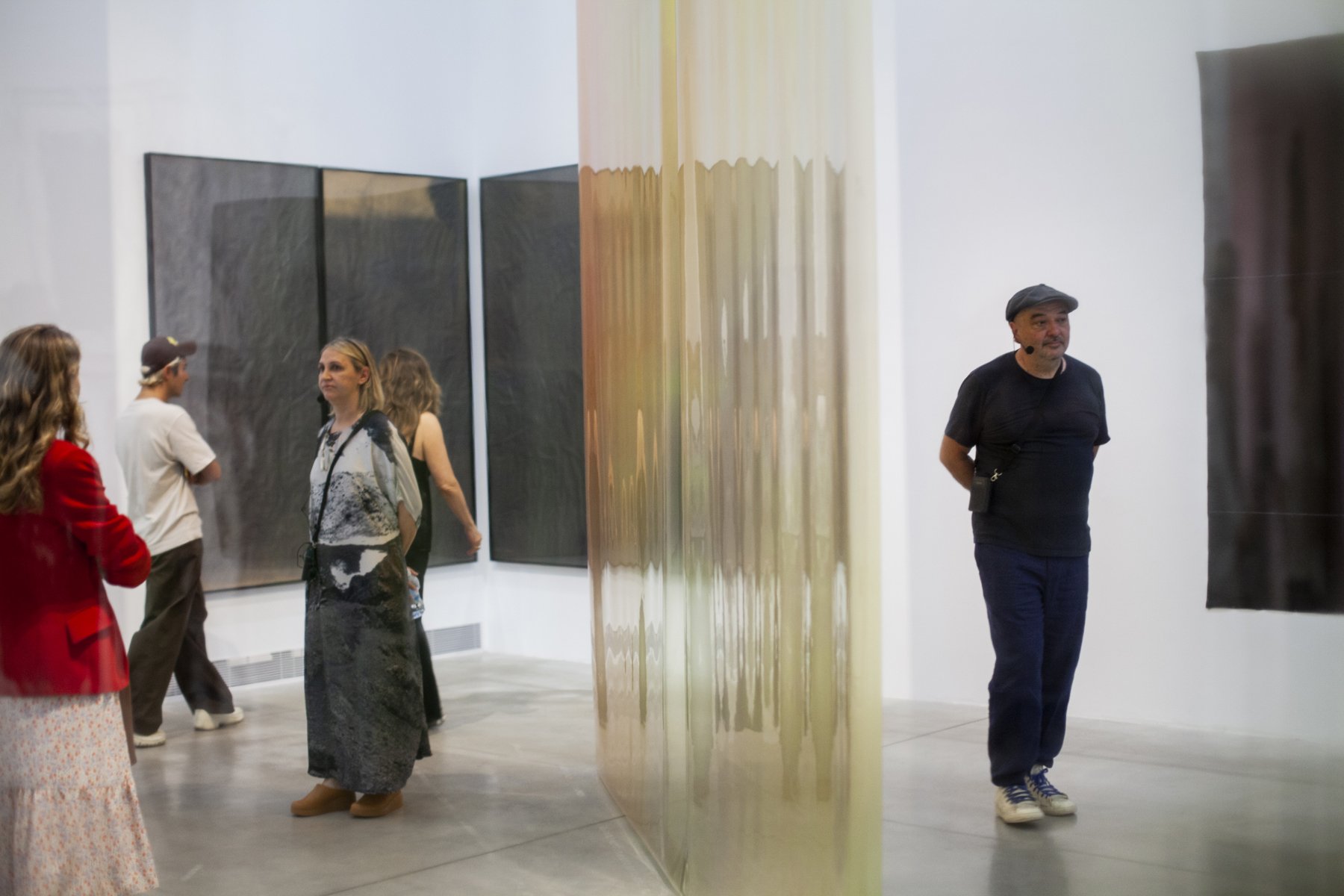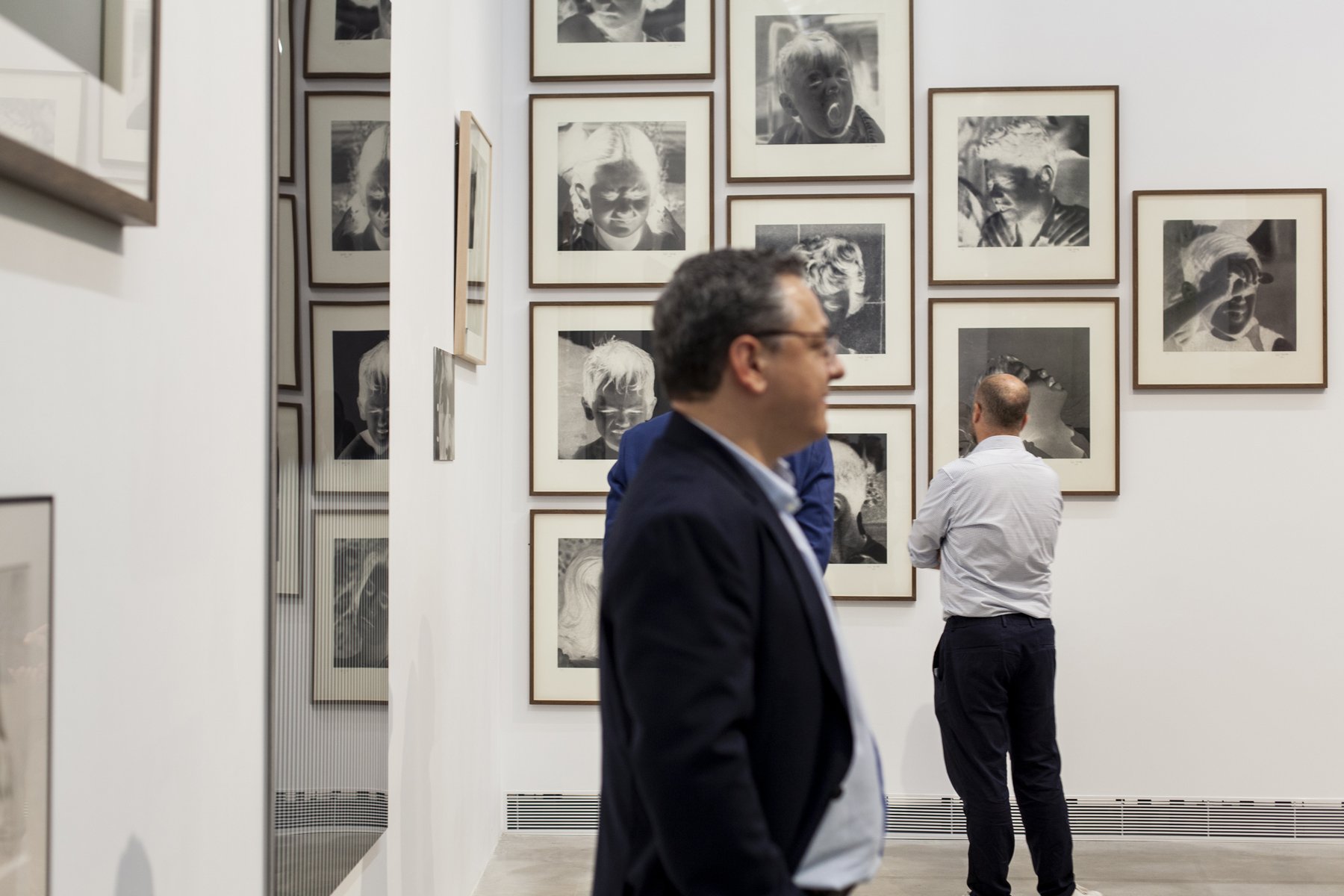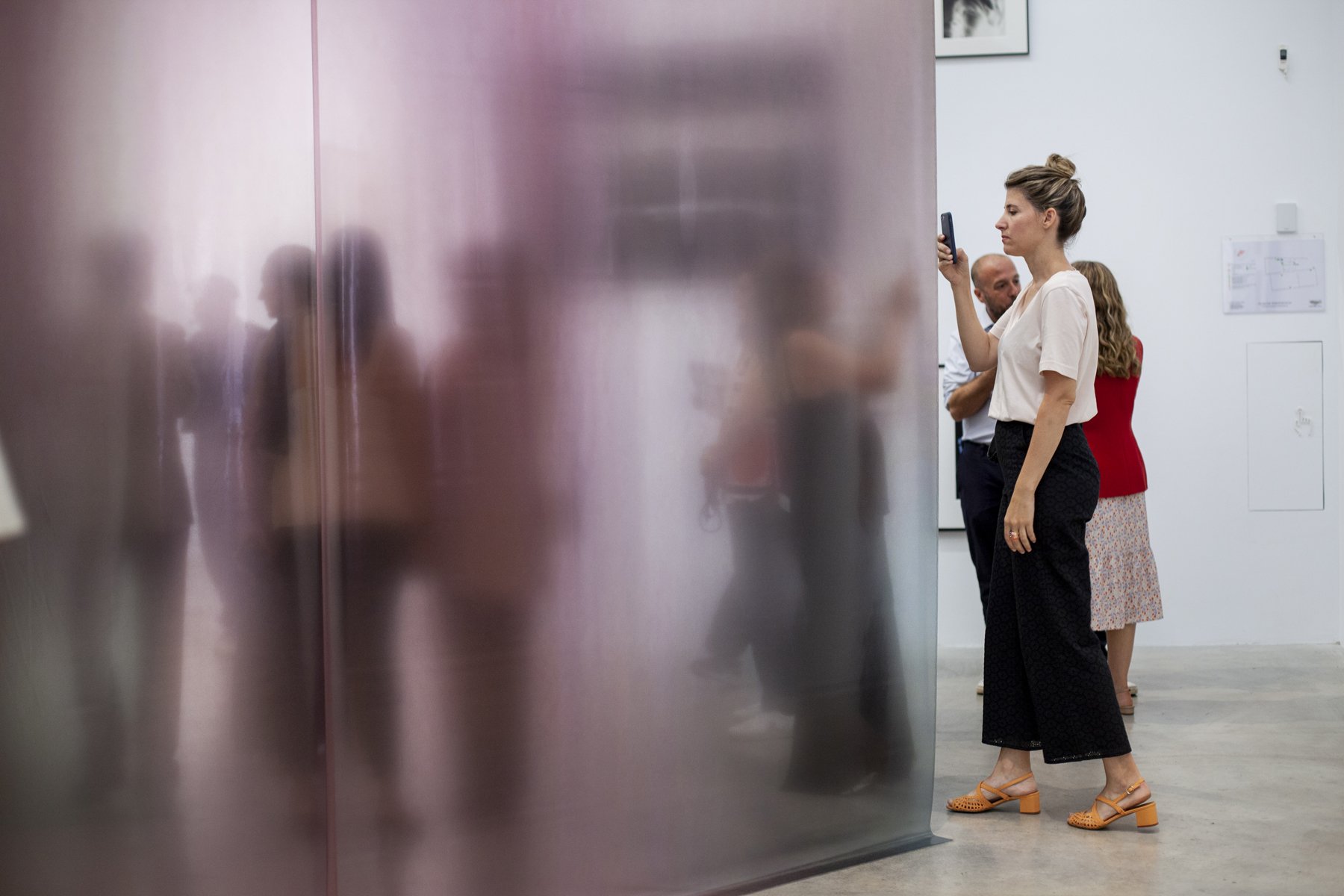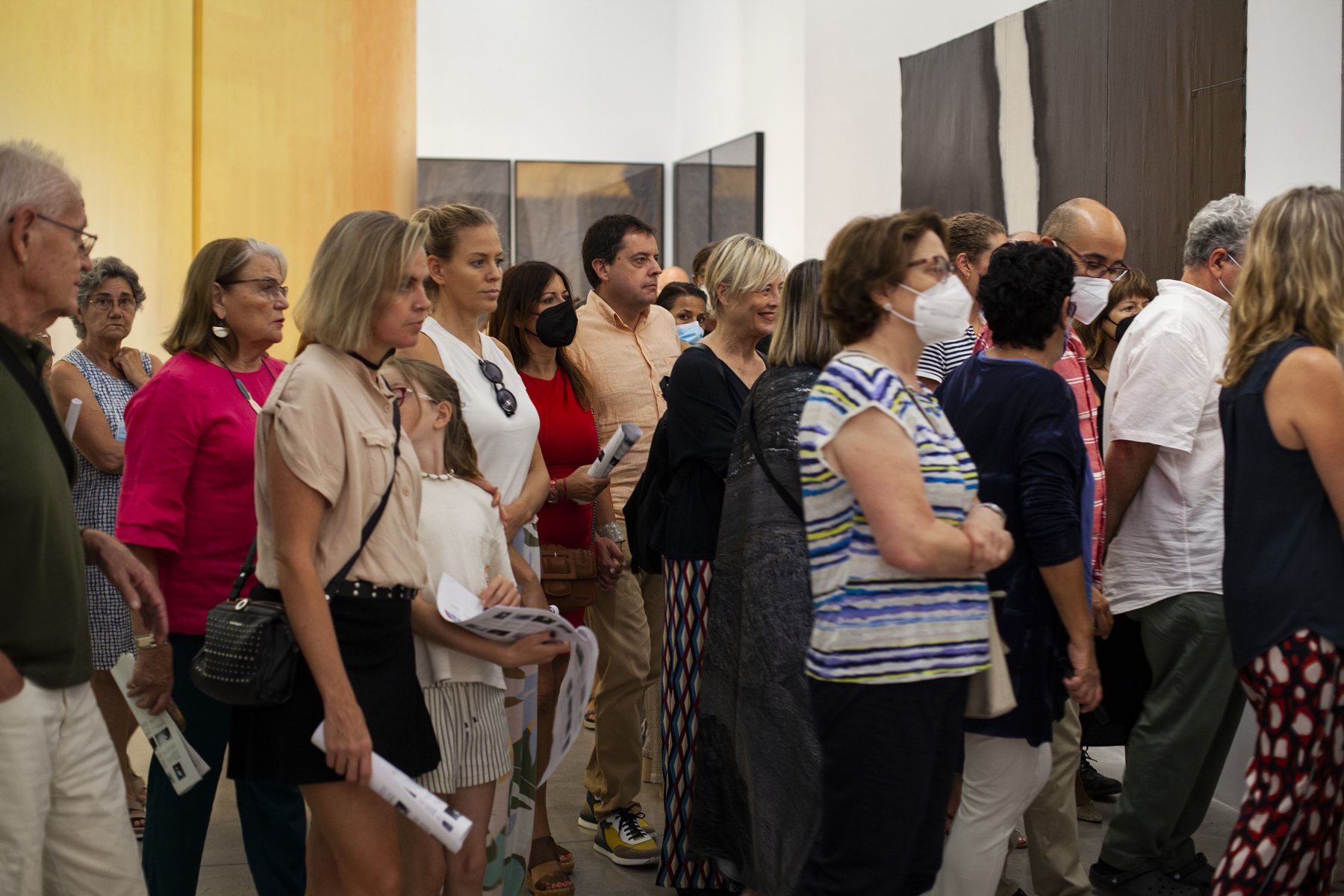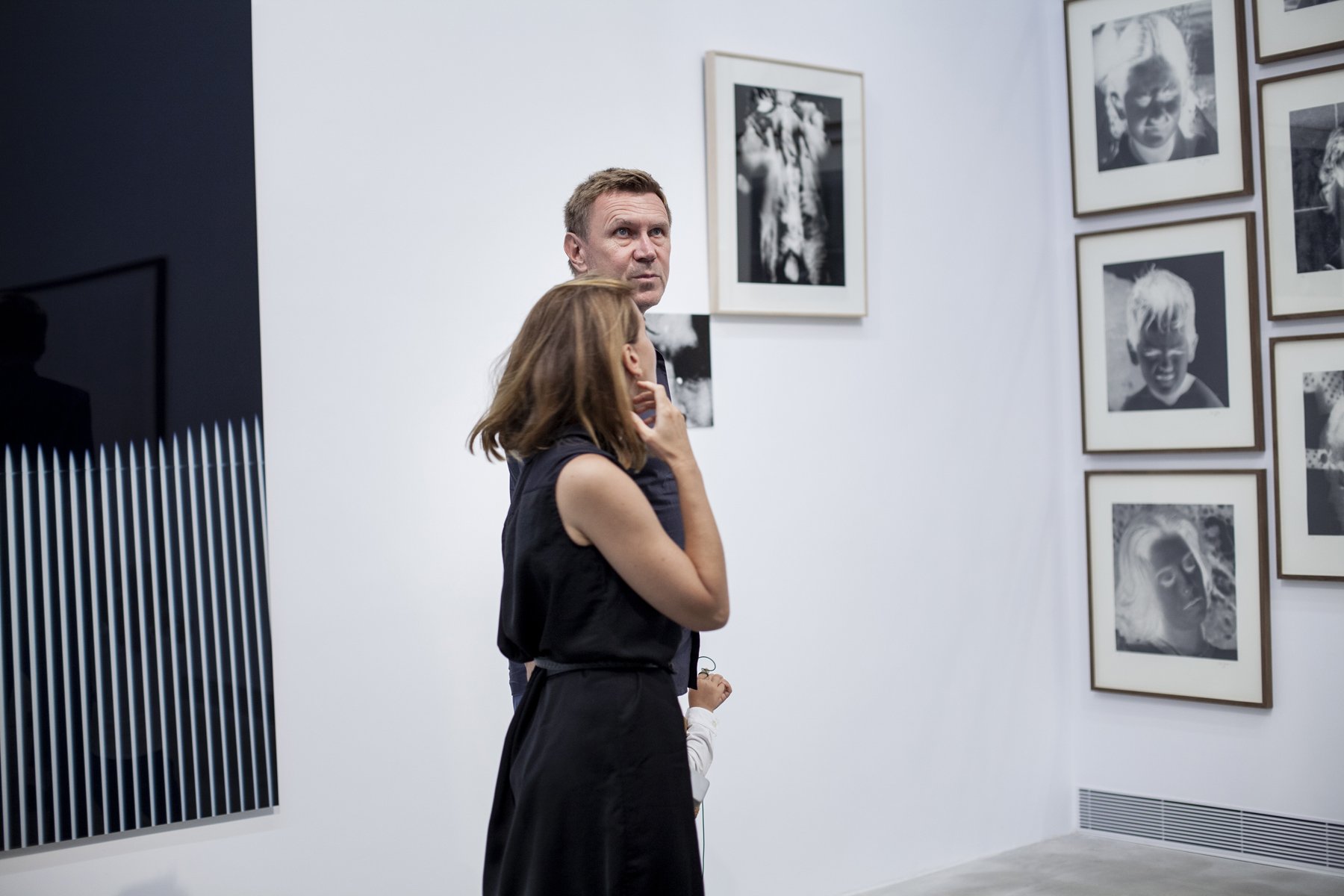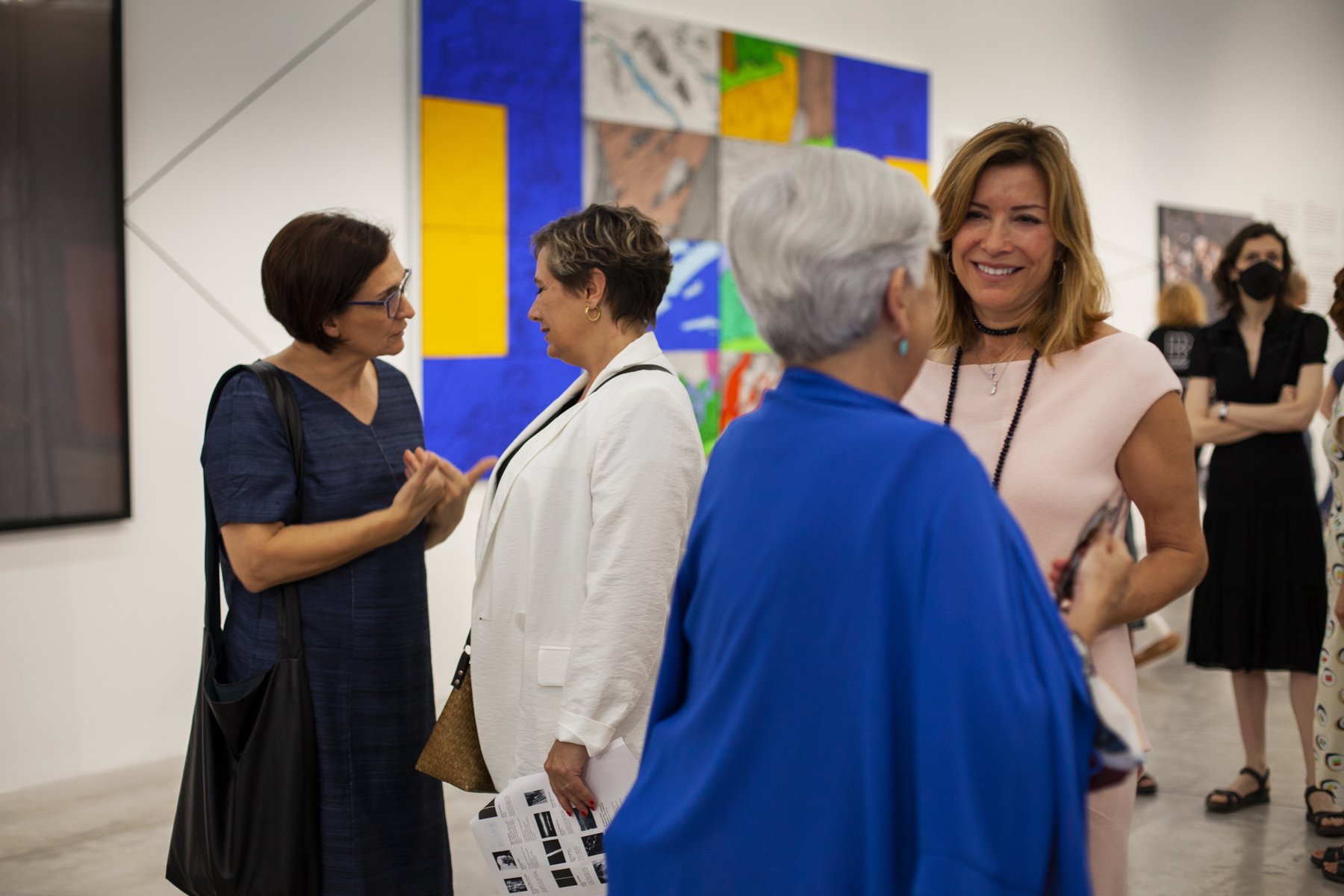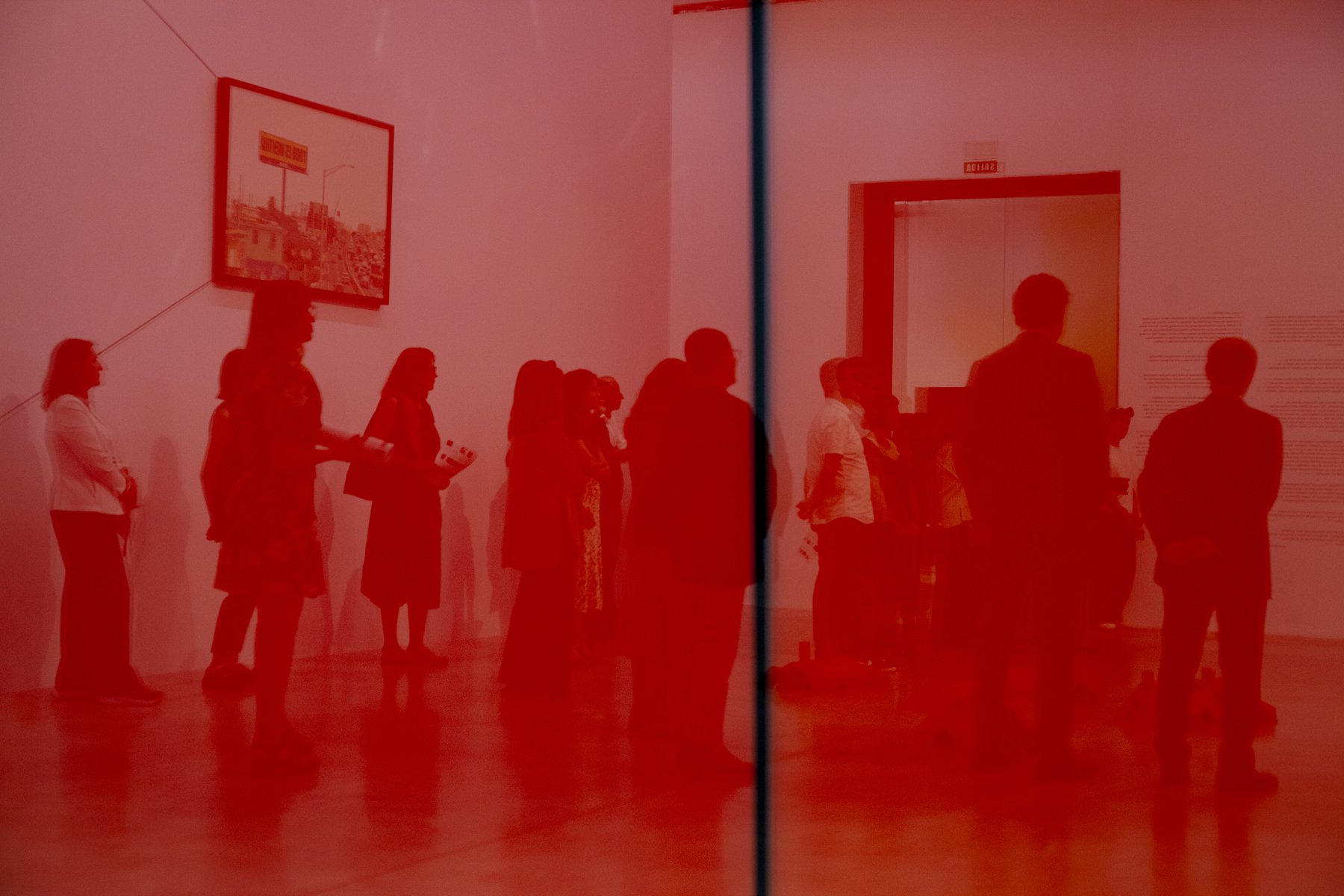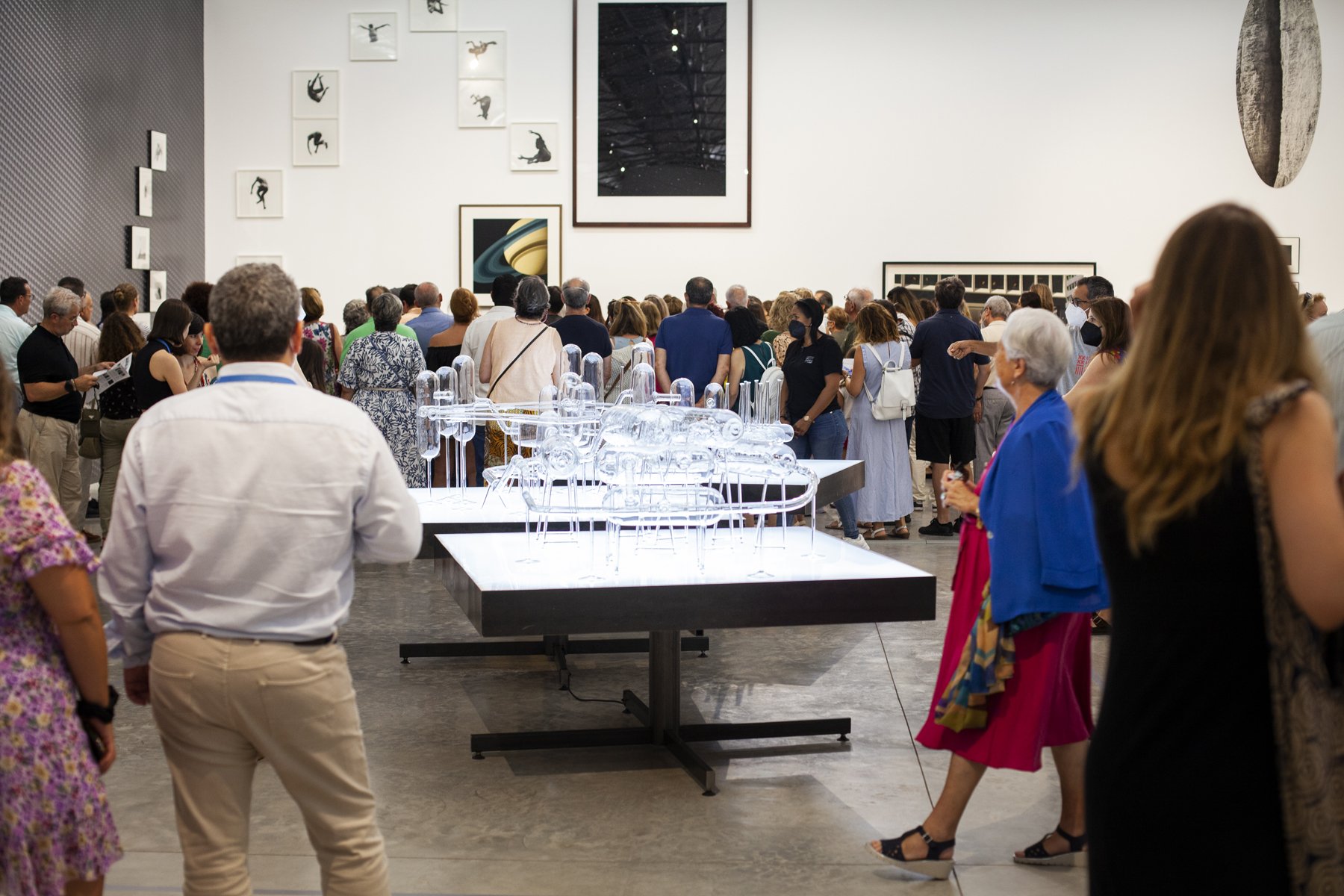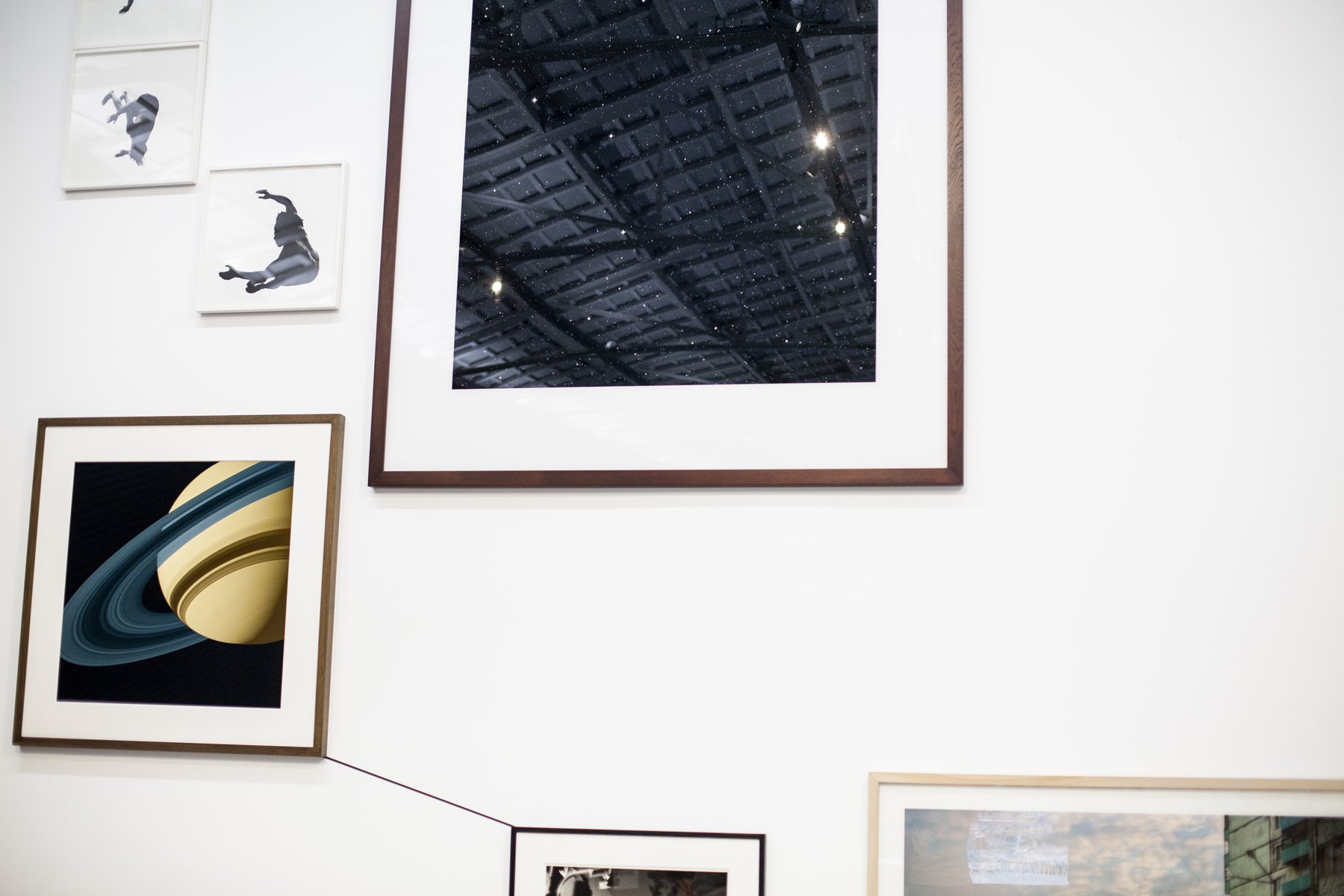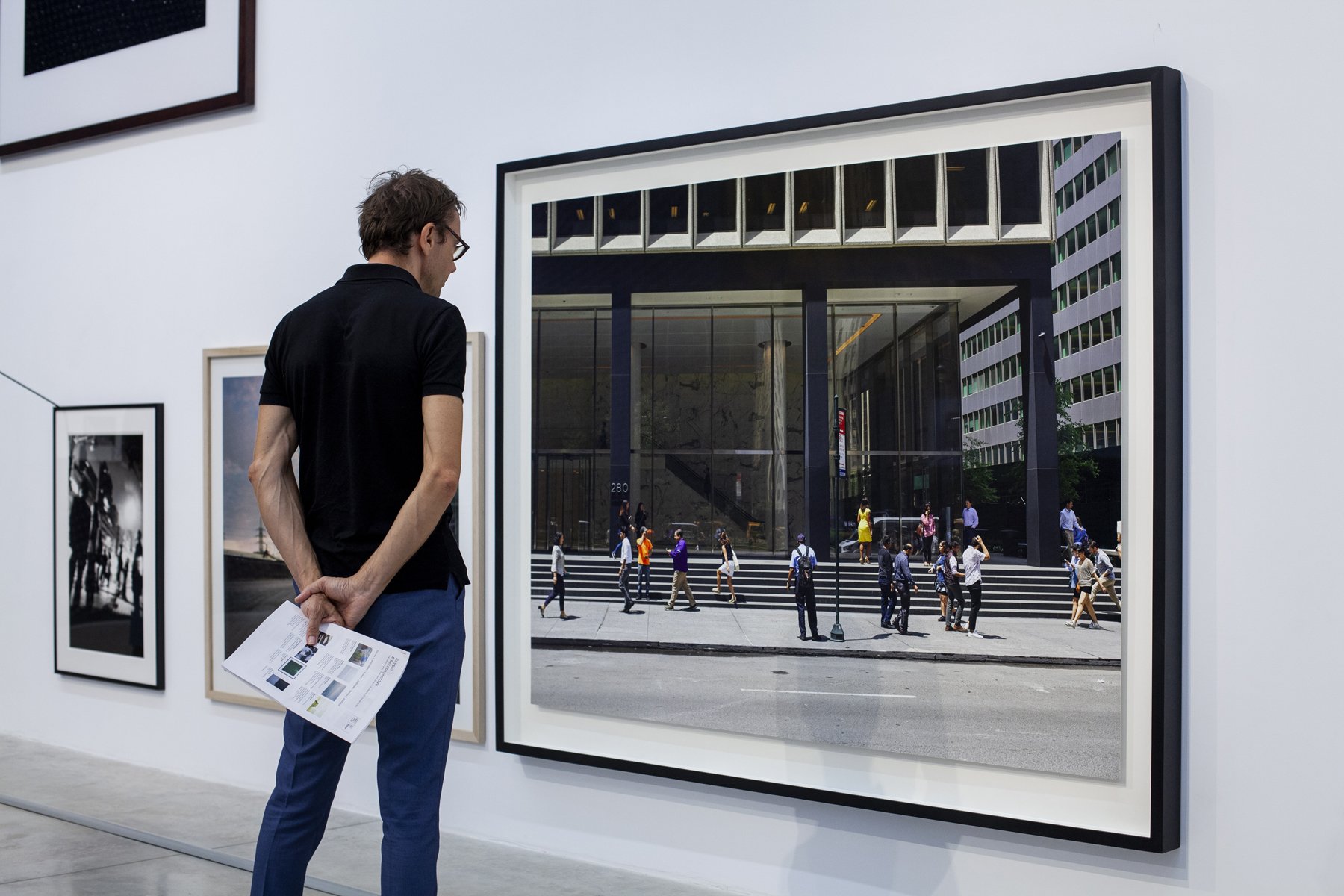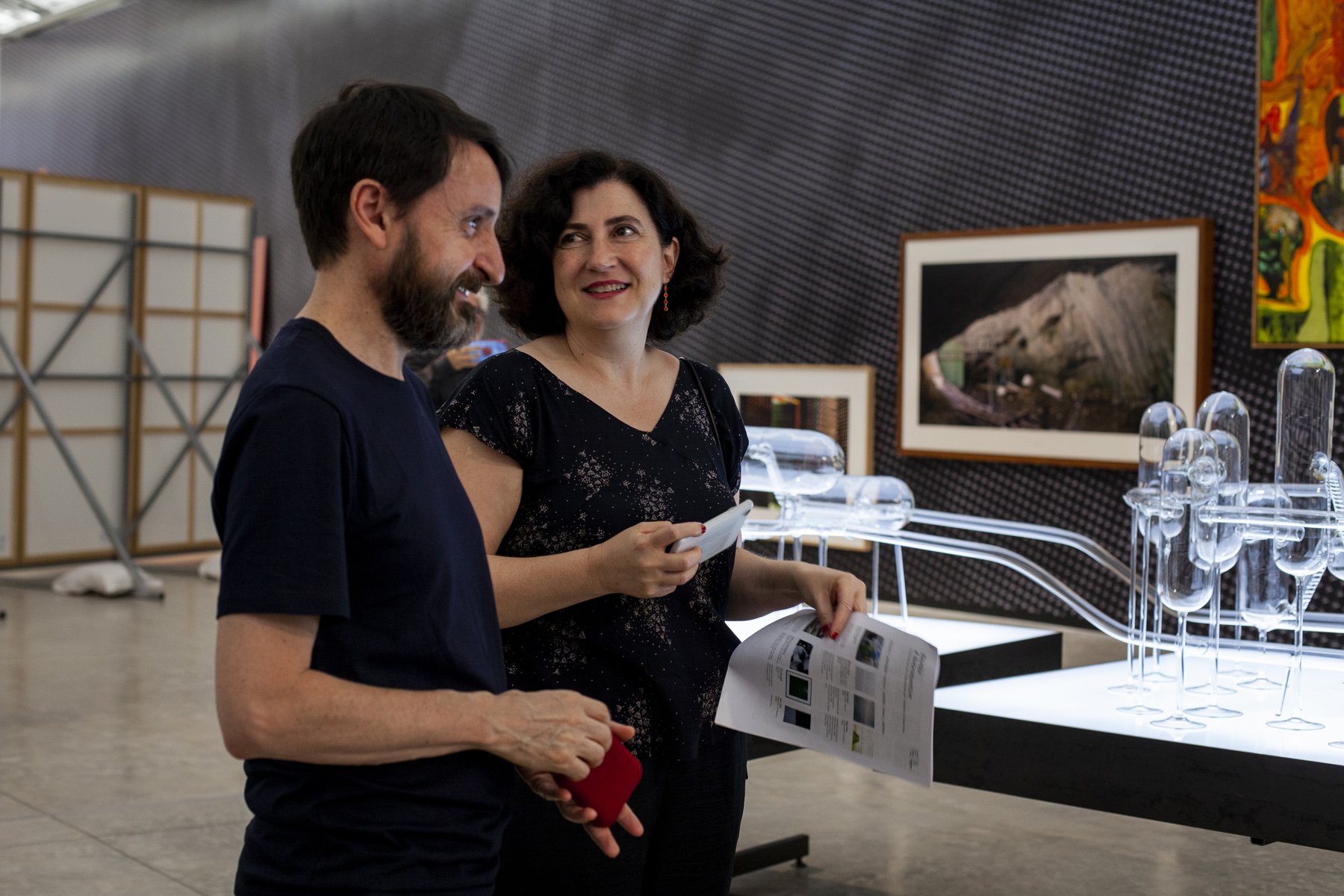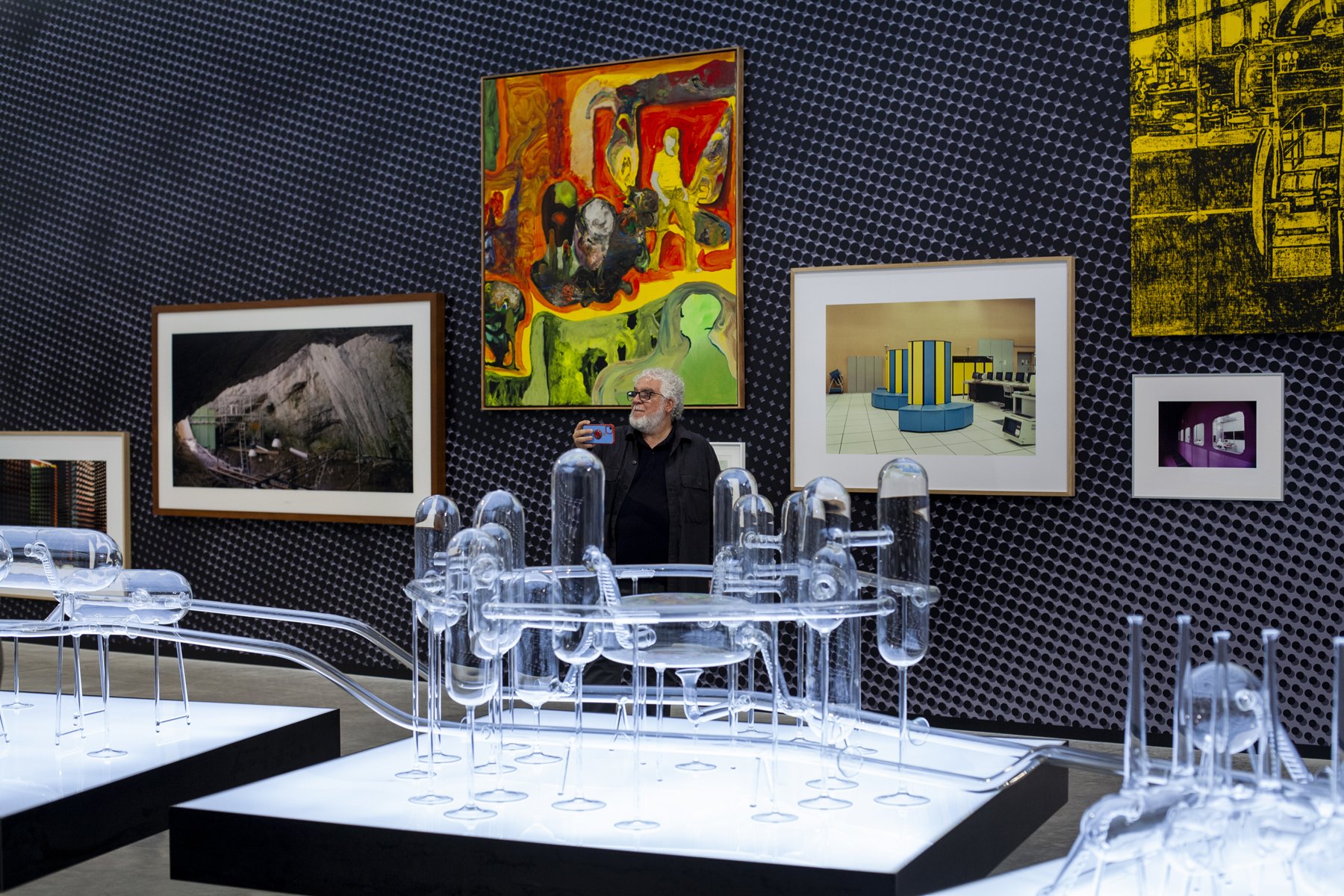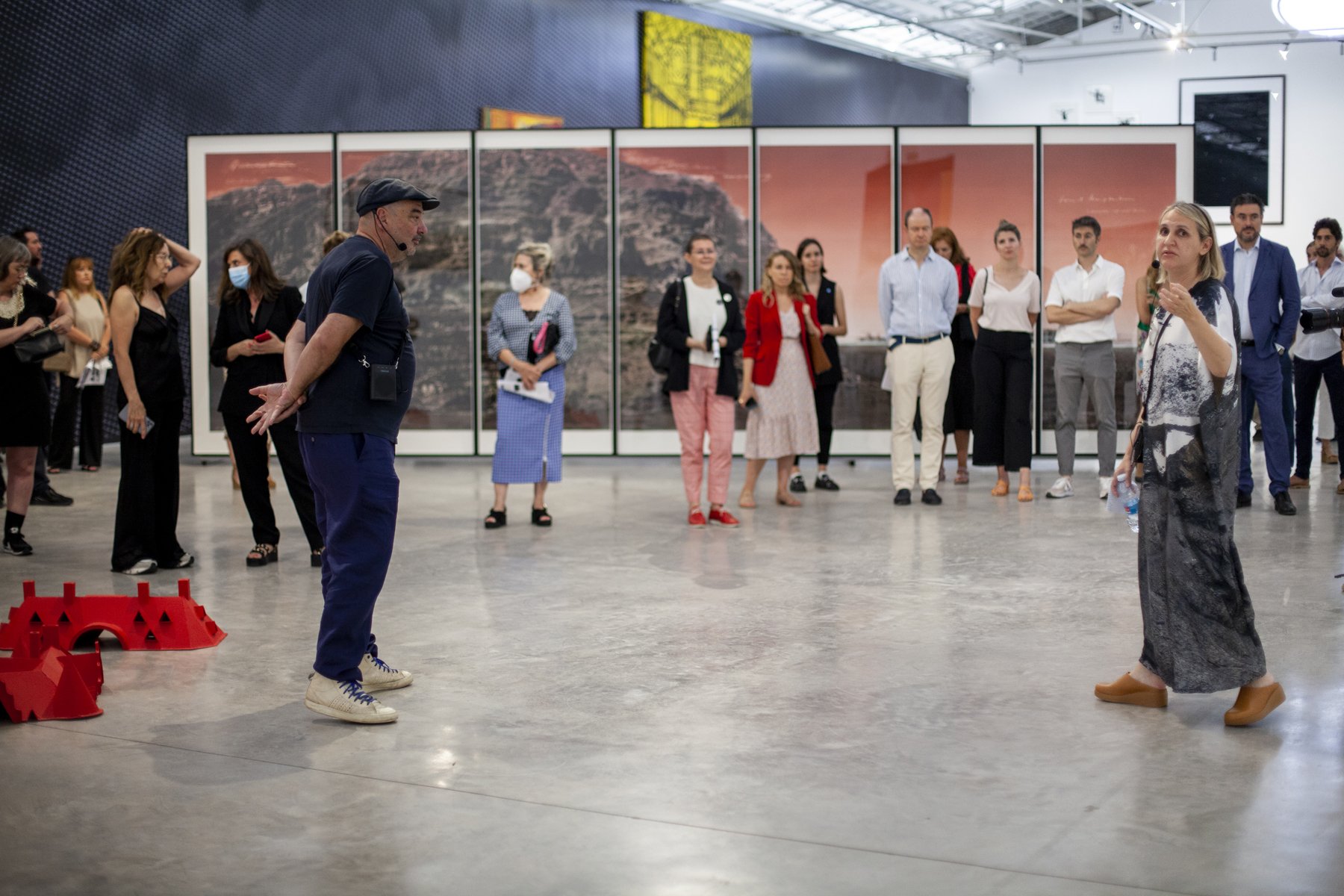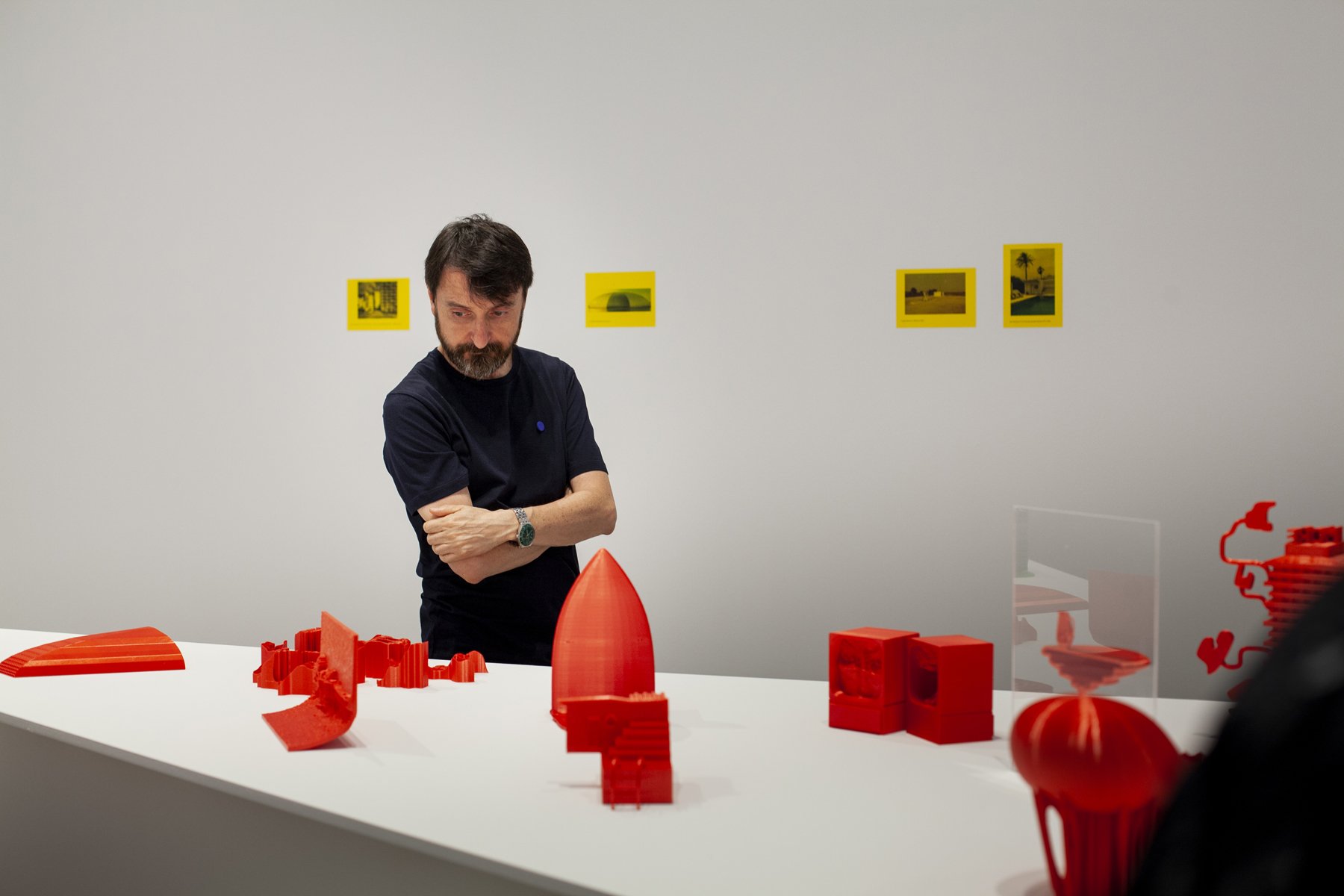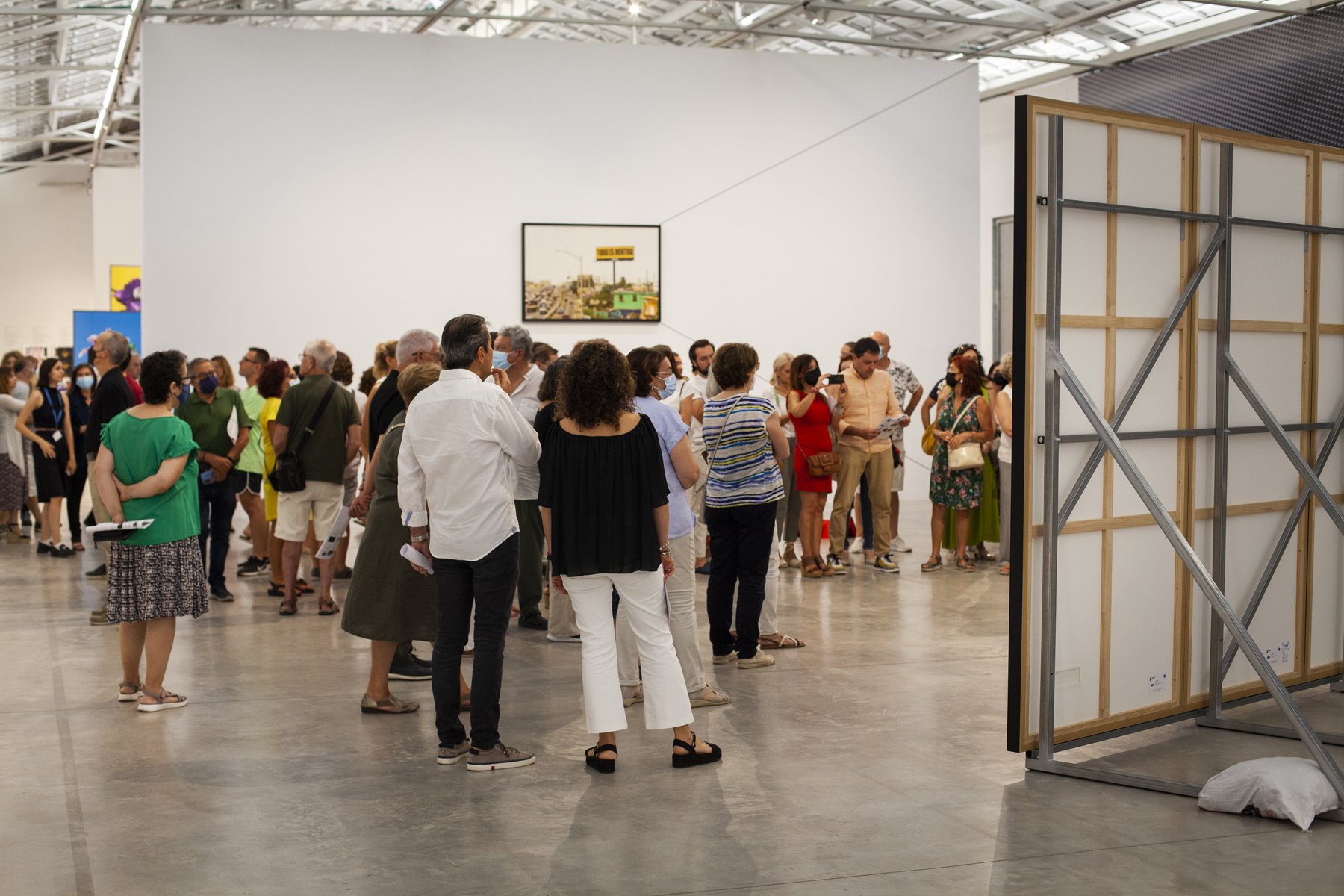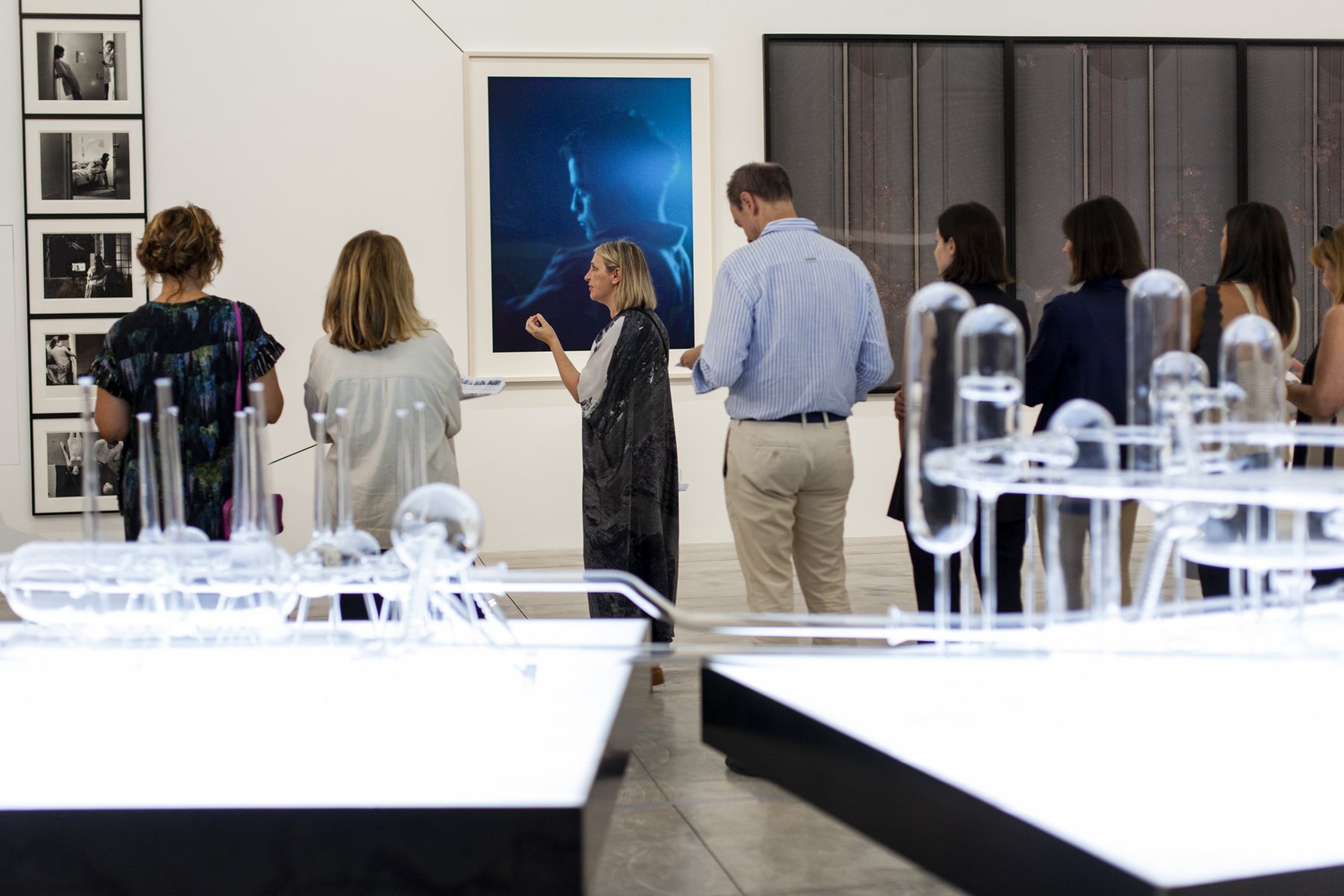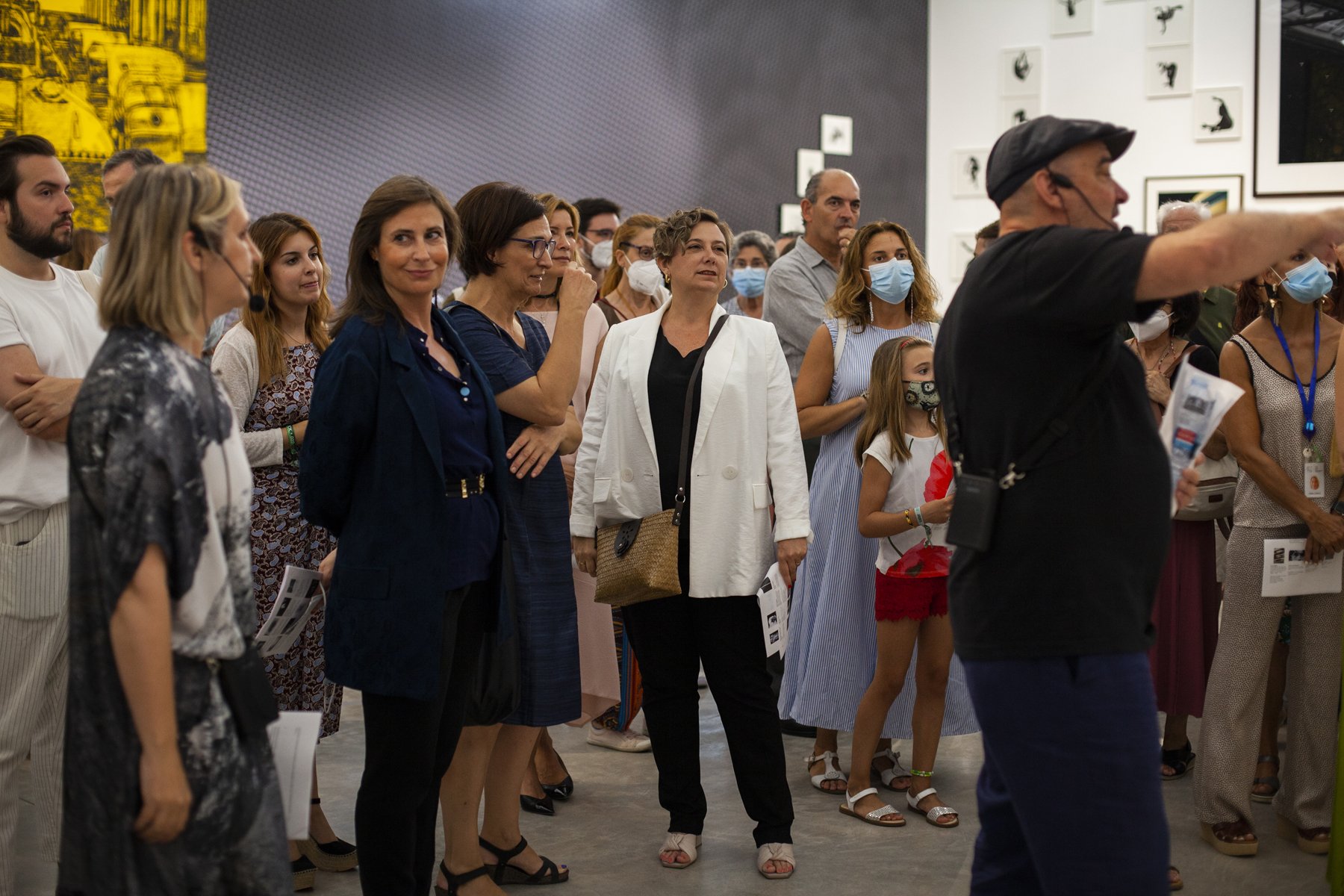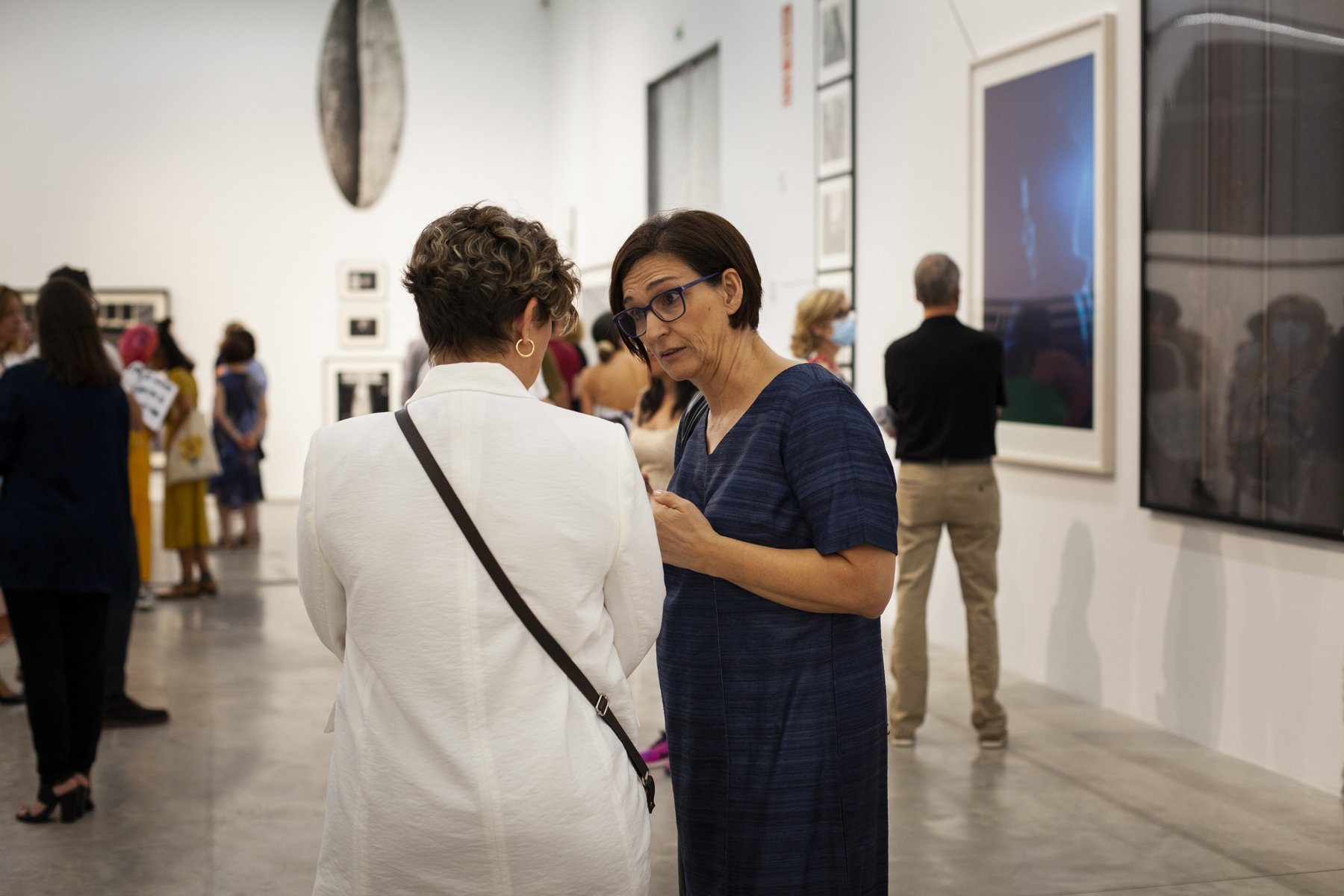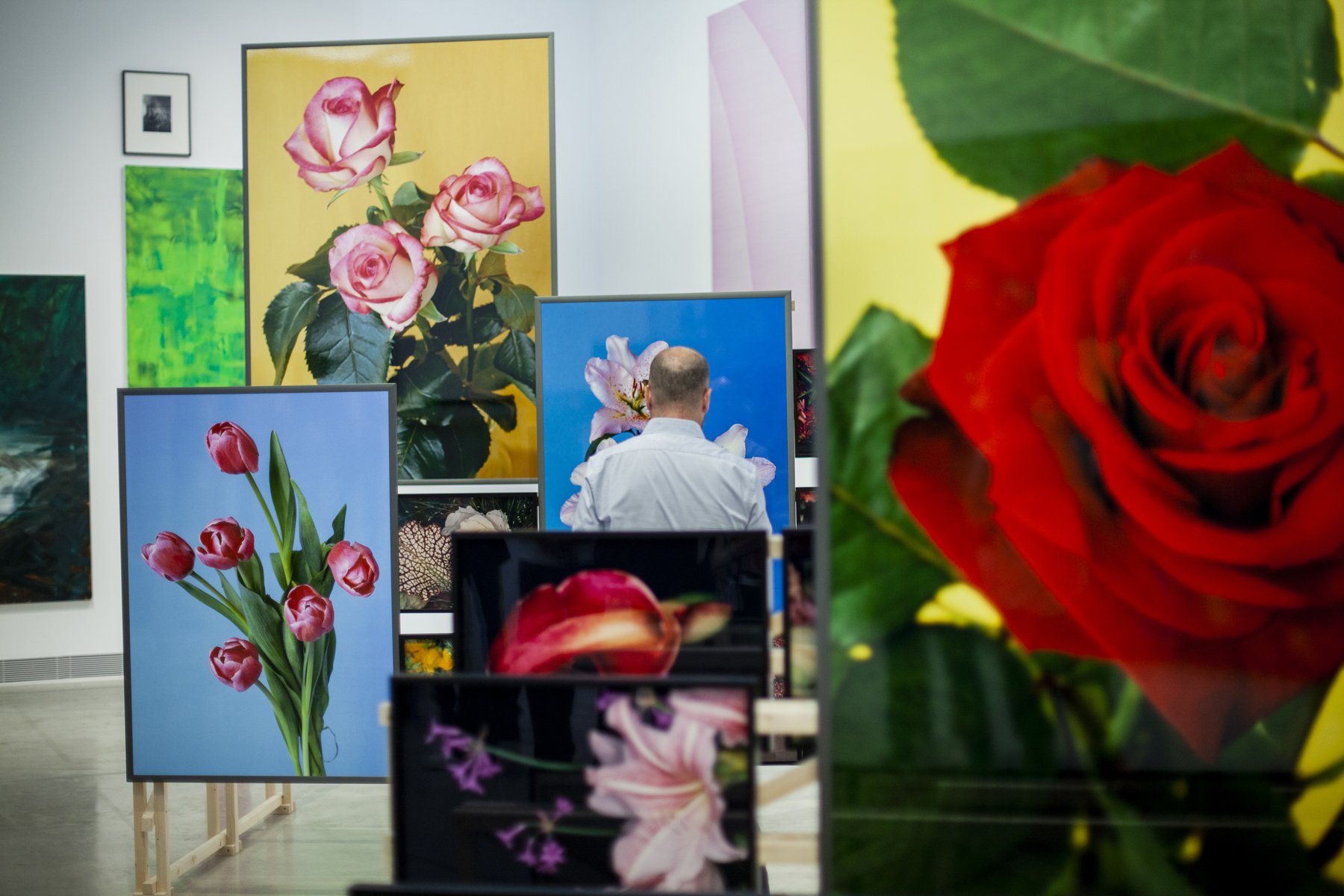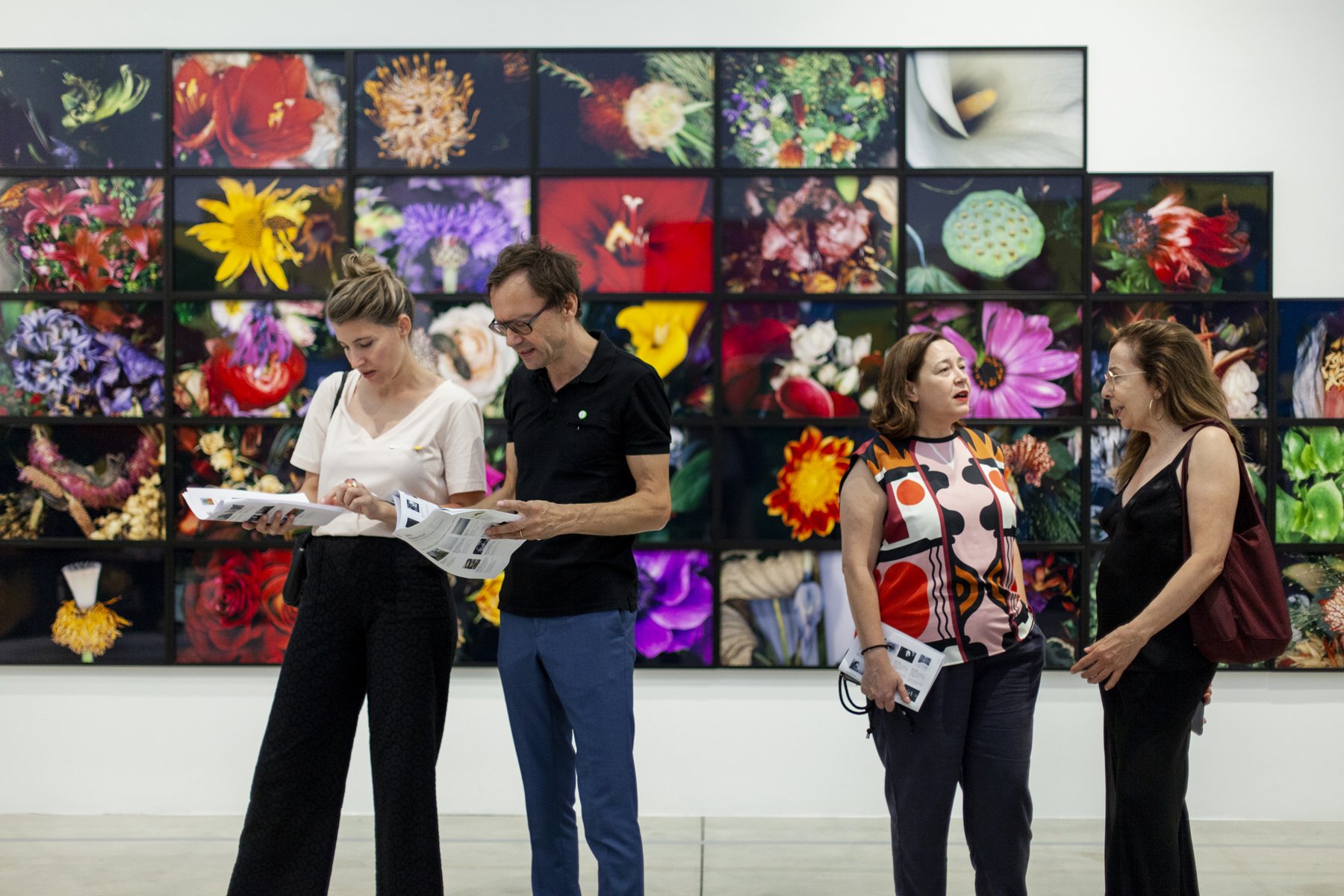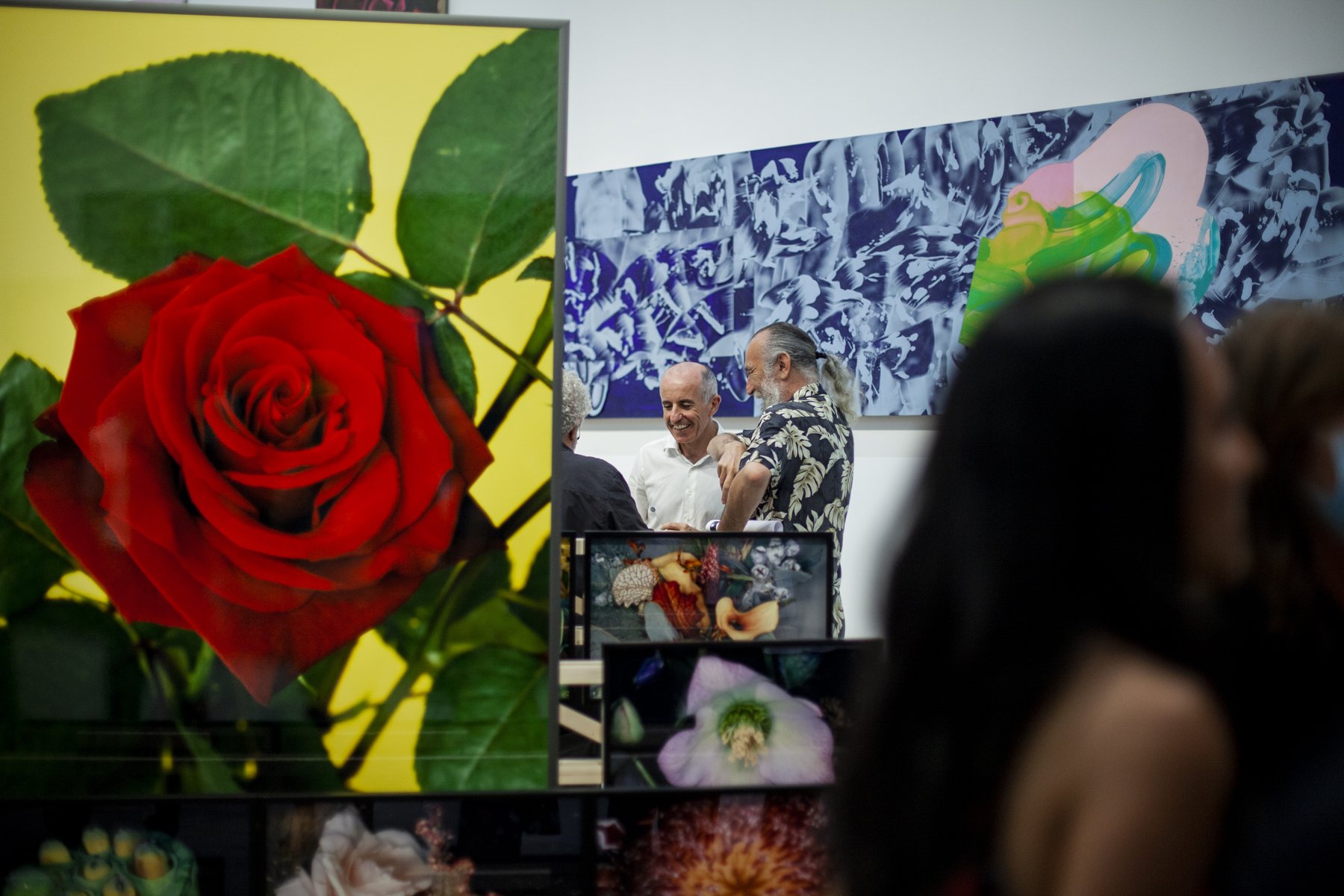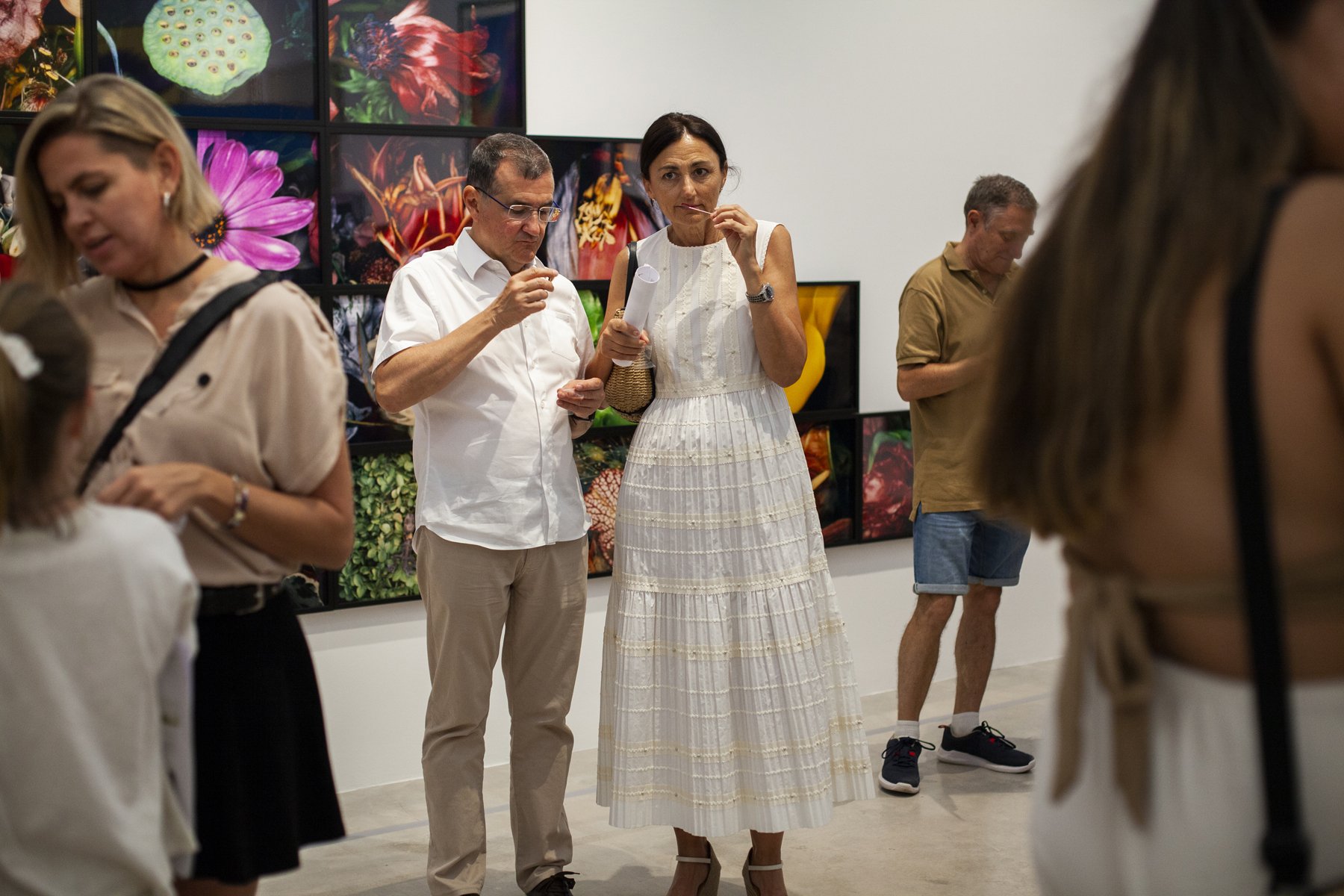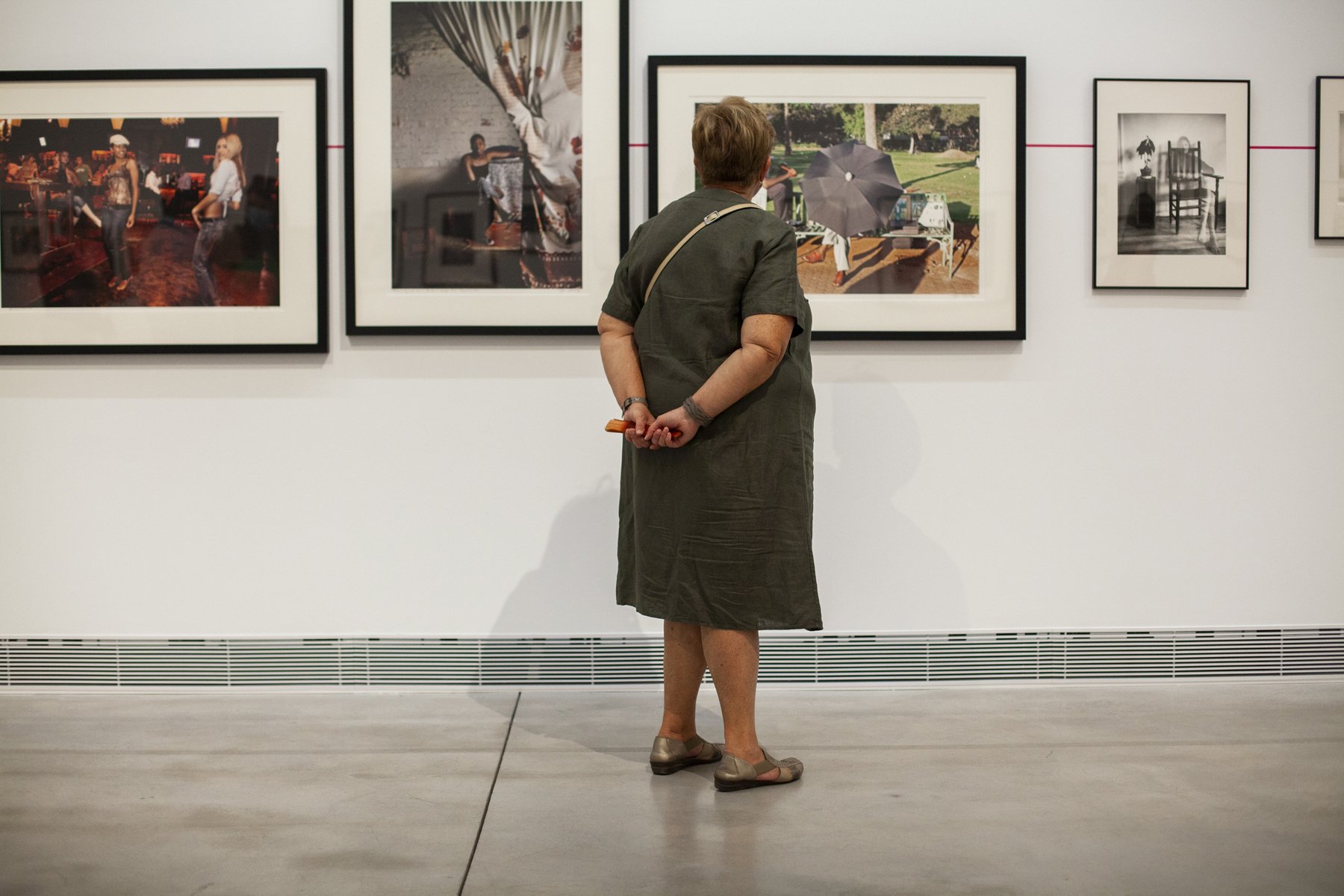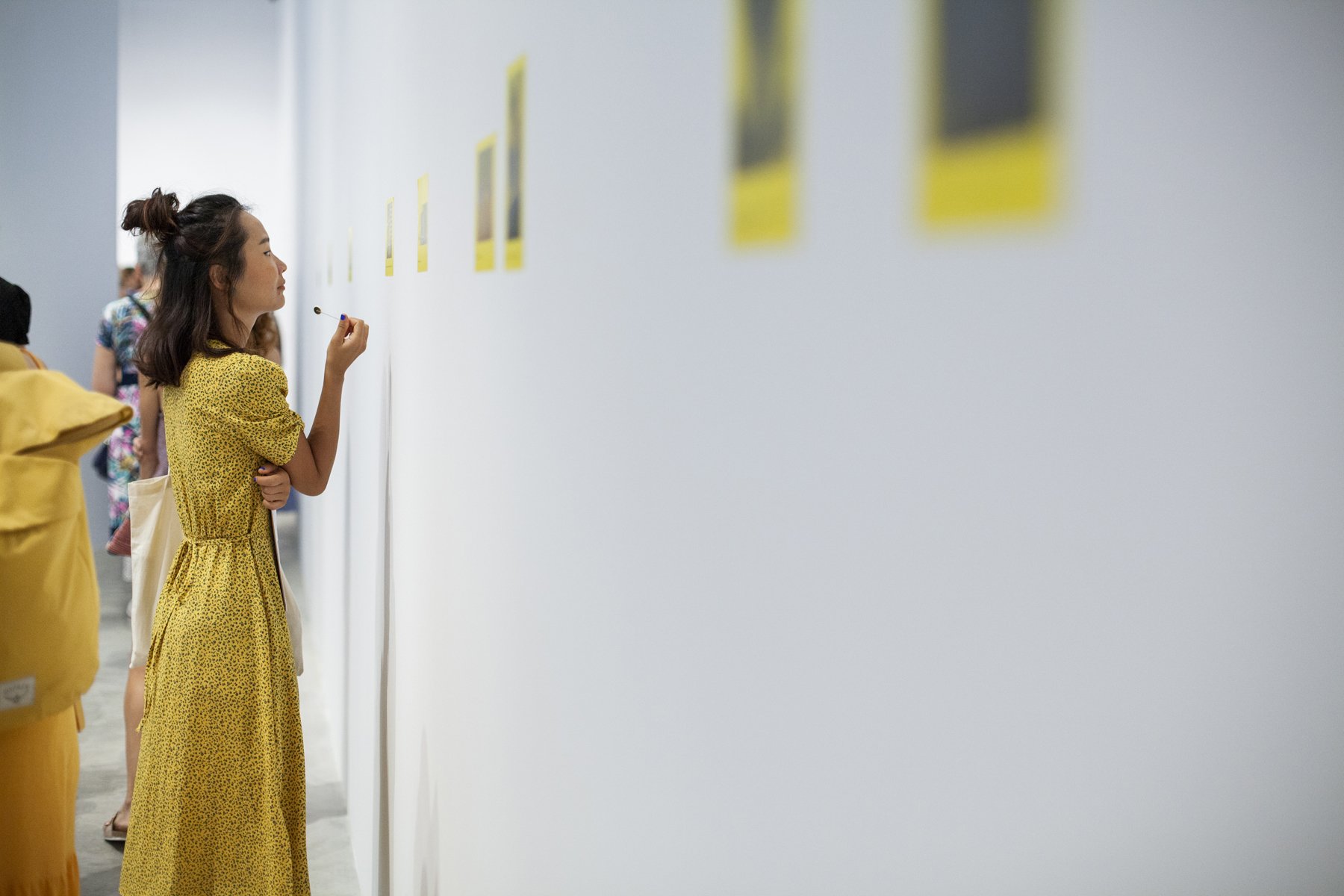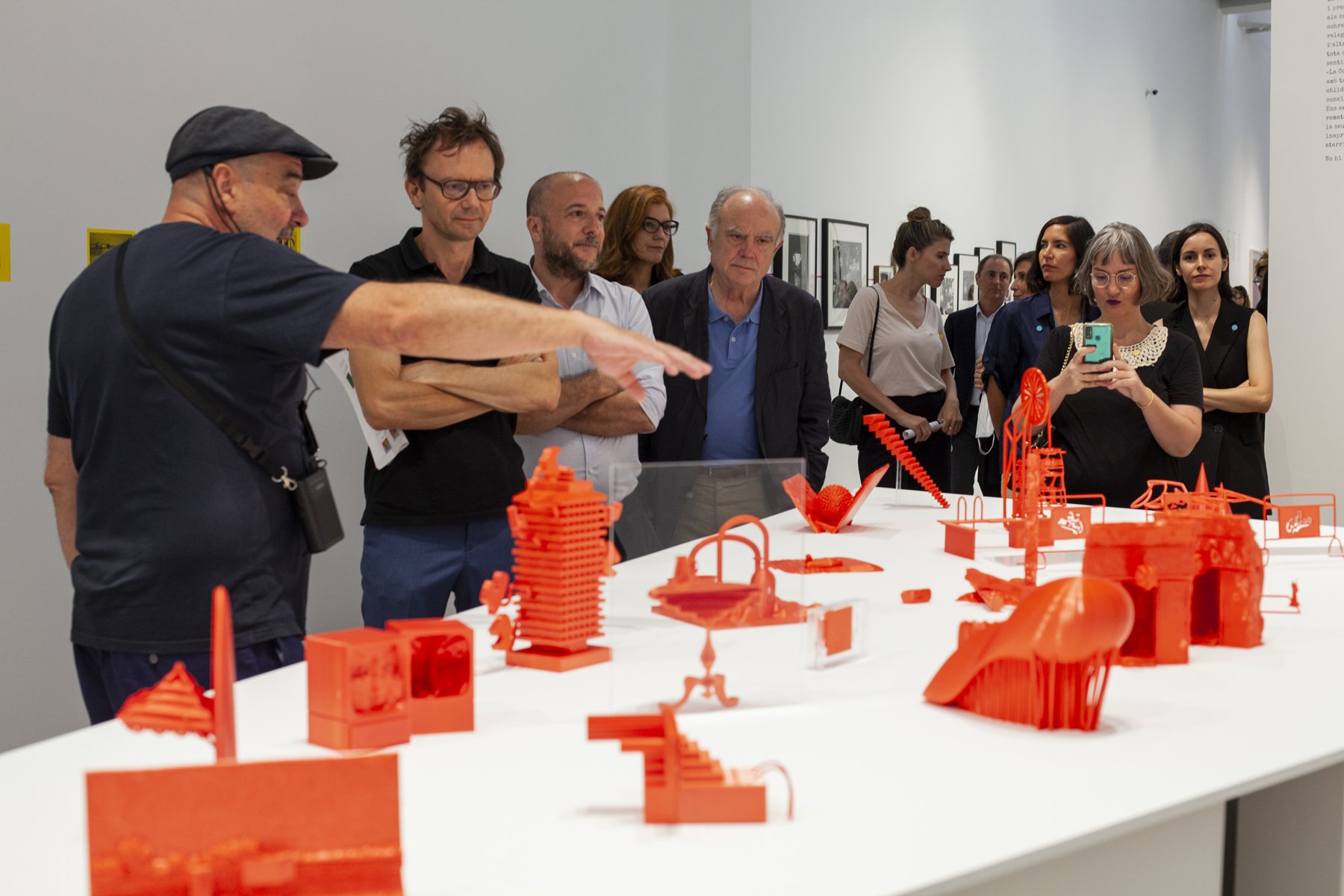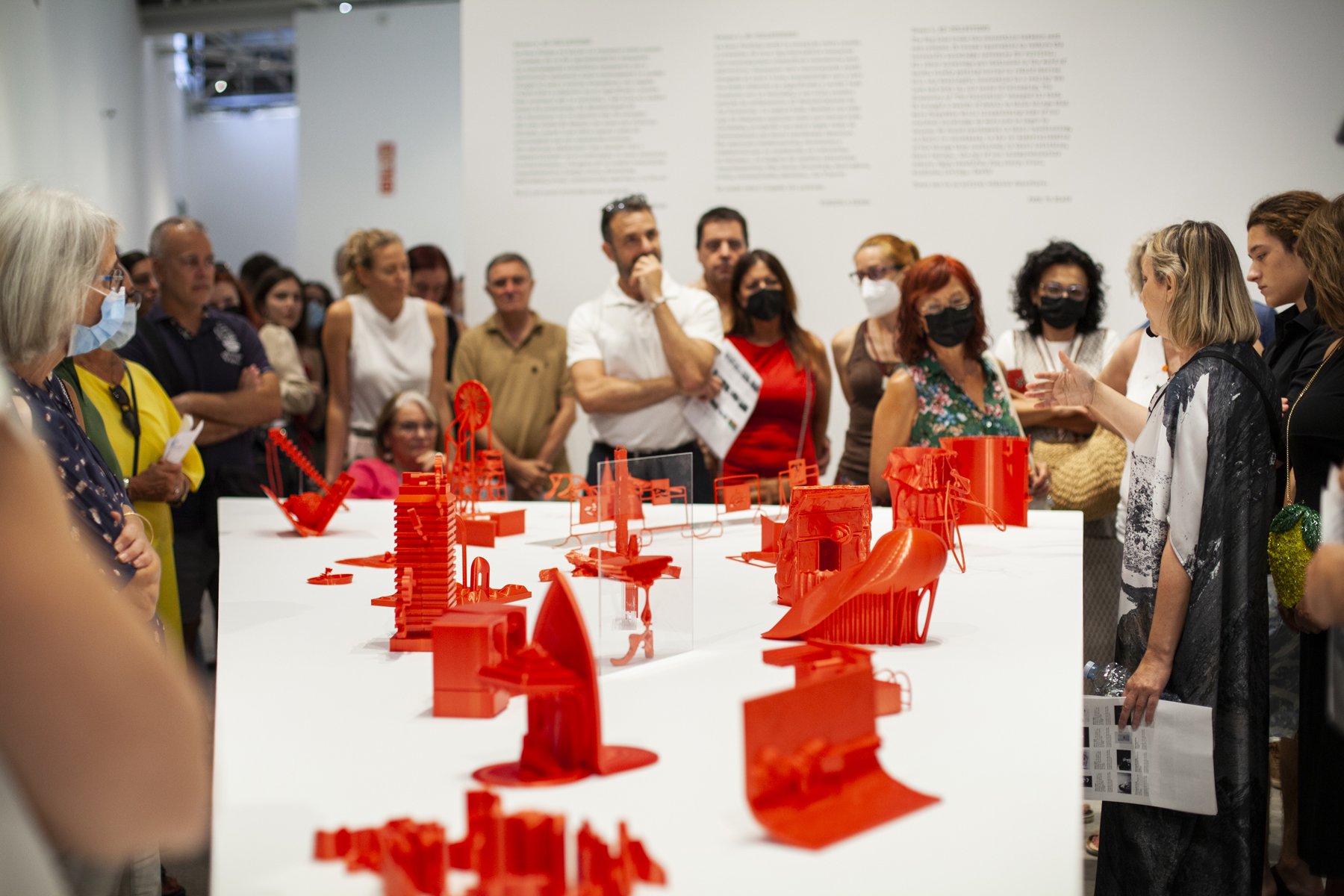Earth: A Retrospective
“Earth: A Retrospective” at Bombas Gens, Valencia _ Jul 2022 / Dec 2023
Within the framework of València World Design Capital 2022, Bombas Gens Centre d'Art – under the artistic direction of Sandra Guimarães— has invited El Ultimo Grito to create an exhibition proposal based on the Per Amor a l'Art Collection. In this exhibition, design will operate as a conceptual and material narrative and curatorial device, sketching a sort of language of the interlude, engaging in a dialogue that opens a speculative approach into the nature of this collection and its individual works.
Retrospective means "to look back"… We are looking back at Earth from an undetermined point in a future space-time… A point in which our memory of Earth is broken and our only link back to it is a collection of images where signified and signifier become blurred; where our gaze romanticises them into narratives seeking to find meaning beyond their historicity… We lost the stories, the details needed to reconstruct them, we bastardise their narratives for our own benefit, in a fledging attempt to understand, to dream. So the collection becomes material, like sequences for a movie mixing past, present and future, wherever these may lay. Lev Kuleshov developed what he described as “creative geographies”, an editing concept describing how in the editing process shots are collided generating seamless new landscapes where the narrative elapses.
Every collection, whatever it may aggregate, also constitutes a creative geography in itself. As a construct, it generates its own version of reality. Both ‘the collected’ and ‘the rejected’ or ‘unobtained’ act in unison to define what we see, and in doing so, contribute to creating and supporting their own history, or a story of that world.
Earth, A Retrospective showcases ‘The Collection’ as a “constructed geography”, a physical movie generated in the present by trying to reimagine a past from an unknown future. It is devided in four scenes: Arrivals, Sequencing, Time Machine and Recollections.
Arrivals is an introduction sequence, its purpose is to deshorientate the visitor, it could be either the begining or the end. Sequencing offers us short narrative stories, speculations, reinterpretations of the future myths through images of the past. The last of the sequences acts as an interlude, synthetic garden encapsulated in synthetic aromas. Time Machine looks at the past, it is ‘a collection within the collection’, a selection of photographs where people are looking directly at the camera, it is this moment that the break in time disappears. Finally Recollections it speculates with those objects contained within the images that our future selves work to discern. The Collection becomes the source of new material, this section it is expanded through the duration of the exhibition as part of the education programme.
“Earth: A Retrospective” features works of the Per Amor a l’Art Collection such as Nobuyosi Araki, Bernd and Hilla Becher_EUG-Arno Mathies, Bleda y Rosa, Iñaki Bonillas, Pedro Cabrita Reis, Joan Cardells, Oscar Carrasco, Imogen Cunningham, Tacita Dean, Koji Enokura, Elger Esser, Hans-Peter Feldman, Inma Femenía, Lee Friedlander, Carlos Garaicoa, Paul Graham, Jonas Mekas, Mathew Mercier, Matt Mullican, Nicolás Ortigosa, Thomas Ruff, Armando Salas Portugal, Aaron Siskind and El Ultimo Grito, among others.
As part of the exhibition there will be an ongoing education programme in the space run by students of the Valencia University. Working from photographs of the Per Amor A L’Art Collection participants take a role between that of a detective and a dreamer to produce materialisations, interpretations and translations of what is depicted in the images. This section opens with a collection of 3D printed objects produced by the students of the master Space and Communication at HEAD—Genève.
Scene 1_ARRIVALS
There is no arrival without departure, but as we know, there can be departures without arrival. They extend in time through generations for whom both origin and destination become entangled, as their memory of “the before” dissolves into the purpose of “the after”. We had departed well before we ever knew, riding on the jet stream of a forever-fading sense of belonging, awaiting to fulfil our destiny.
A jetty reaching forth into the unknown. Fading lights that eventually die out. A final thought. The distant laughter of children playing. Looking up. A blinding light bleaches all that was once known to us. Chromatic dissolves. Marks made in darkness, a line, debris, residual time. Escape!
FADE TO BLACK
Scene 2_SEQUENCING
How to know what others have lost or abandoned? How to recall those places that we never knew? How to imagine a breeze of air, the scent of a flower or the suffocating smoke of consuming fires? Who are these people? So many people… physically familiar, but that’s all, we can hardly recognise ourselves on them…are we still human? Why are they laughing or fighting, loving or hating, building or destroying... can we be nostalgic about what we’ve just learned… Earth…
WIPE TO RED
ONE: Flooding, fires… the end of the world. A roaring car, defiantly crossing the dessert for the last time… a last gorgeous sunset… will never make it.
TWO: A secret door. Uprooted earthworks, chiselling away the rocks that one day will be used against them. Carving out underground worlds lying bare like a molted snakeskin, silent witness to times gone or yet to come. Underground plans for a secret possible ending.
THREE: Suspicion. Disbelief. Dissent. Violence. Oppression. Apathy. Complacency. Defiance… A man offers conciliatory cigarettes to the riot police. They refuse. A rock is thrown piercing the air with its frantic spin… Suddenly it stops… floating… it opens its eyes and its you… you smile and slowly dissolve like a drop of ink in water… Unaffected, a woman crosses the police line… she is late… nihilist protests…
FOUR: People stops to witness the weightless flight into the depths of space of the first chosen ones. No one knew what that meant yet, so everything carried on as usual. Not really noticing that people were being pulled and projected towards the unknown. People either hid or waited anxiously to be the chosen. Finally, the last person awaits its turn, and manages to create a last memory of Earth. And as they embark in a flight of no return they realise that they are saying goodbye not only to their planet but to the vista of the universe.
FIVE: We watch an old psychodrama. Characters knowingly trapped in a space without exit, condemned to relive tediously the same existential tensions. We could relate… We were also trapped in the purpose of our quest. Hermetic, darkly scanning, silently running…
SIX: They knew… there it was hiding in plain sight EVERYTHING IS A LIE… that’s how they lived… an idea that resonated in our dreams too…
SEVEN: Re-enacting nature was an obsession, for us is a necessity. A garden with flower beds and herbaceous borders, a statue and even a folly at the top of the hill… fulfilled capabilities.
WIPE TO GREEN
Scene 3_TIME MACHINE
We see you.
It feels strange
to delve into your eyes.
That stolen moment
travelling through time
like the light of a dead star.
A time machine.
They look forth
awaiting no response,
we look back
desperately searching
for one.
Scene 4_ RE-COLLECTIONS
The Big Loss broke the connection between past and present. It became imperative to restore the scientific knowledge necessary for survival. All other knowledge got stationed in the word of mouth, slowly getting buried in retold stories till any meaningful connection to a reality was lost and with it, our sense of belonging. The discovery of “The Collection” changed all that. It brought a wealth of detail to those things that were forgotten while illuminating some of our residual knowledge we were now so eager to unlock. We found excitement in their questioning, in their re-enactment, in the re-materialisation of the things they contained, in their intuition, their beauty… the joy of our incomprehensible nature. Ugly, beautiful, fun, scary, cruel, mindless, loving… Earth!
There can be no arrival without departure.
FADE TO BLACK
Scene_POST CREDITS
Working with a selection of photographs from the Per Amor a l’Art Collection, CAD (computer aided design) and 3D printing technology, a group of students (under the direction and guidance of El Ultimo Grito and HEAD’s MA Space and Communication academic input: Arno Mathies and technical support Romain Chappet and Antoine Floege) produced a first series of objects: materialisations, interpretations and translations of what is depicted in the images.
Given the history of social action and the exhibition programme of Fundació Per Amor A l’Art – Bombas Gens, the intention of this collaboration was not only to create that archive of objects for the exhibition, but to generate a format for a workshop that could be up and running during the whole duration of the exhibition. The outcomes produced by participants in the workshop will be added to the original archive thus making the archive an evolving piece of work product of the input of a diverse group of participants.
During the exhition a group of students from the Departament of Sculpture II at Facultat de Belles Arts de Sant Carles (UPV) Universitat Politécnica de València, directed by Laura Silvestre García, Vicedecana de Cultura de la Facultad de Bellas Artes and the technical support of Raúl León Mendoza and Leo Pum, reinterpreted the brief in order to create a second series of objects. This time they worked directly from works exhibited in Earh: A Retrospective.
Re-collections Archive Lab: Speculative explorations of The Collection.
Workshop brief: Imagining the third dimension _A dialogue between speculation and reality. The connection between the past and the present is broken, the only thing left is a series of photographs from which to reimaging, workout, reconstruct a past. Positioned between a detective and a dreamer’s world, we need to discern that contained within the images by reconstructing those objects and contexts never experienced before. If the ways in which we make sense of the world are based on our personal experience and memory… How do we workout any context, any behaviour, any object when we are not familiar with what is depicted?
The idea of the Re-collections Archive Lab was born from a desire to bring forward to the public of the World Capital of Design Valencia 2022 a dialogue between photography and a technology that not only is widely available, but that is shaping the present and future of what we understand as industrial production towards a decentralised and accessible production.
MA Space and Communication @ HEAD-Geneva
Sculpture II. Fine Arts Degree @ Facultat de Belles Arts de Sant Carles (UPV)
